Meeting Rupert in Canterbury and some history lessons on England
After breakfast I took an early morning train from Oxford station via Reading to London where I 1st had to drop my gear at the hostel. I had booked a bed in a hostel annex pub this time ?
It was quite a wet and rainy day.
After checking in The Wandelgek left and took the metro to Kings Cross station and from there again a train towards Canterbury.
In Canterbury The Wandelgek immediately walked towards the Canterbury Heritage Museum, which had been closed during his 1st visit to Canterbury. But now it was open.
The Canterbury Heritage Museum
The Canterbury Heritage Museum (formerly the Museum of Canterbury) was a museum in Stour Street, Canterbury, South East England, telling the history of the city. It was housed in the 12th-century Poor Priests’ Hospital next to the River Stour. The museum exhibited the Canterbury Cross and contained a gallery dedicated to Rupert the Bear, whose creator Mary Tourtel lived in Canterbury. It held regular events and exhibitions of local and national interest. The museum closed in 2018.
History
William Masters
The museum was founded by William Masters, a local nurseryman specializing in exotic plants, who went on to serve as Hon. Curator from 1823 to 1846.
Poor Priests’ Hospital
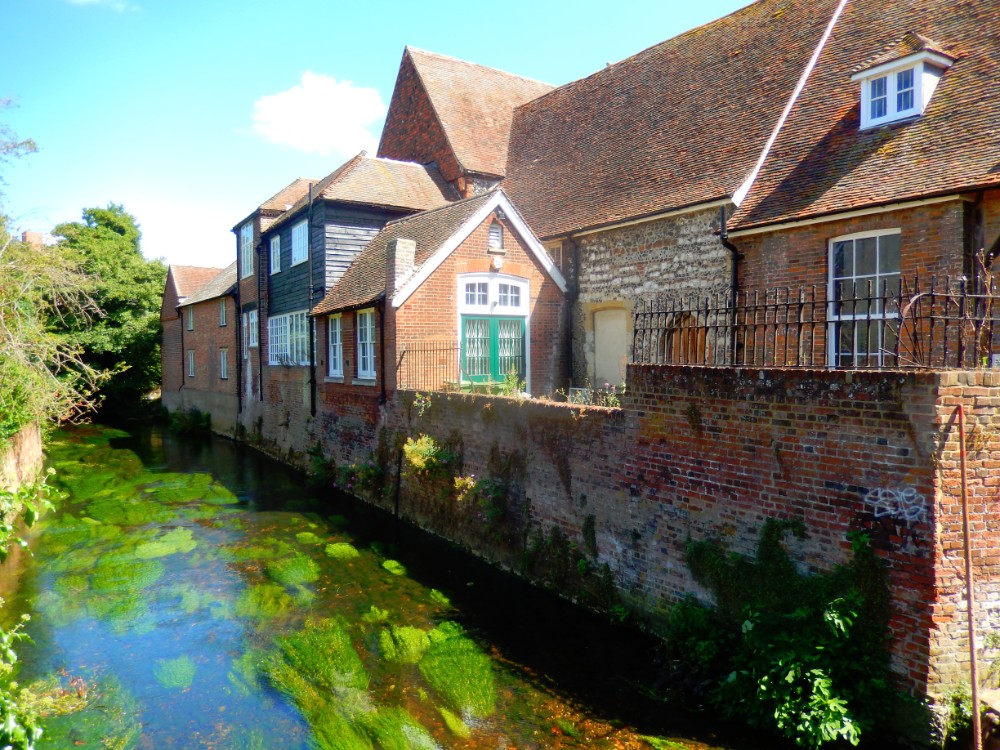 The museum is in the medieval Poor Priests’ Hospital with two adjoining buildings, backing on to the River Stour. From 1174 to 1207 the long, low block parallel to Stour Street was the stone house of a tanner, a rich minter and the minter’s son, Alexander, who converted it into an almshouse in the name of the Virgin Mary for old and poor priests. The priests used the house as a hall, living, eating and sleeping around a central fire.
The museum is in the medieval Poor Priests’ Hospital with two adjoining buildings, backing on to the River Stour. From 1174 to 1207 the long, low block parallel to Stour Street was the stone house of a tanner, a rich minter and the minter’s son, Alexander, who converted it into an almshouse in the name of the Virgin Mary for old and poor priests. The priests used the house as a hall, living, eating and sleeping around a central fire.
In 1373 the solar and undercroft were added opposite the present gateway, to give privacy on the upper floor to the master of the hospital. At the other end of the original hall was the service quarter for servants with kitchen, pantry and buttery. Next to the solar is the Chapel of St Mary, which was designed as a single open space with a back kitchen. Two upper floors were later inserted, with windows and chimney. This set of buildings became secular in 1575: a school, poorhouse, workhouse and clinic.
The present museum was previously at the Beaney as the Heritage Museum, then was established in Stour Street in 1987 to celebrate local history, and the building restored to show the interior crown-post roof.
Closure
The museum was closed in 2018 following a campaign by local institutions, including Canterbury Archaeological Trust, to keep it open.
Exhibits
This also means that this blog will be one of the last memories of that museum. The Wandelgek visited the museum in the summer of 2016 and he was quite impressed by the Canterbury Heritage Exhibit, but he had specially travelled to Canterbury to find traces of the life of Mary Tourtel, the first author of the Rupert Bear Stories and to find any information he could on Rupert Bear and his little friends living in Nutwood.
Canterbury Heritage Museum
Exhibits in galleries and displays date from pre-Roman to the present, and are arranged as a time walk from the earliest to latest:
Roman Canterbury
Anglo-Saxon Canterbury
The story of Thomas Becket
In the museum was a beautiful tapestry (a bit like the famous Bayeux tapestry) illustrating the life and death of Thomas Becket. The tapestry covered three walls in an exhibition room…
During my 1st visit in Canterbury, I visited the Franciscan Greyfriars house and beautiful garden which is mentioned below…
I also visited the Canterbury Cathedral during my 1st visit in Canterbury and in the cathedral I found the tomb of the black prince near the spot where once Thomas Becket’s tomb stood…
The Tudor Dynasty
Henry VIII
Elizabethan Canterbury
Christopher Marlowe
The Pilgrim fathers and the voyage of the Mayflower
Thomas Becket….again…
Canterbury life through the ages
20’s
30’s
The Invicta Steam Locomotive
Invicta is an early steam locomotive, built by Robert Stephenson and Company in Newcastle-upon-Tyne during 1829. She was the twentieth locomotive built by railway engineers the Stephensons, being constructed immediately after Rocket. Invicta marked the end of the first phase of locomotive design, which had started with Richard Trevithick’s Pen-y-Darren locomotive of 1802. Stephenson’s next locomotive, Planet was to form the basis of the modern steam locomotive.
Invicta hauled its first train on the Canterbury and Whitstable Railway on 30 May 1830, this occasion marked the inauguration of the first steam-powered passenger service.
60’s
Rupert Bear Museum
The Rupert Bear Museum was opened in 2003 with a £500,000 Heritage Lottery Fund grant. The creator of Rupert Bear, Mary Tourtel, grew up and attended art school in Canterbury, and a 1921 first-edition Rupert annual is one of the exhibits. The Rupert Bear Museum involves activities for children on the themes of play, entertainment and education. It includes the Bagpuss and Clangers display with items from the original television shows, such as the Emily shop-window from the opening scene of Bagpuss, because its creators Peter Firmin and Oliver Postgate filmed the programmes at Firmin’s house near Canterbury.
The museum is supported by the Heritage Lottery Fund and Express Newspapers.
Rupert Bear
Rupert Bear is a children’s comic strip character created by the English artist Mary Tourtel and first appearing in the Daily Express newspaper on 8 November 1920. Rupert’s initial purpose was to win sales from the rival Daily Mail and Daily Mirror. In 1935, the mantle of Rupert artist and storyteller was taken over by Alfred Bestall, who was previously an illustrator for Punch and other glossy magazines. Bestall proved to be successful in the field of children’s literature and worked on Rupert stories and artwork into his 90s. More recently, various other artists and writers have continued the series. About 50 million copies have been sold worldwide.
The comic strip was, and still is, published daily in the Daily Express, with many of these stories later being printed in books, and every year since 1936 a Rupert annual has also been released. Rupert Bear has become a well-known character in children’s culture in the United Kingdom, and the success of the Rupert stories has led to the creation of several television series based on the character.
The Rupert Bear Museum was opened in 2003 with a £500,000 Heritage Lottery Fund grant. The creator of Rupert Bear, Mary Tourtel, grew up and attended art school in Canterbury, and a 1921 first-edition Rupert annual is one of the exhibits. The Rupert Bear Museum involves activities for children on the themes of play, entertainment and education. It includes the Bagpuss and Clangers display with items from the original television shows, such as the Emily shop-window from the opening scene of Bagpuss, because its creators Peter Firmin and Oliver Postgate filmed the programmes at Firmin’s house near Canterbury. The museum is supported by the Heritage Lottery Fund and Express Newspapers.
Characters and story
Rupert is a bear who lives with his parents in a house in Nutwood, a fictional idyllic English village. He is drawn wearing a red jumper/sweater and bright yellow checked trousers, with matching yellow scarf. Originally depicted as a brown bear, his colour soon changed to white to save on printing costs, though he remained brown on the covers of the annuals.
Most of the other characters in the series are also anthropomorphic animals (animals with humanoid forms). They are all scaled to be about the same size as Rupert, regardless of species. Rupert’s animal friends are usually referred to as his “chums” or “pals.” Aside from his best friend Bill Badger, some of the most enduring pals are an elephant (Edward Trunk), a mouse (Willie), Pong-Ping the Pekingese, Algy Pug (who actually pre-dates Rupert), Podgy Pig, Bingo the Brainy Pup, Freddie and Ferdy Fox, the identical twins Reggie and Rex Rabbit, and Ming the dragon. The kindly Wise Old Goat also lives in Nutwood, and helps Rupert in some of his adventures. One of the most unusual and evocative characters is Raggety, a woodland troll-creature made from twigs, who is often very grumpy and annoying. In the 2006 television revival of the series, Raggety has been transformed into a friendly elf with broken English. There is also a recurring country Police Officer who is an adult dog named PC Growler.
There are also a few human characters in the stories, such as the Professor (who lives in a castle with his servant, Bodkin), Tiger Lily (a Chinese girl), her father “the Conjuror,” and several less frequently occurring characters such as Sailor Sam, Gaffer Jarge, Captain Binnacle and Rollo, the Gypsy boy. There is also a recurring Merboy.
The series often features fantastic and magical adventures in faraway lands. Each story begins in Nutwood, where Rupert usually sets out on a small errand for his mother or to visit a friend, which then develops into an adventure to an exotic place such as King Frost’s Castle, the Kingdom of the Birds, underground, or to the bottom of the sea. Sometimes one of the Professor’s inventions opens the door to one of Rupert’s adventures. At the end of the story Rupert returns to Nutwood, where all is safe and well, and where his parents seem perfectly sanguine about his adventures.
Style
Unlike most modern comic strips, Rupert Bear has always been produced in the original form of strip with illustrations accompanying text, called “text comics”, as opposed to text being incorporated into the art in speech bubbles etc.
Bestall developed the classic Rupert story format: the story is told in picture form (generally two panels each day in the newspaper and four panels to a page in the annuals), in simple page-headers, in simple two-line-per-image verse and then as running prose at the foot. Rupert Annuals can therefore be “read” on four levels. He also established the shape and form of the Rupert stories.
History
Rupert’s unspectacular debut was in a single panel, the first of 36 episodes of the story “Little Lost Bear” written and drawn by Tourtel.
Bestall expanded the stories and plots of Rupert; and in addition to precise and detailed drawings for the Daily Express panels he also created beautifully crafted illustrations in the Rupert Annuals. Bestall drew the Rupert stories for the Daily Express until 1965; and continued to illustrate the covers for the annuals until his retirement in 1973. Much of the landscape in Rupert is inspired by the Vale of Clwyd in North Wales (Alfred Bestall himself lived for many years in the north Welsh village of Beddgelert)(the Professor’s castle is based on Ruthin Castle), the Sussex Weald and East Devon. Bestall’s successor was Alex Cubie. Cubie created Rupert annual artwork between 1974 and 1977. His images are recognisable from the thicker black outlines around the characters and the use of more vibrant colours than Bestall employed. A Rupert Annual is still produced every year and Rupert appears each day in the Daily Express. In 1978 his new adventures became illustrated by John Harrold; his drawings in the annual were usually coloured by Gina Hart. In 2008 John Harrold was succeeded by Stuart Trotter and a new style of annual (sans serif typeface) with a more modern Rupert to tie-in with the CGI-animation Rupert Bear, Follow the Magic…, began.
The Rupert Annual for 1960 contained a story called Rupert and the Diamond Leaf, in which he visits “Coon Island”, whose inhabitants are little “Coons”. The Coons previously appeared on the cover of The New Rupert: The Daily Express Annual, 1954 and in the interior story Rupert and the Castaway. The first appearance was in the 1946 soft cover summer special Rupert on Coon Island.
Rupert appeared in Paul McCartney’s 1984 music video “We All Stand Together”; McCartney also made an animated video starring Rupert called Rupert and the Frog Song. The short film, produced by McCartney won the British Academy Award.
Tourtel’s home was in Canterbury in Kent, and the Rupert Bear Museum, part of the Museum of Canterbury, has collections that cover much of the history of Rupert and his friends, as well as Tourtel and other illustrators. The museum is geared toward families and those interested in the general history of Rupert.
On 31 October 2005, UK Media Group Entertainment Rights (which was later bought by Boomerang Media and then DreamWorks Animation) purchased a majority interest in the Rupert Bear character from the Daily Express. There are plans for a film, books, Limited Edition Prints and DVDs that will see Rupert joined by new friends in addition to established characters.
We all stand together
One thing is certain we’ll never give in
Side by side, hand in hand
We all stand together
But what’s the point on a beautiful night?
Arm in arm, hand in hand
We all stand together
La la la la
Walk in the night
You’ll get it right
One thing is certain we’ll never give in
Side by side, hand in hand
We all stand together
“We All Stand Together” (sometimes referred to as the Frog Song or the Frog Chorus) is a song by Paul McCartney and the Frog Chorus.
Rupert and the Frog Song
Rupert and the Frog Song is a 1984 animated film based on the comic strip character Rupert Bear, written and produced by Paul McCartney and directed by Geoff Dunbar. The making of Rupert and the Frog Song began in 1981 and ended in 1983. The film was released theatrically as an accompaniment to McCartney’s feature film Give My Regards to Broad Street. The song “We All Stand Together” from the film’s soundtrack reached No. 3 when released in the UK Singles Chart. It was released in 2004 as one of the segments of Paul McCartney: Music & Animation.
Plot
Rupert Bear decides to head off for a walk on the hills. With his Mother’s blessing, he sets off for a jolly trip, encountering his friends Edward Elephant and Bill Badger along the way, who are too busy to join him. As Rupert reaches a hill, he props himself up against the trunk of an oak tree and enjoys the glory of the countryside. Suddenly, he finds himself enveloped by a rainbow cloud of butterflies previously masquerading as leaves on the oak tree, and all of them swarm away from the leafless tree towards a rocky outcrop; Rupert cannot resist following them. As he leaves, a large white barn owland two black cats decide to follow him.
Upon the rocks, Rupert finds a large number of multicolored frogs. He walks into a cave behind a waterfall and sees three signs: “Frogs only beyond this point”, “Everything except frogs must be kept on a lead”, and “Guard frogs operating”. He sneaks into the palace, trying to avoid getting caught by the frog guards. There, he witnesses the Frog Song, an event that occurs only once in a few hundred years in which various frogs of all shapes and sizes come together and sing “We All Stand Together”. Around the end, the frog King and Queen rise out of the water before the crowd to finish off the song. After a thunderous applause from the frogs, the owl, who had followed Rupert to find out where the frogs were hiding, launches itself for an attack on the royals, but Rupert manages to warn the frogs in time and they all quickly retreat, leaving the owl and the cats empty-handed and the palace completely empty. After hearing his mother call him, Rupert excitedly rushes home to tell his family about what he saw.
The film beneath is displayed as a looping video at the Museum.
The film was based on a frontispiece by Alfred E. Bestall, which was included in 1958’s Rupert Annual…
The image above and beneath are from my own Rupert Bear collection, not the museum collection.
After his visit to the museum, The Wandelgek had planned to visit another spot, linked to Rupert and Mary Tourtel.
The Wandelgek walked back to Ivy Lane where he had visited Mary Tourtel’s home before. Now he walked on to the end of Ivy Lane and went left on Lower Chantry Lane until he reached a carousel where he turned right into Longport. The road went up and he followedc it until he reached St. Martin’s Avenue on the left. Following this he walked right to the gates of a small graveyard around the oldest church in the English-speaking world: St. Martin’s Church.
Mary Tourtel’s grave
Mary Tourtel (born Mary Caldwell on 28 January 1874 – 15 March 1948) was a British artist and creator of the comic strip Rupert Bear. Her works have sold 50 million copies internationally.
Biography
Tourtel was born Mary Caldwell, the youngest child of Samuel Caldwell, a stained-glass artist and stonemason, and his wife Sarah. Mary studied art under Thomas Sidney Cooper at the Sidney Cooper School of Art in Canterbury (now the University for the Creative Arts), and became a children’s book illustrator. In 1900 she married an assistant editor of The Daily Express, Herbert Bird Tourtel, at Eton.
The Wandelgek walked passed St. Martin’s church because he was focussed on visiting Mary Tourtel’s grave 1st. There were lots of very old gravestones , specifically in the area near the gate and around the church…
Then he reached the grave. Mary Tourtel not only invented Rupert, but in The Wandelgek’s opinion she also created some of the best stories. She was followed by Alfred Bestall of whom lots of people think he was the better illustrator and of course he enlarged the universe of Rupert with some characters that kept returning in lots of stories. Also he invented the village of Nutwood where Rupert lived. But there was one important thing that he neglected, which made the stories by Tourtel better. Tourtel’s stories were much scarier, sometimes a bit nightmarish, because of the utter darkness of the forests she made Rupert travel through, because of the intense wickedness of the witches Rupert had to defeat, because of the pure evil of the dwarfs that crossed Rupert’s path and because of heartfelt loneliness when Rupert was imprisoned in a deep underground cell. Where Bestall and later authors made the stories more cozy and filled with talking animal friends surrounding Rupert living in a pitoresque town at the edge of a forest, Tourtwl made them a bit uncanny and they were therefore way more memorable.
Tourtel’s stories had an uneasieness in In most later stories Rupert goes on an adventure starting on his frontdoor step. But in Tourtel’s stories Rupert gets abducted and is pulled away from home without choice into a dark fairy tale like adventure and there are real dangers to face. I had started reading her books when my parents had bought enough chocolate spread (Dutch chocoladepasta). There was this particular brand that had a commercial slogan which claimed chocolate spread was healthy for bears (Dutch: “Pastachoca beregoed”). There were tiny bears depicted on the packing. They also had small stamps that could be collected and with a certain amount of those stamps, a Rupert Bear book could be purchased with reduction. That’s how I got my 1st “Bruintje Beer” book (left in the picture below) in oblong size and I adored it.
And now I could pay a little homage to its author…
Rupert Bear was created in 1920, at a time when the Express was in competition with The Daily Mail and its then popular comic strip Teddy Tail, as well as the strip Pip, Squeak and Wilfred in The Daily Mirror. The then news editor of the Express, Herbert Tourtel, was approached with the task of producing a new comic strip to rival those of the Mail and Mirror and immediately thought of his wife Mary, already an established author and artist. Rupert Bear was the result and was first published as a nameless character in a strip titled Little Lost Bear on 8 November 1920.The early strips were illustrated by Mary and captioned by her husband, and were published as two cartoons a day with a short story underneath. Rupert was originally a brown bear until the Express cut inking expenses giving him his iconic and characteristic white colour.
In 1931 Herbert Tourtel died in a German sanatorium, and Mary retired four years later in 1935 after her eyesight and general health deteriorated. The Rupert Bear strips were continued by a Punch illustrator, Alfred Bestall.
Mary Tourtel died on 15 March 1948, aged 74, at the Kent and Canterbury Hospital and was buried with her husband at St Martin’s Church, Canterbury; they had no children. In 2003, the Canterbury Heritage Museum, which closed in 2018, opened a special wing dedicated to Rupert Bear.
I had been at the grave of Tolkien and his wife in Oxford. The grave was well visited, but here at this little ancient graveyard, a bit out of town, probably a bit to far to visit for tourists visiting the cathedral, I saw a decaying grave that clearly was not often visited at all. There were no flowers or books left in tribute by admirers. In my previous Canterbury blog I already mentioned that it was hard to find any traces of Mary Tourtel in Canterbury and the Rupert Bear museum was not open all week. I found this quite hard to believe knowing how popular her books still are. Every year new book material is still published!!! And on this day I finally had been able to visit the museum and I’m very glad I did, because it completely closed its doors two years later. No Rupert Bear museum in Canterbury anymore. 🙁
I think the city should not only focus on the cathedral but also on its other legacy.
The Wandelgek now turned towards the old church and wanted to walk back to the graveyard entrance…
He had been completely focused on finding the grave and now he suddenly looked to what else was in front of him and in great awe he saw that he had managed to ascend a hill that was overlooking medieval Canterbury and it opened a truly magnificent view on the cathedral…
Just a few seconds ago, The Wandelgek had thought about in what a lonesome forlorne place Mary Tourtel’s grave had been, but now he suddenly understood why she was burried there. This view was simply smashing…
After enjoying that unexpected panoramic view over Canterbury, The Wandelgek returned towards the gate, passing the ancient St. Martin’s church…
He left the graveyard and walked back to the city center and the railway station and returned to London.

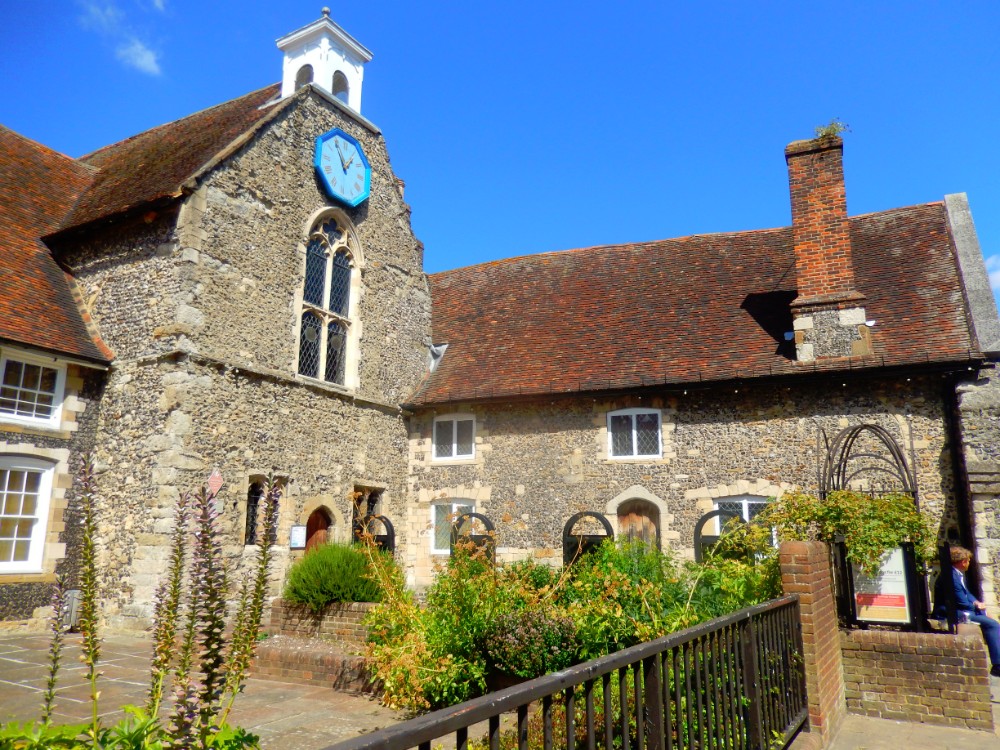
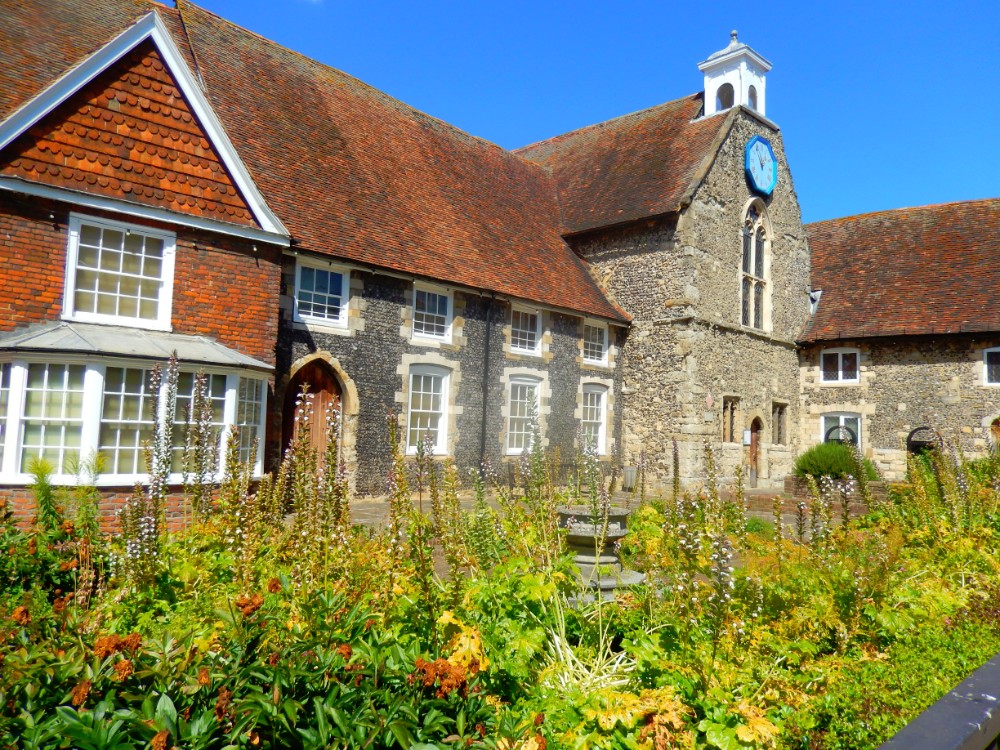
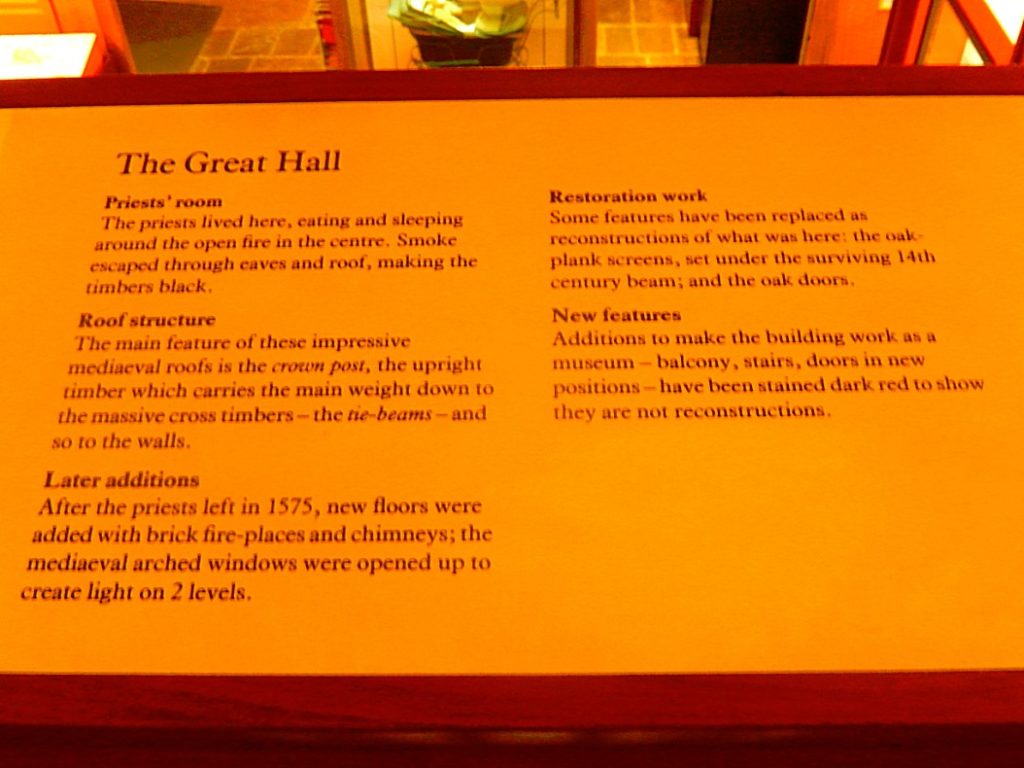
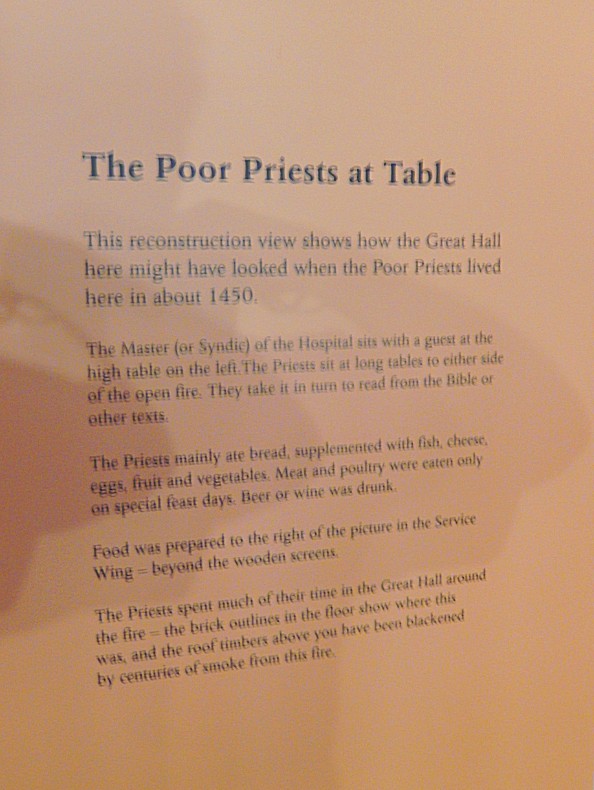
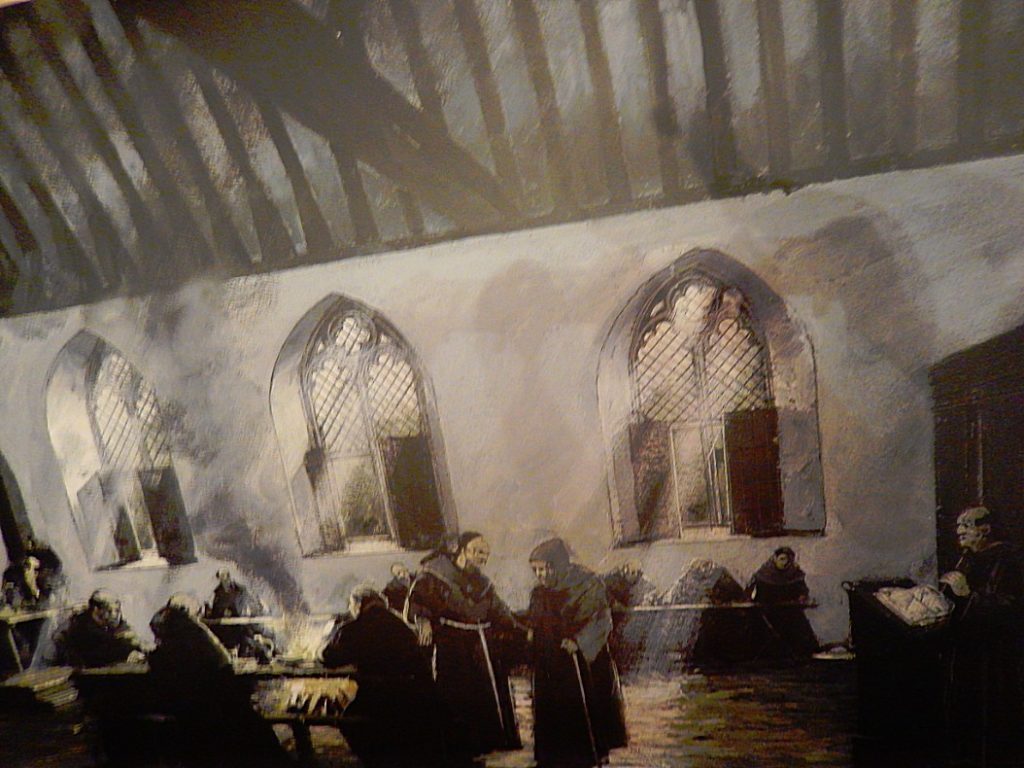
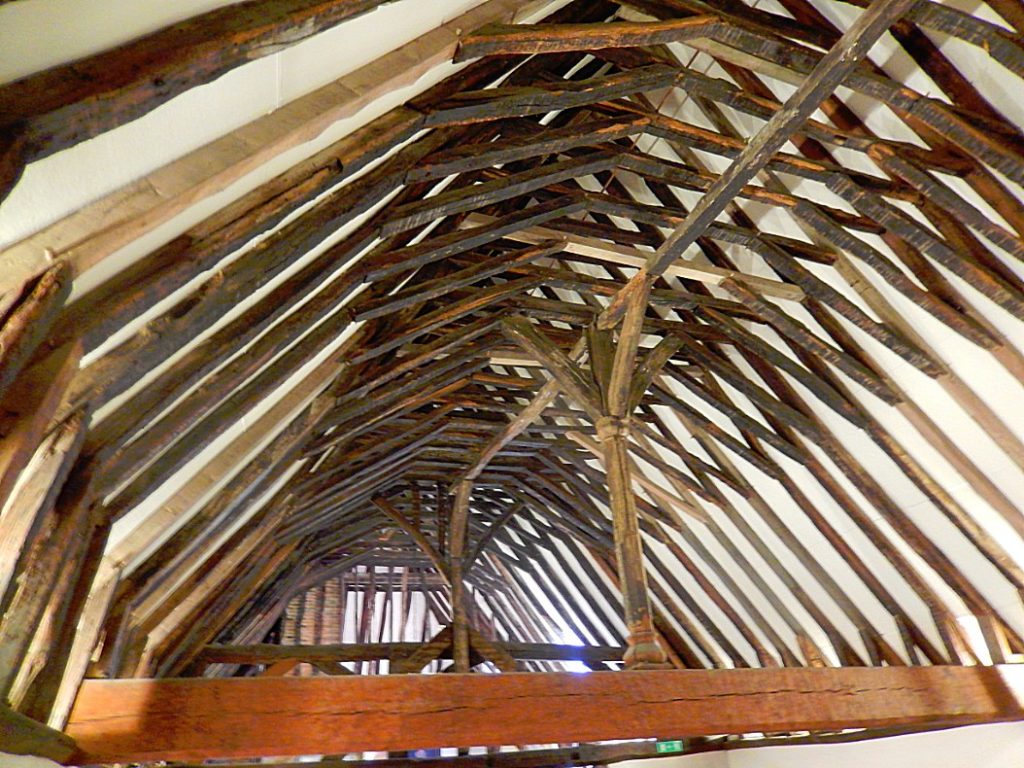
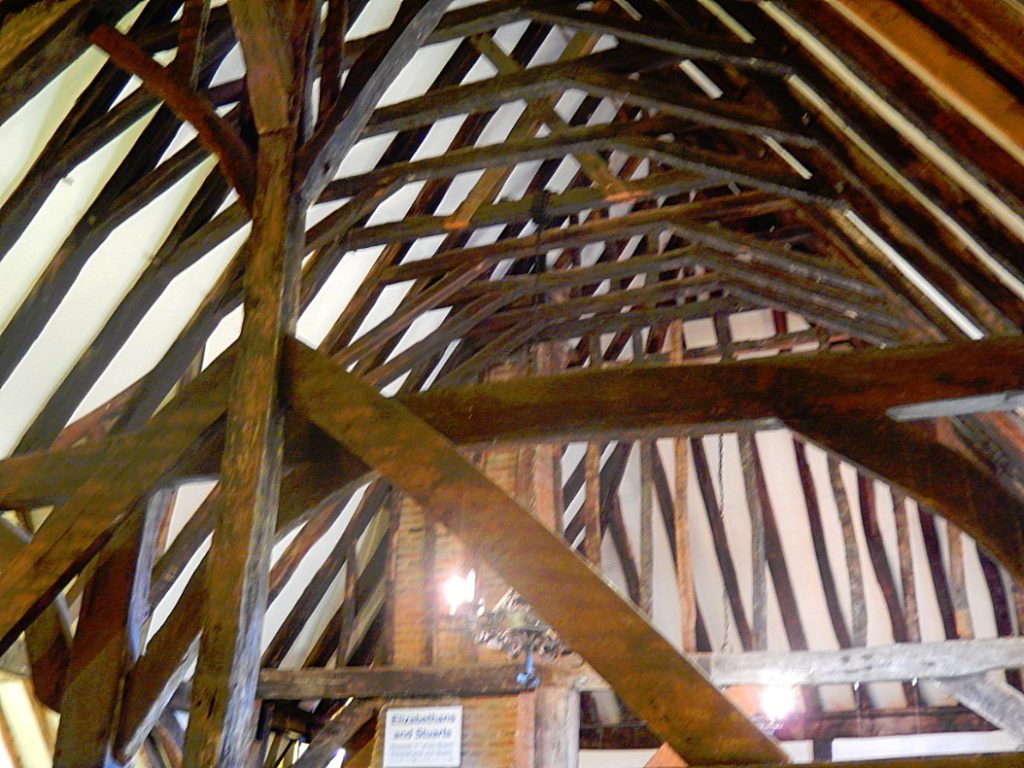
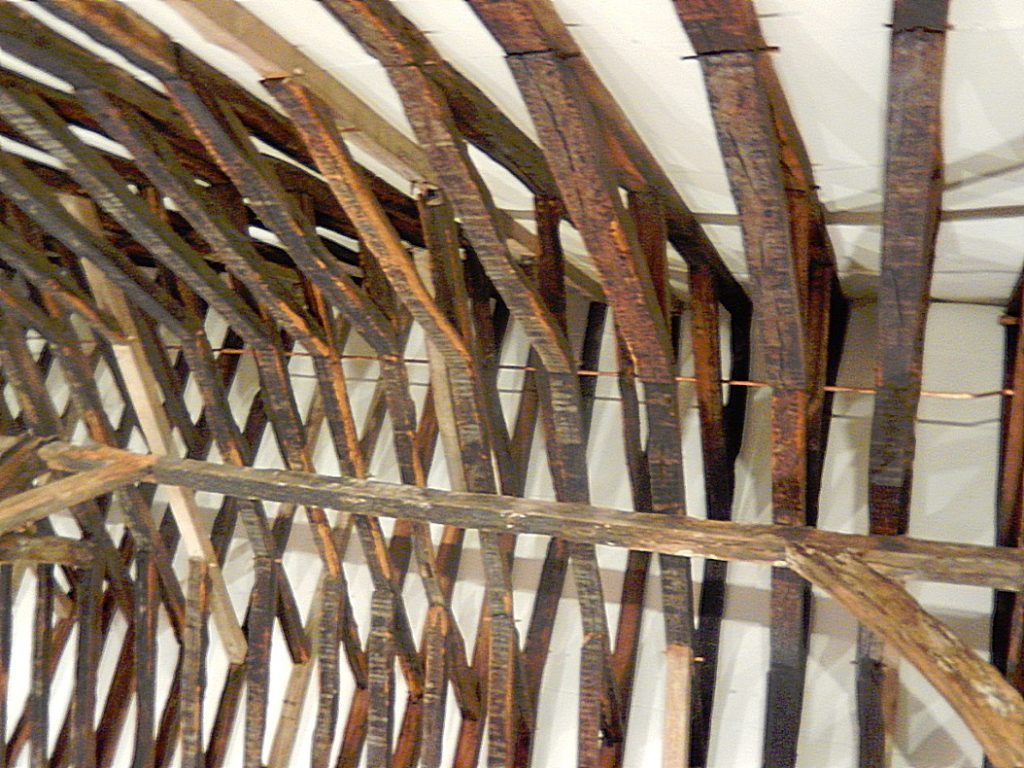
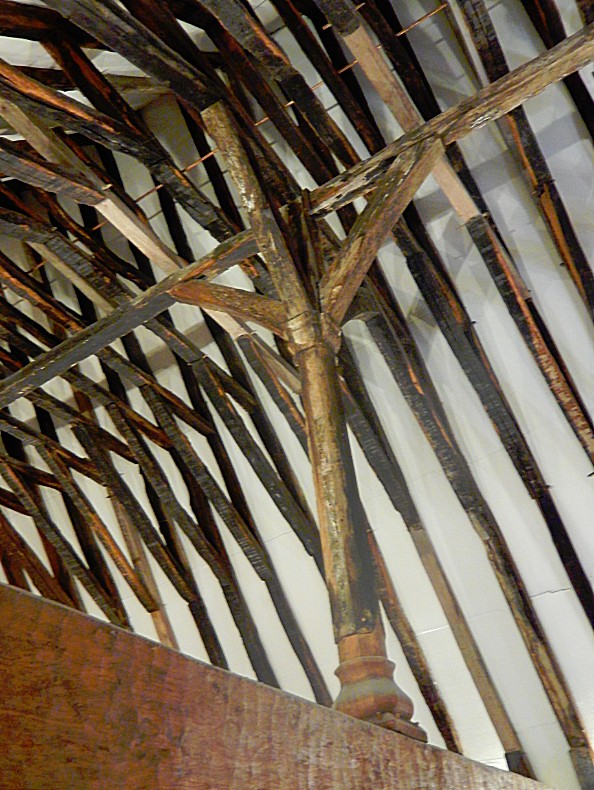
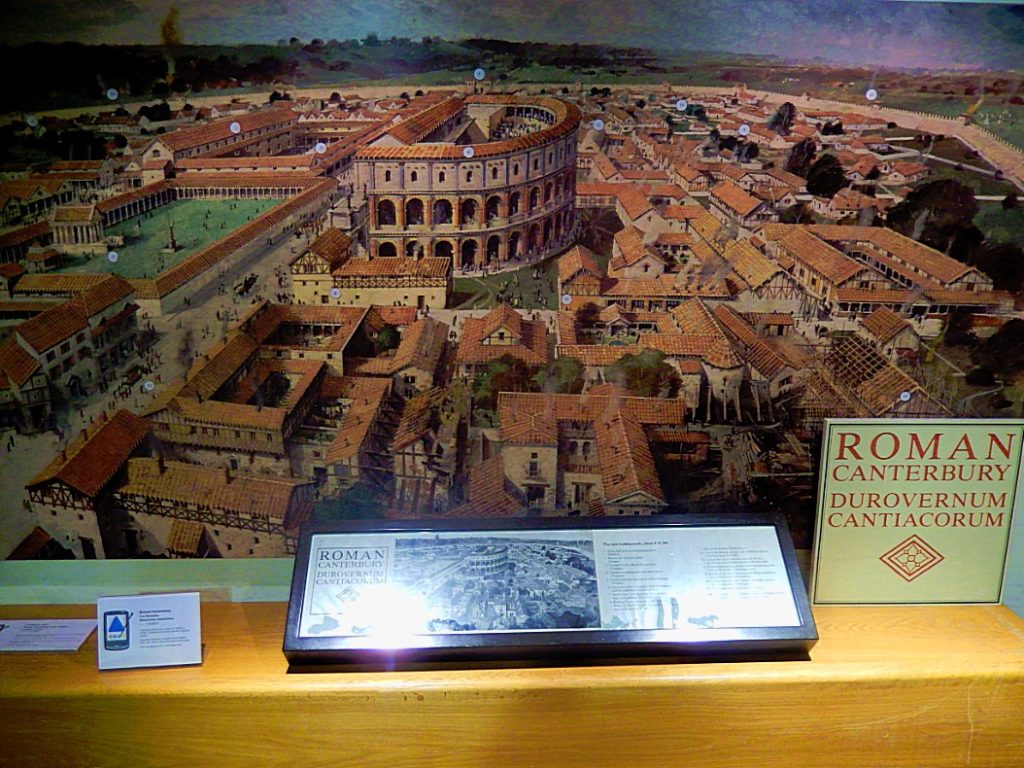
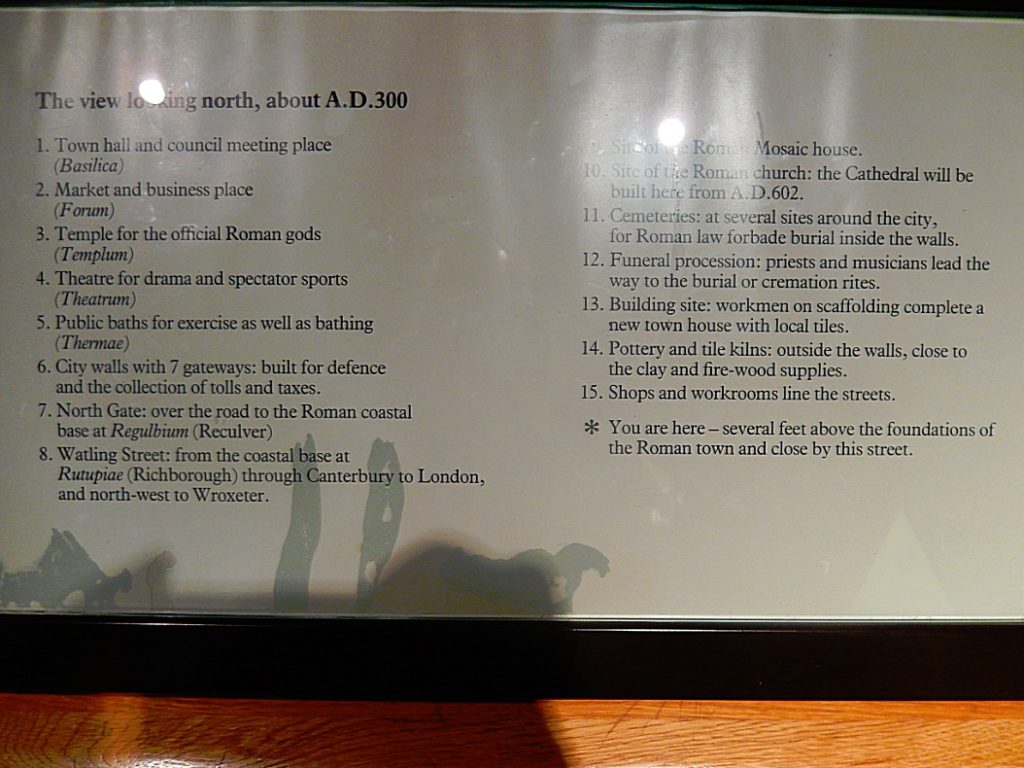
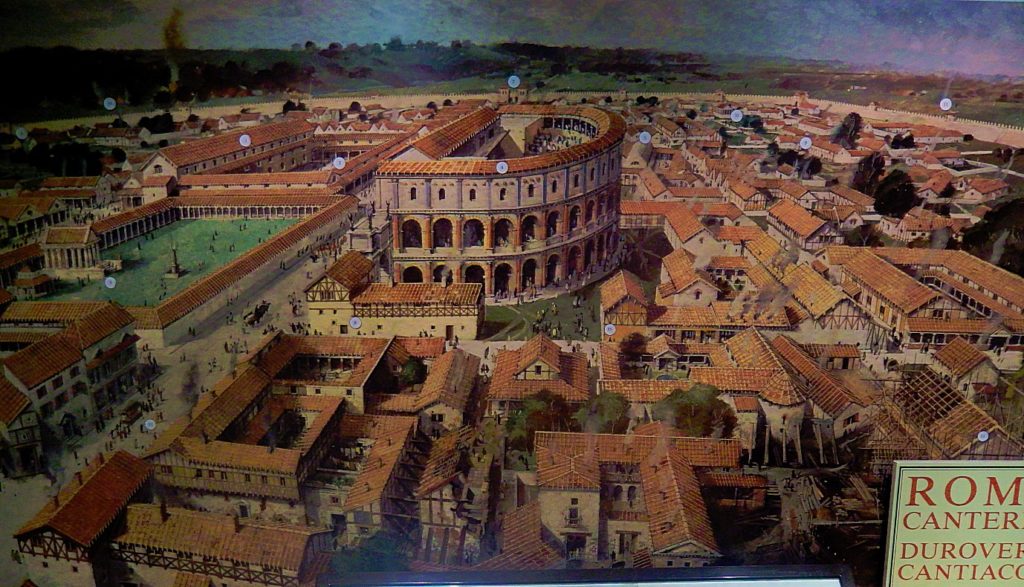
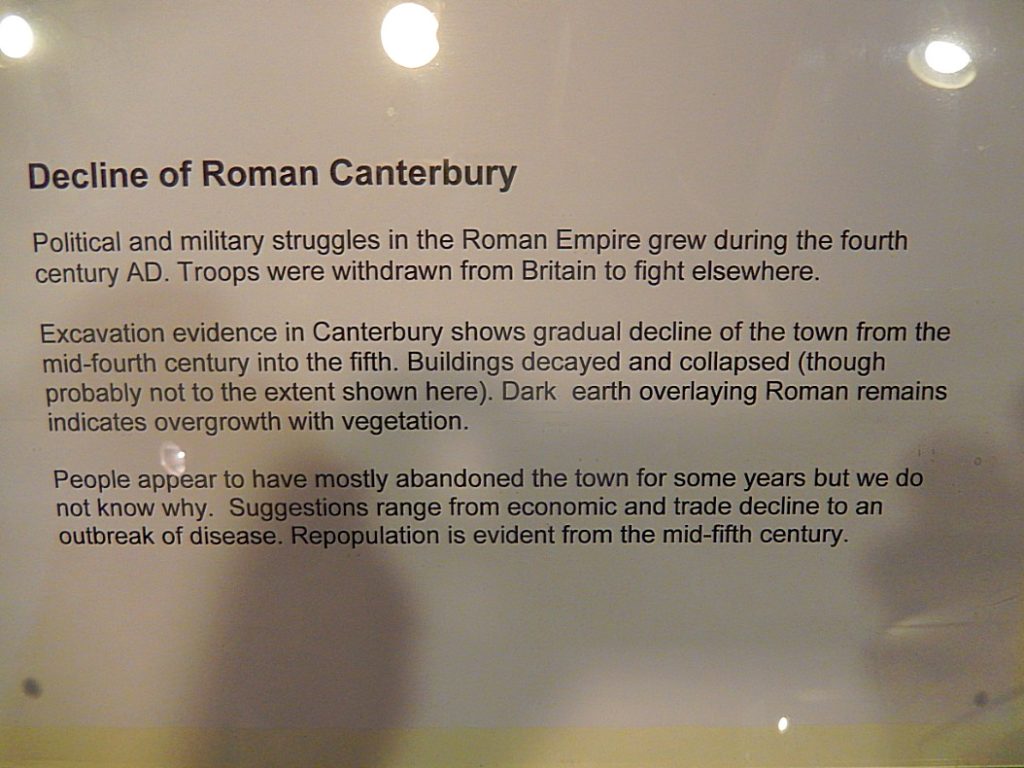
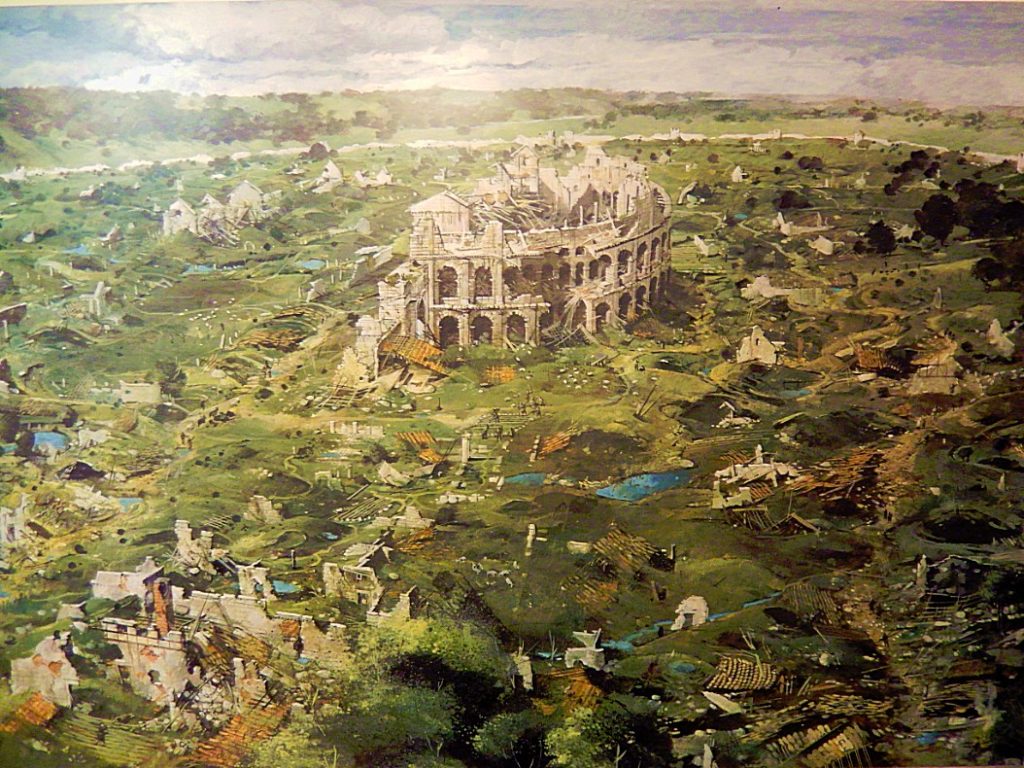
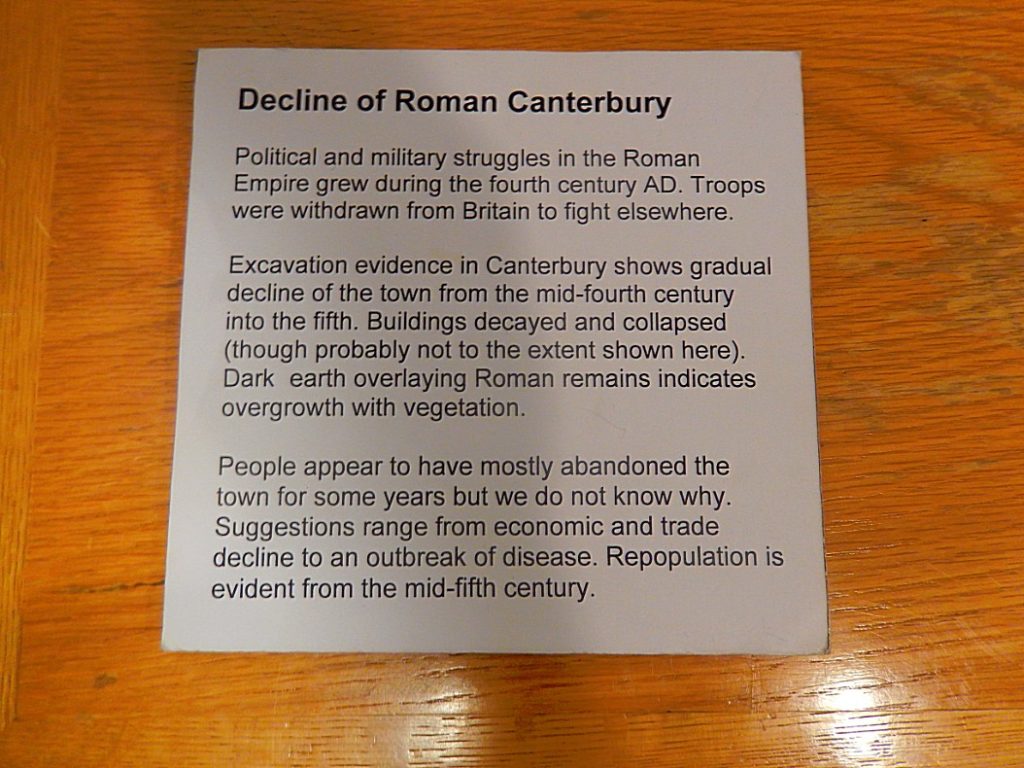
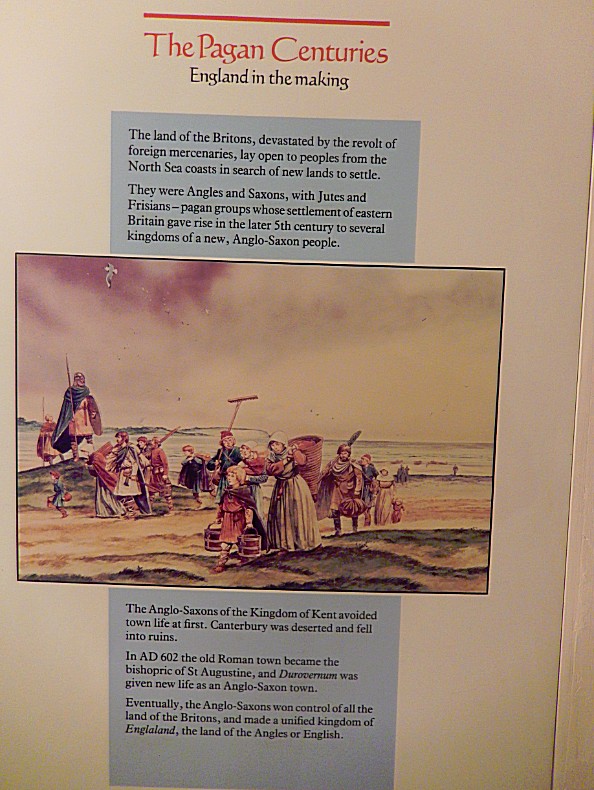
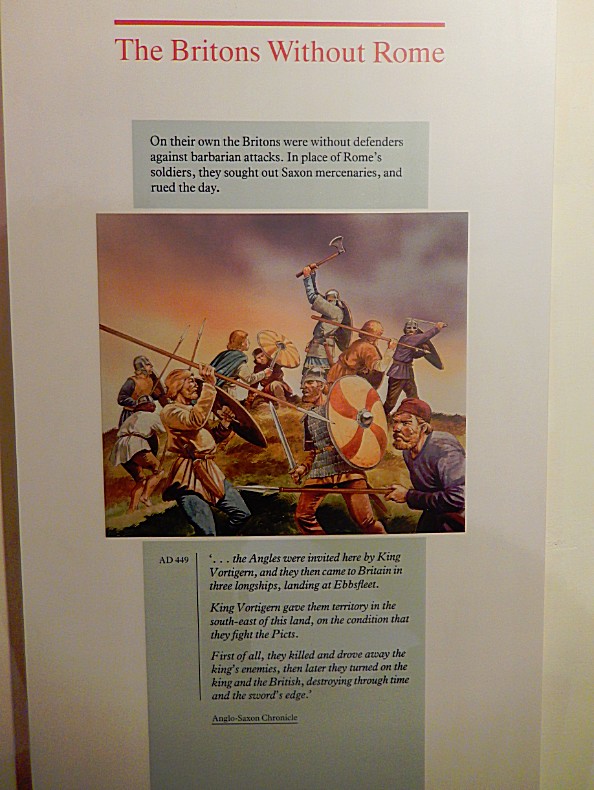
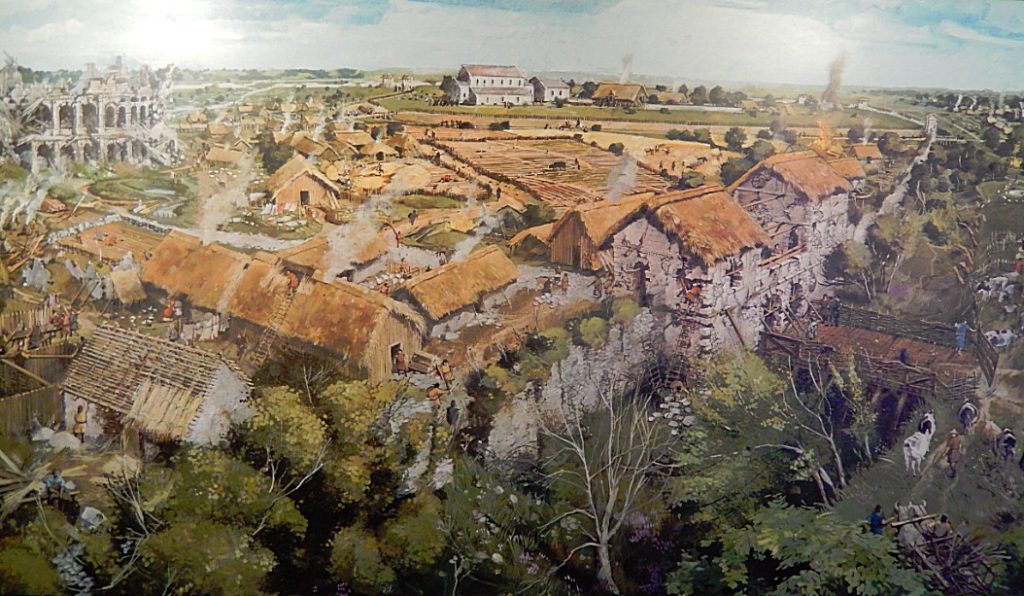
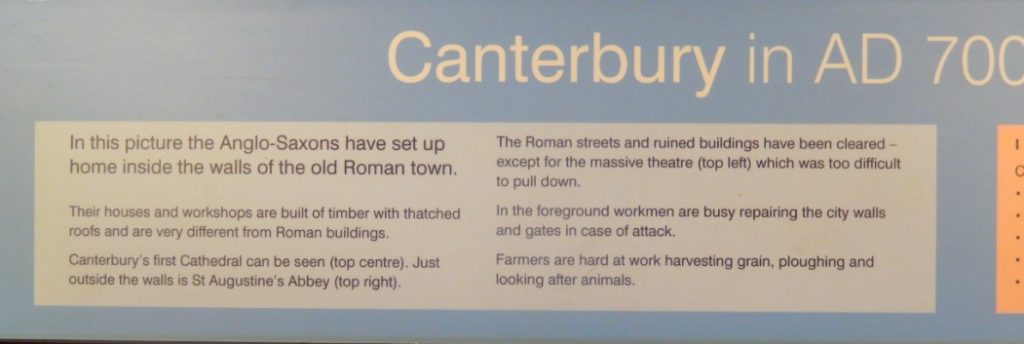
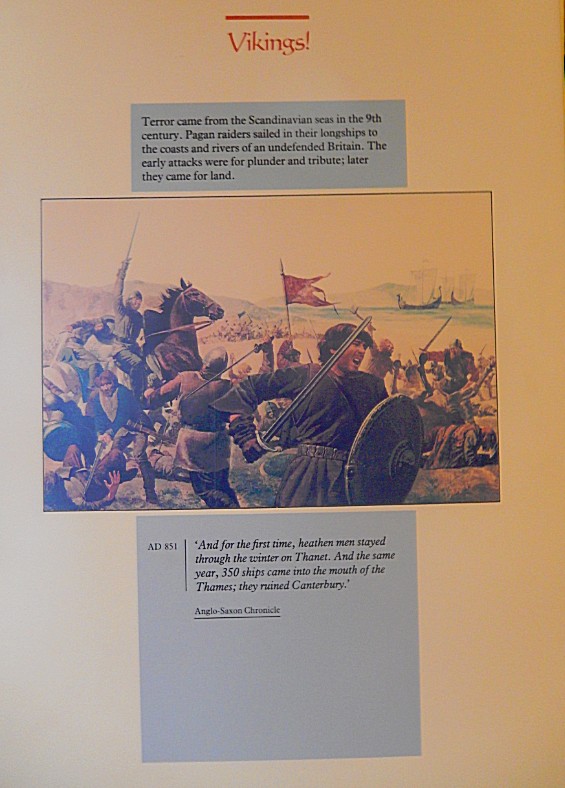
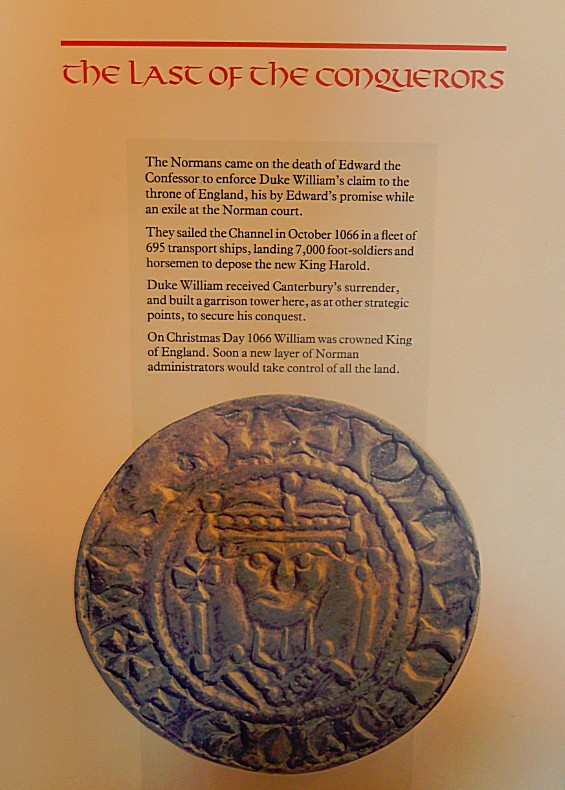
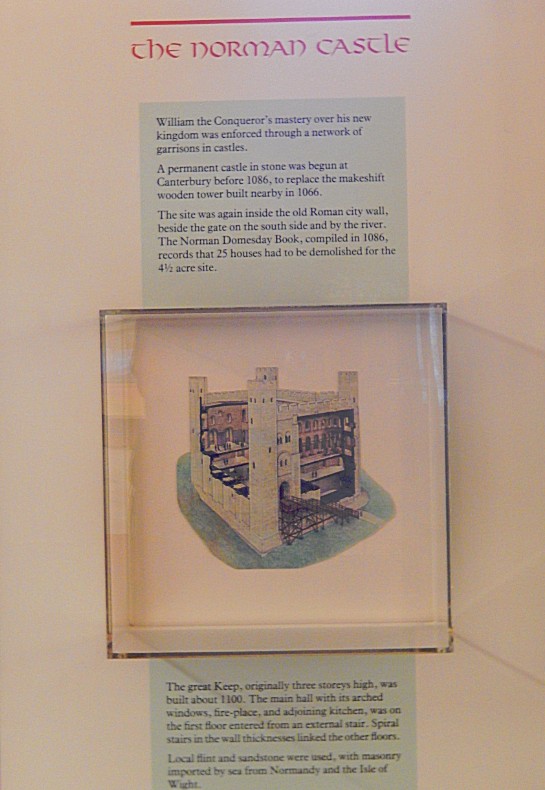
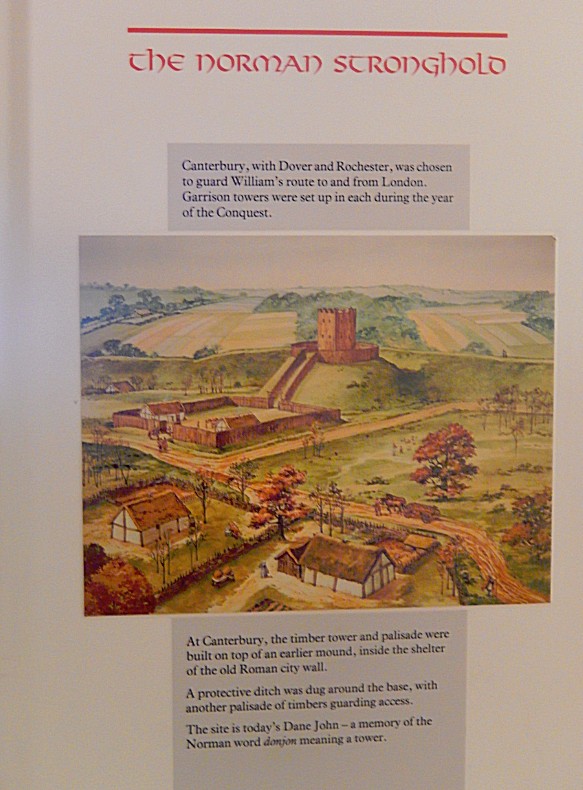
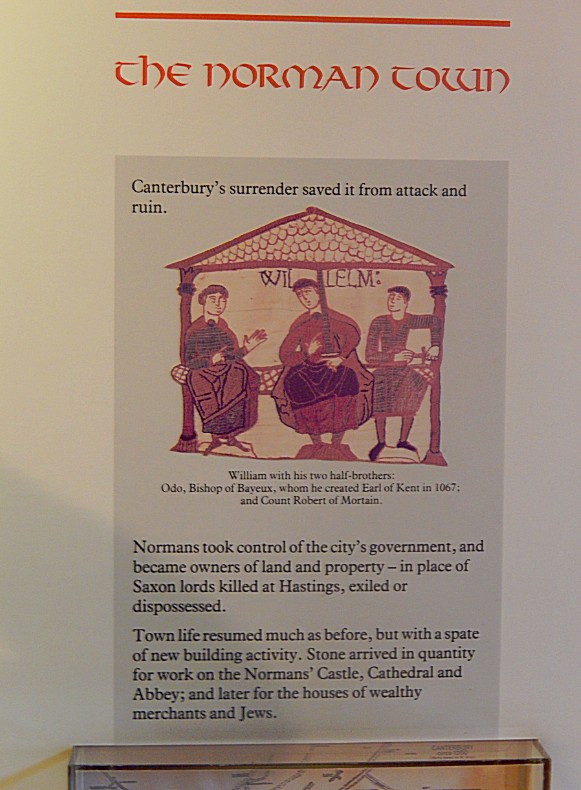
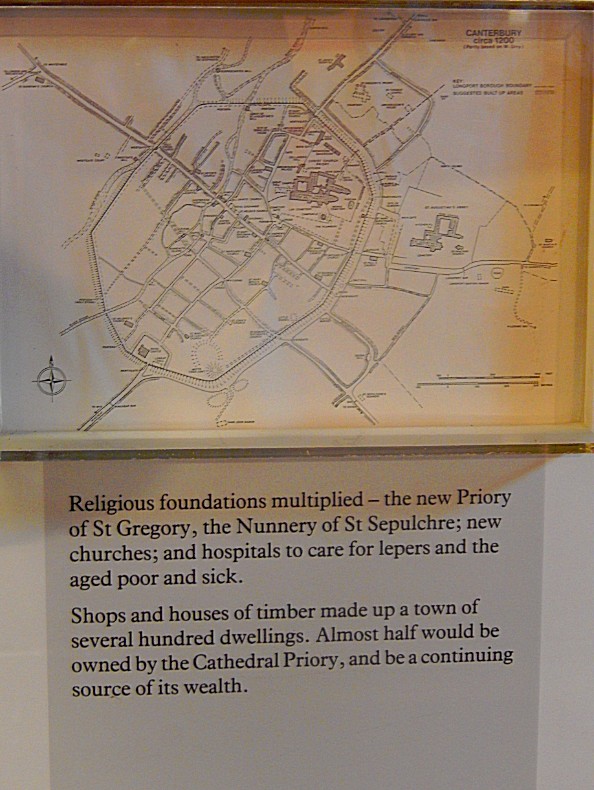
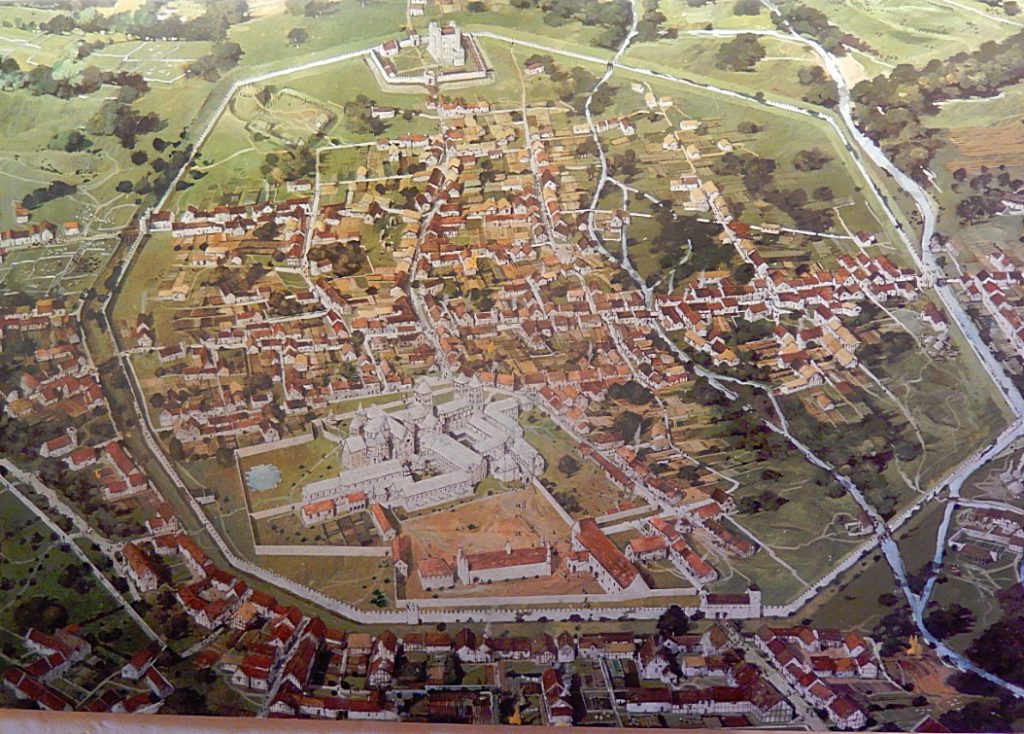
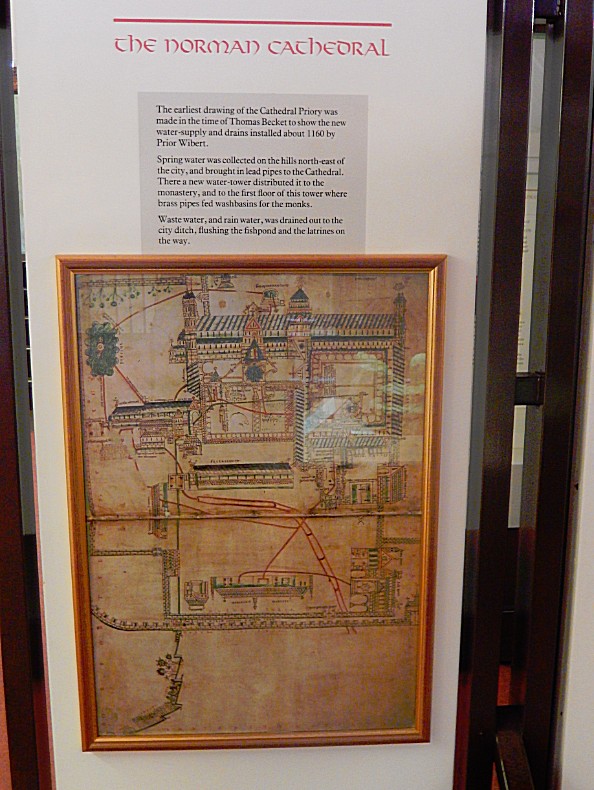
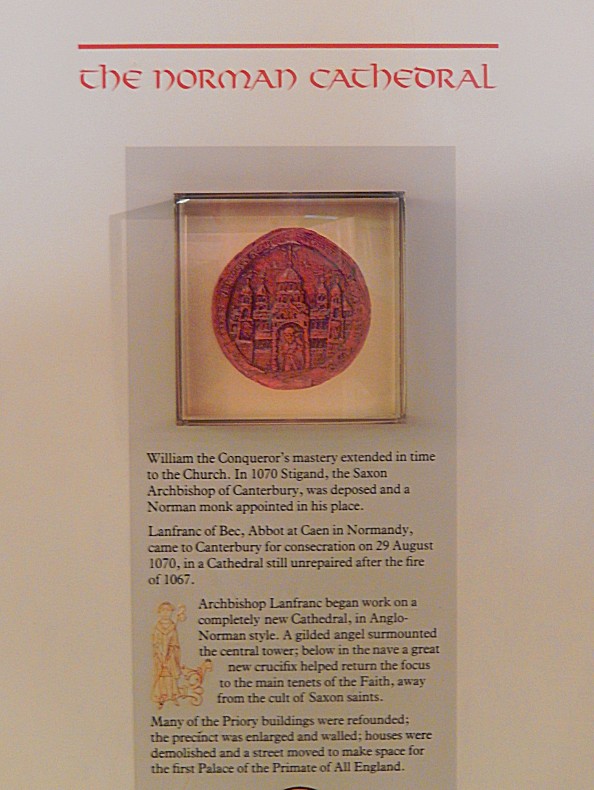
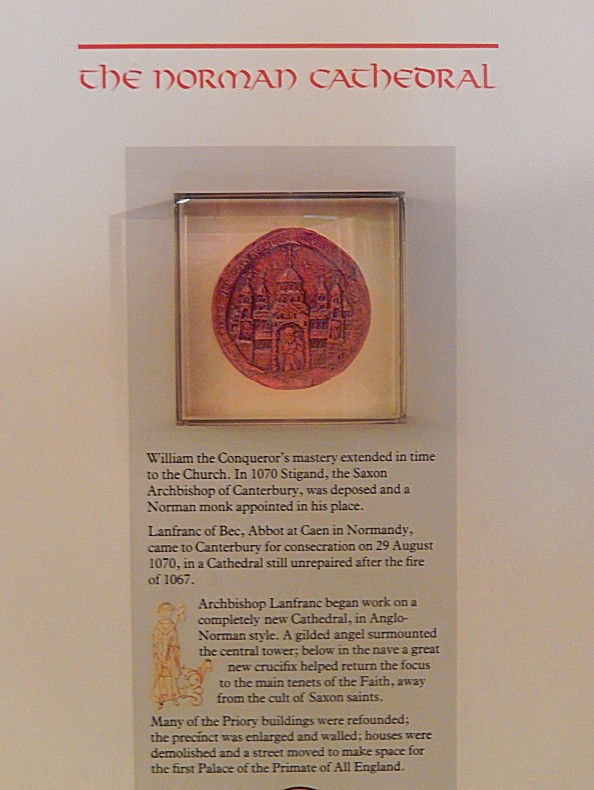
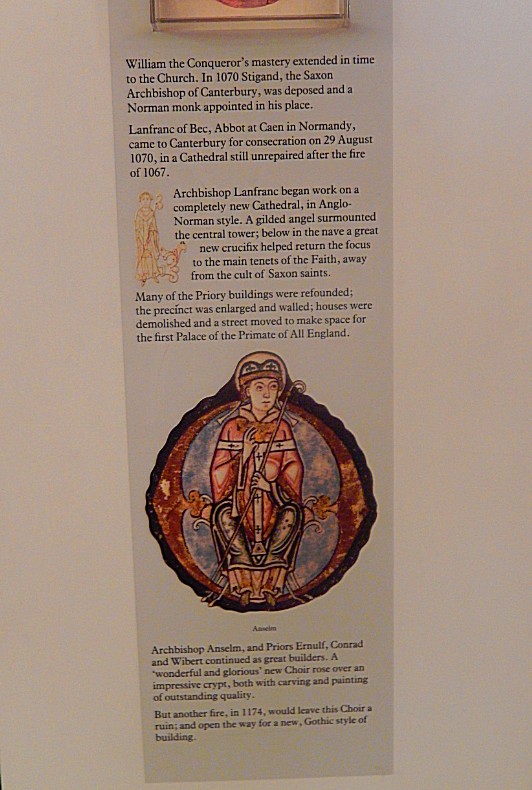
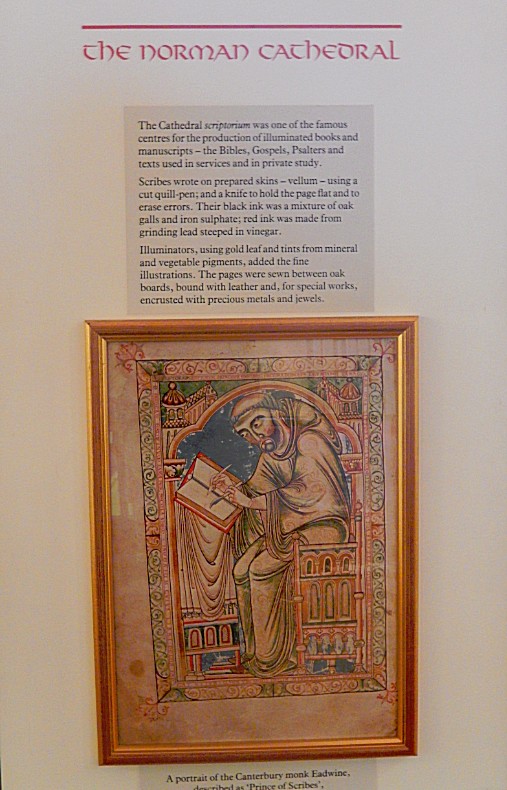
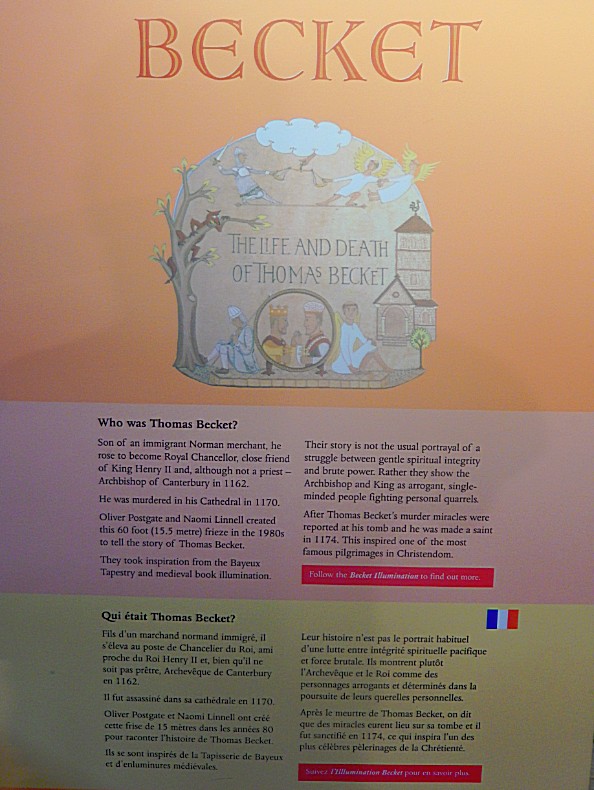
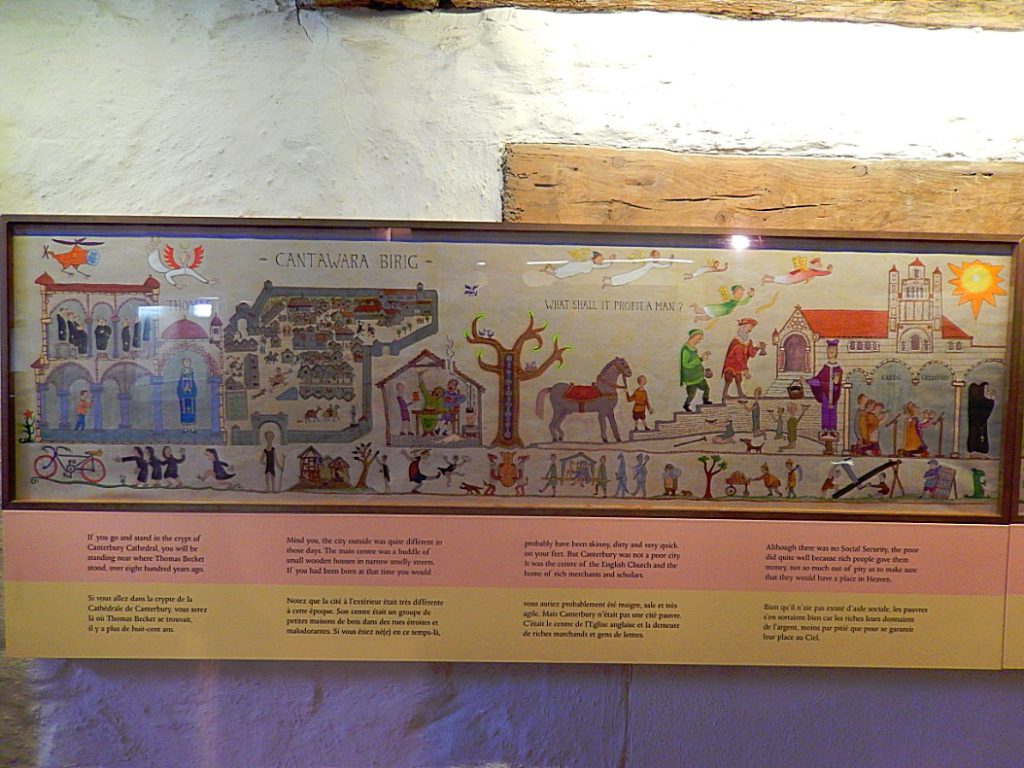
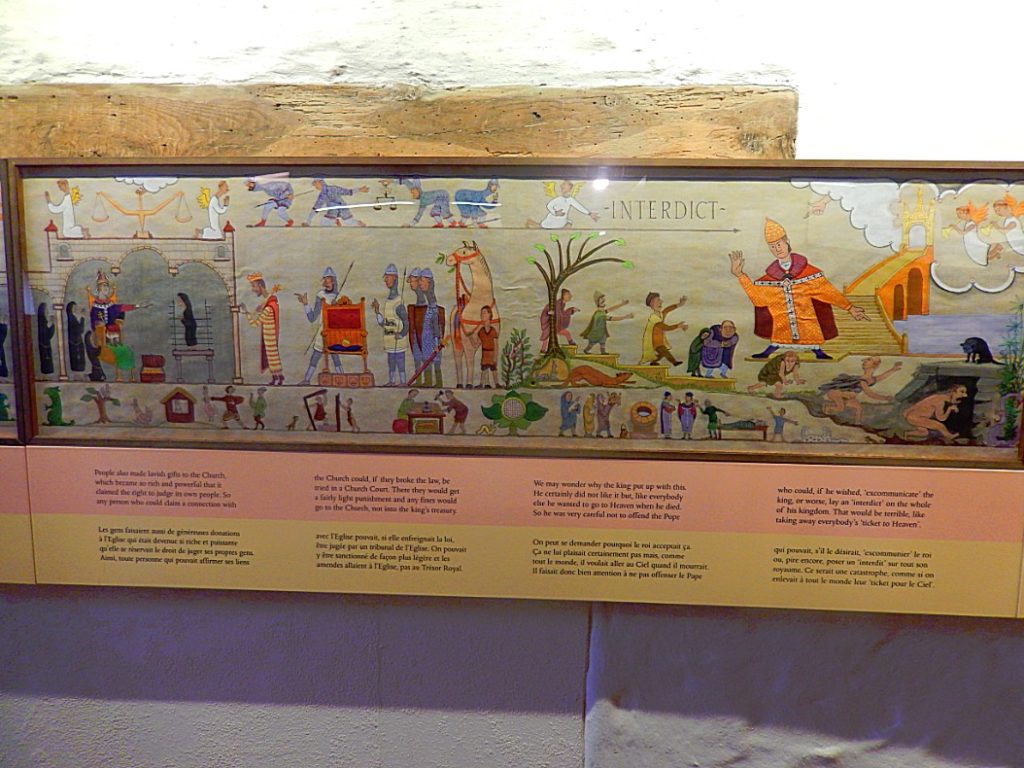
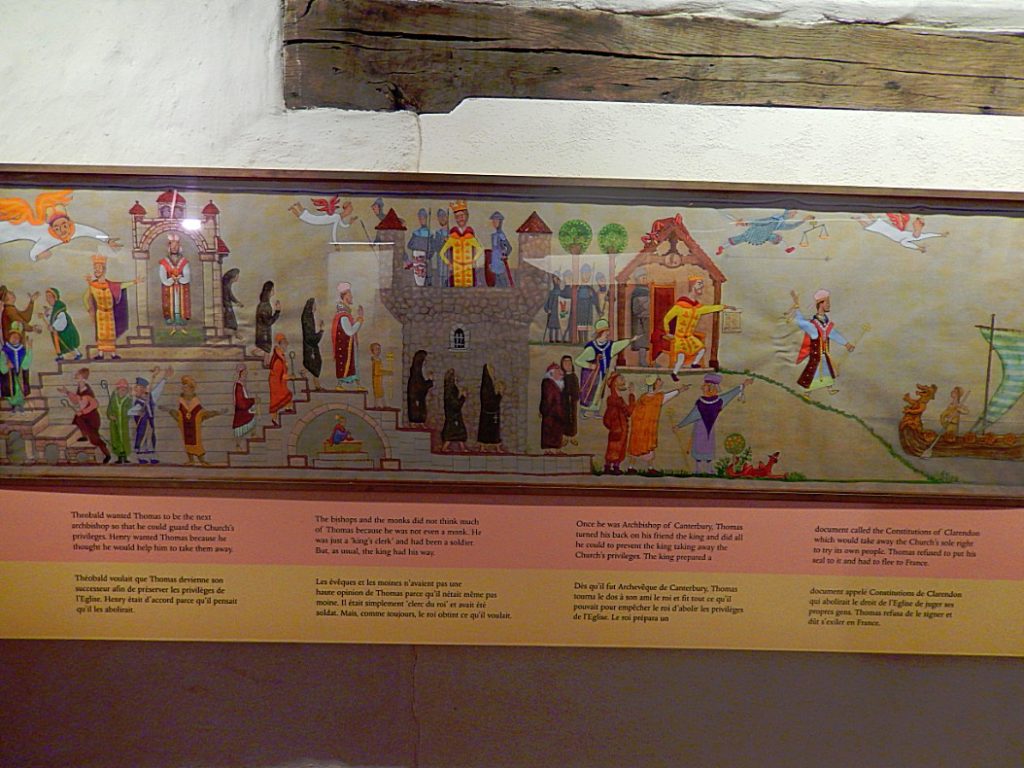
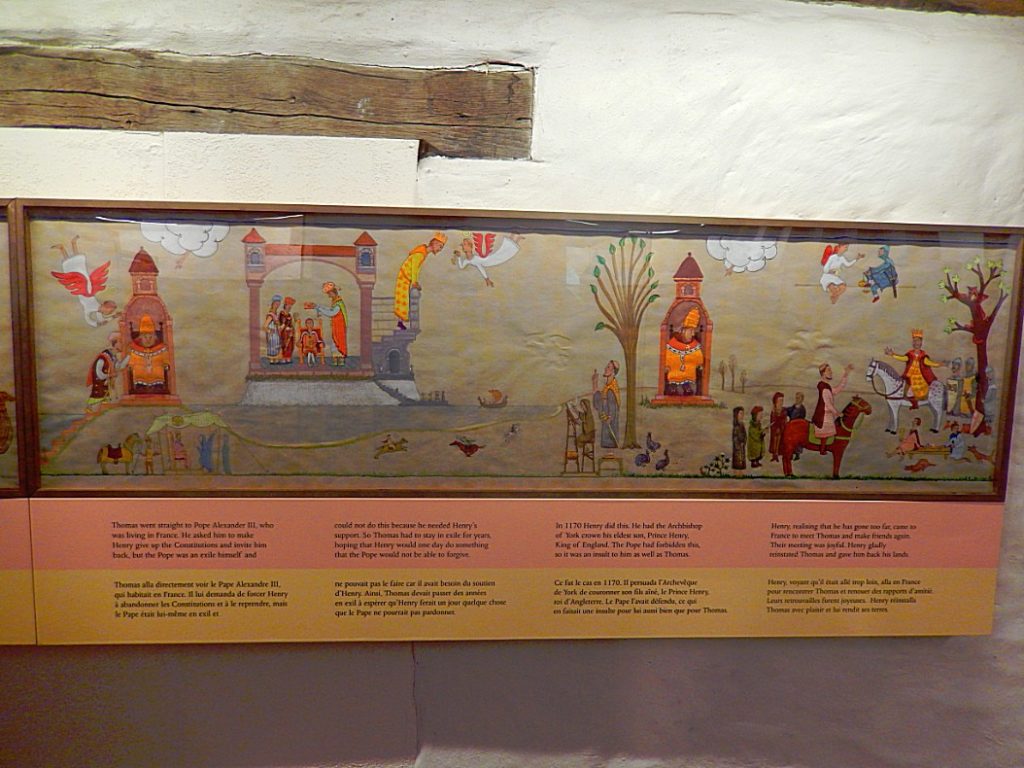
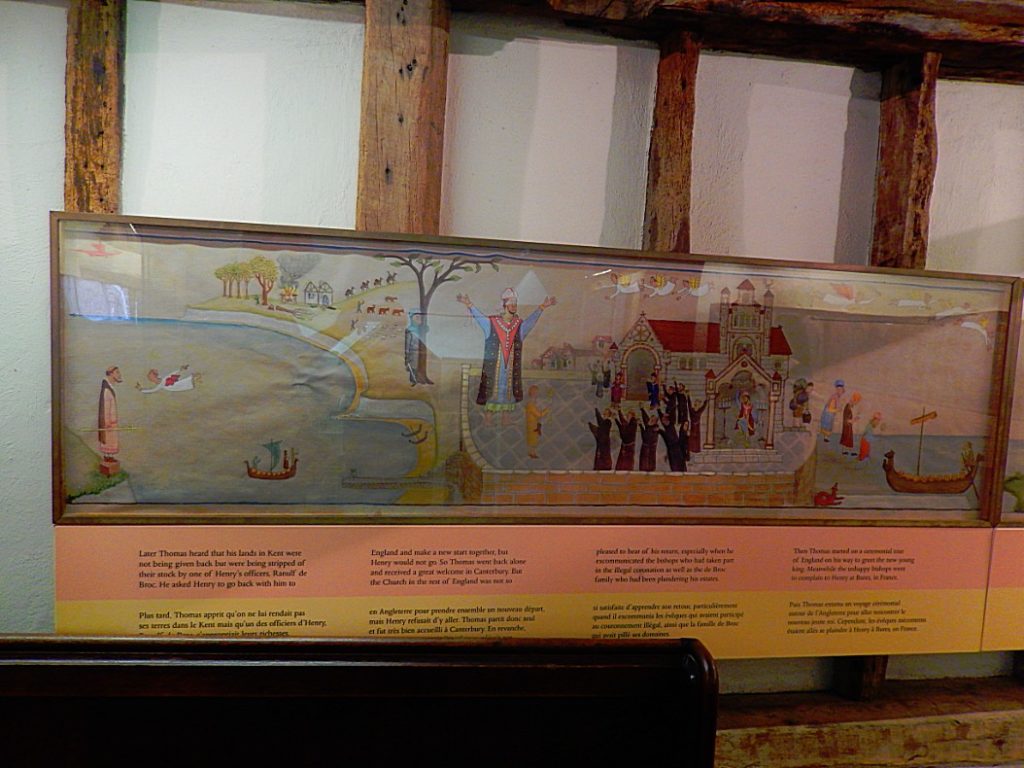
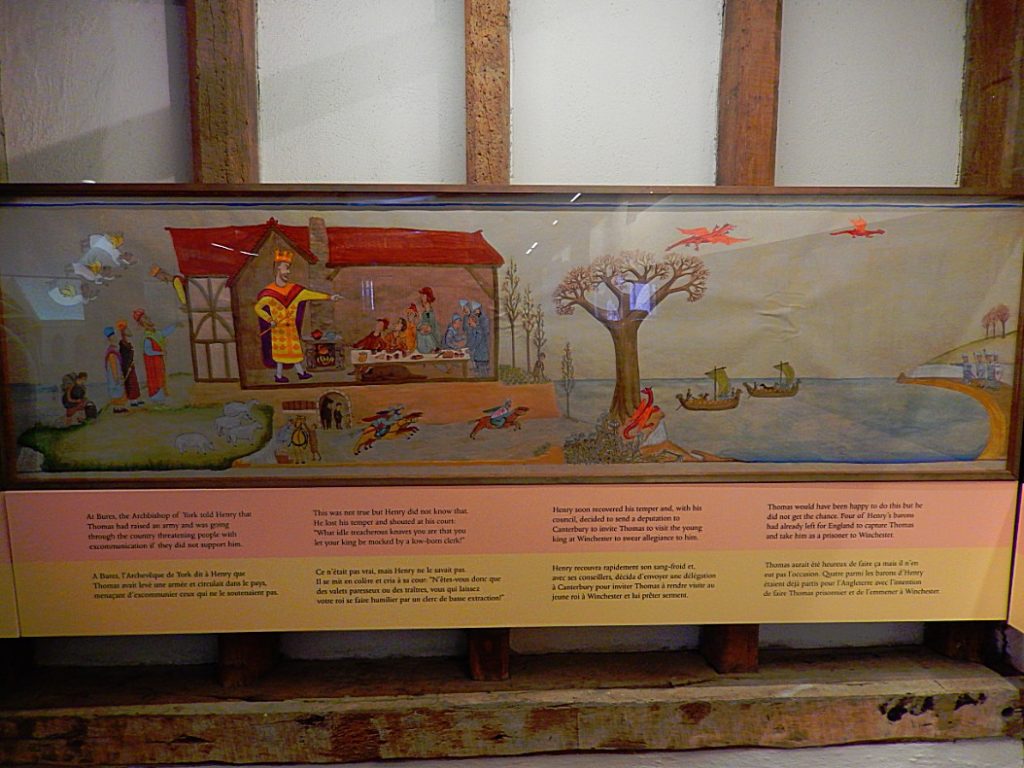
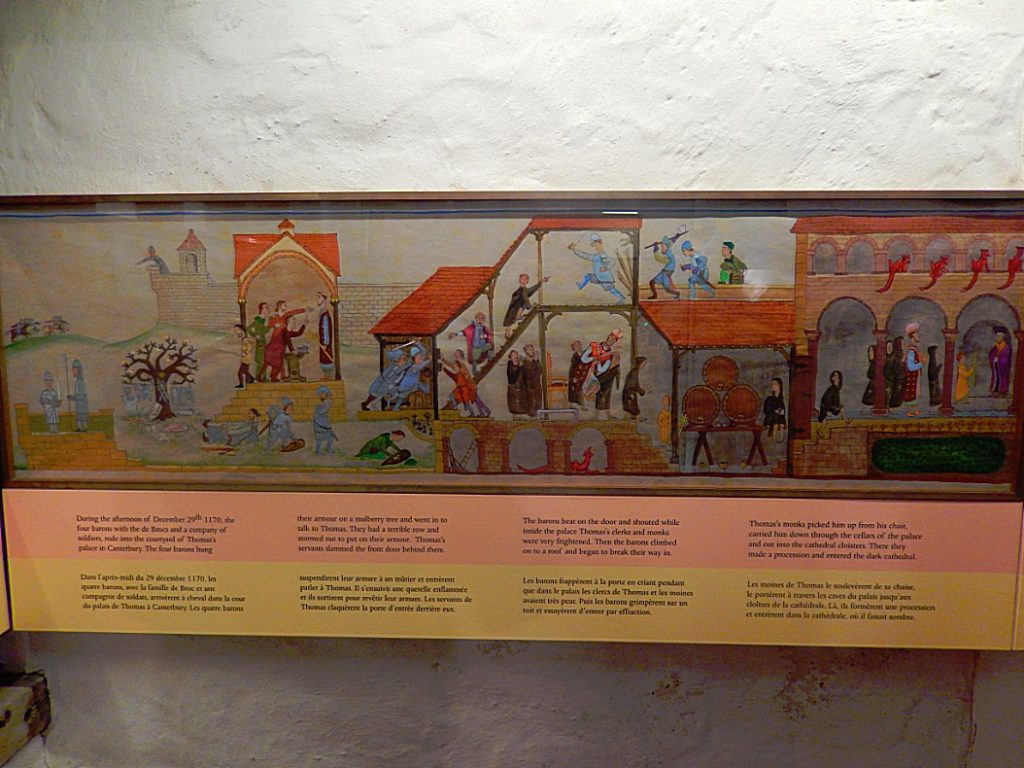
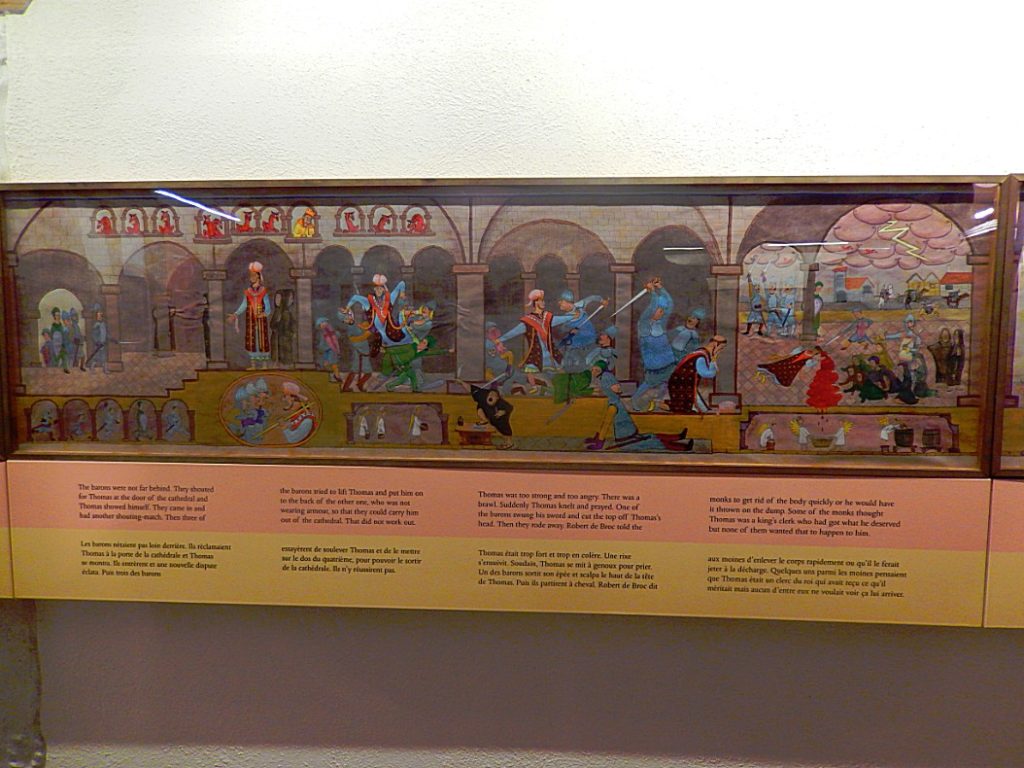
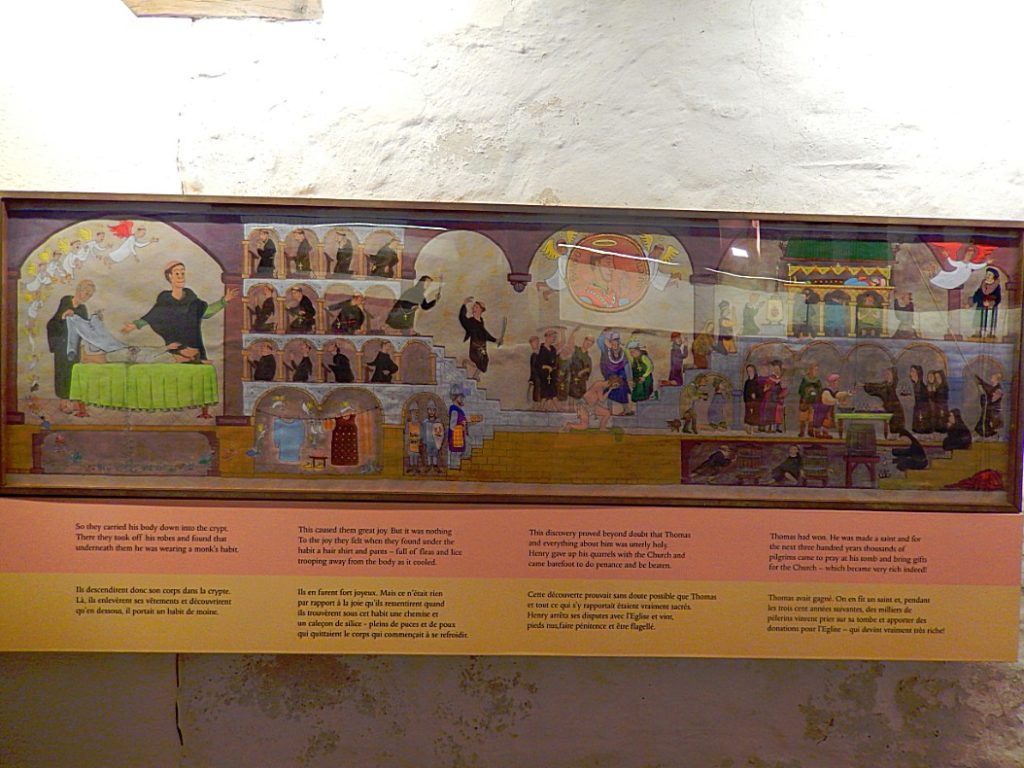
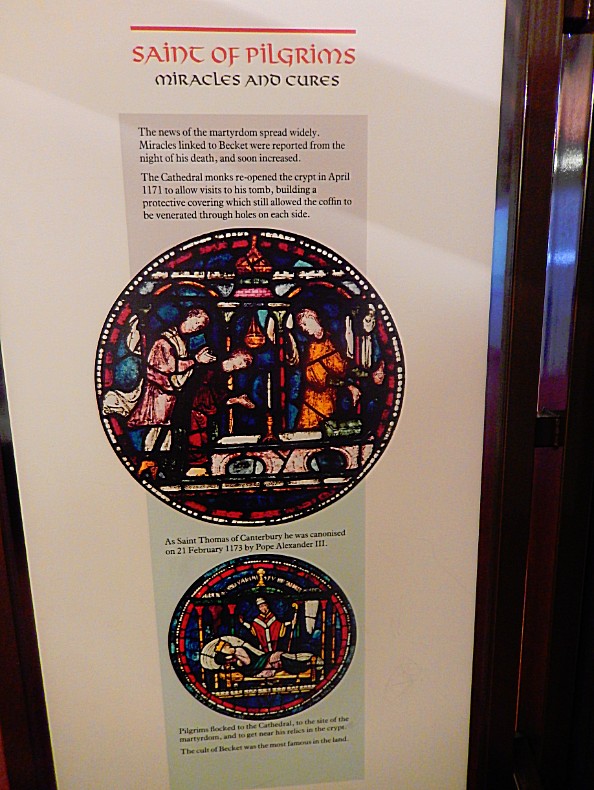
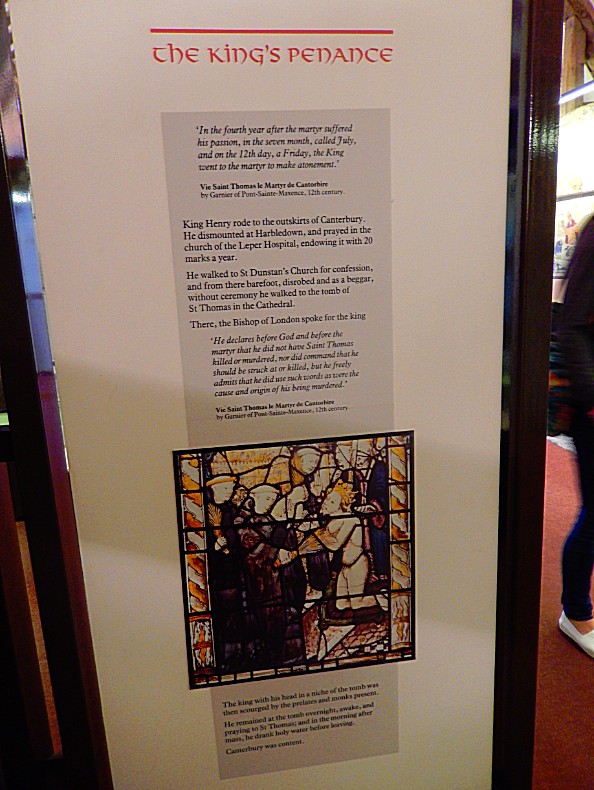
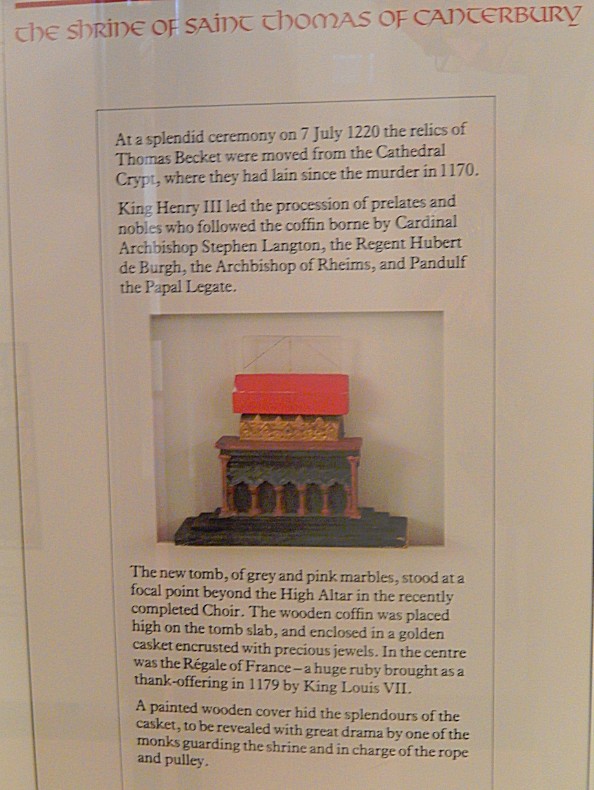
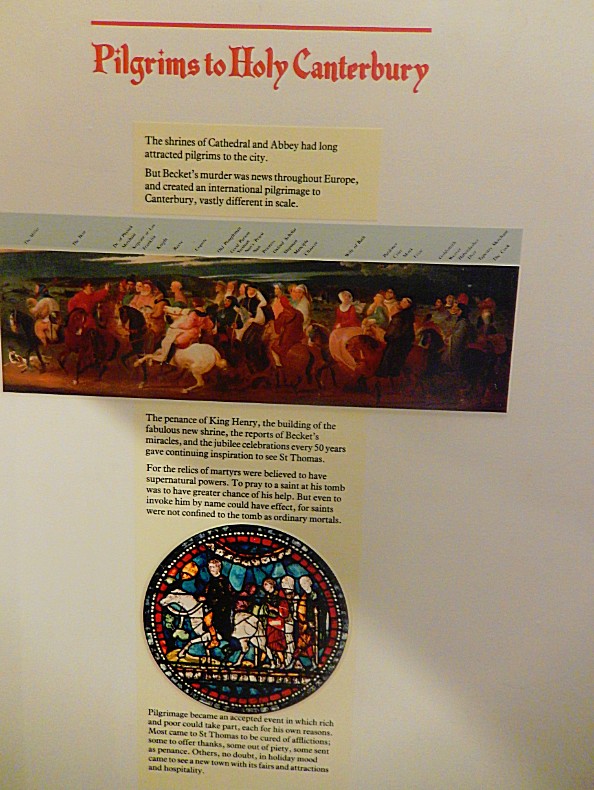
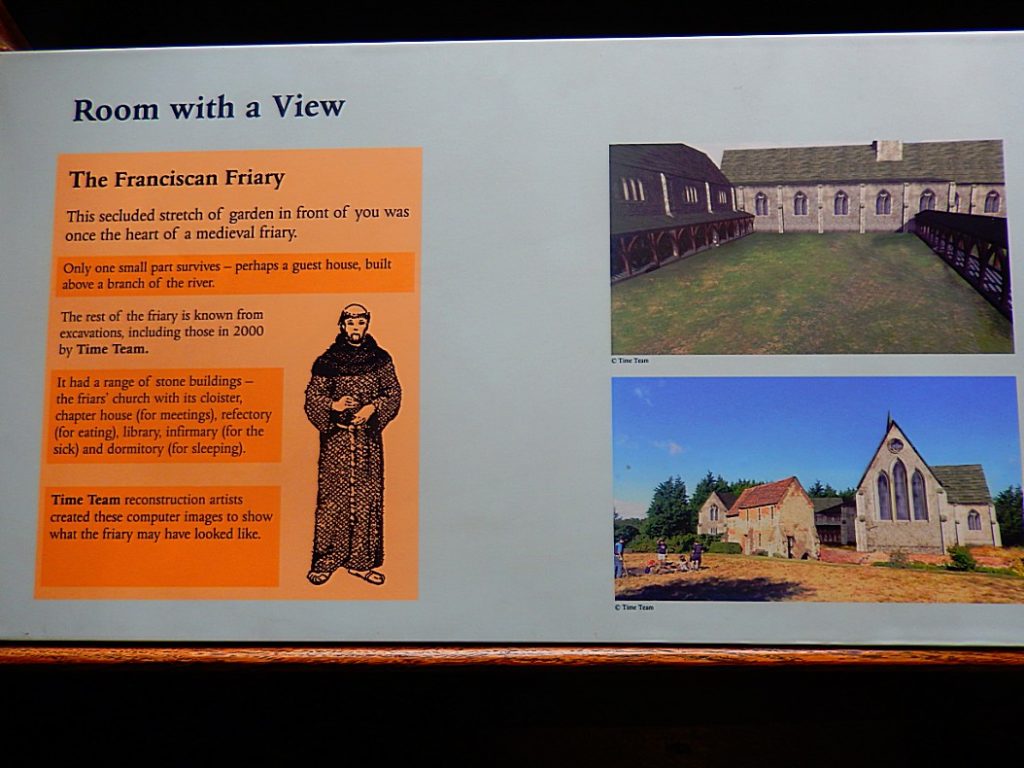
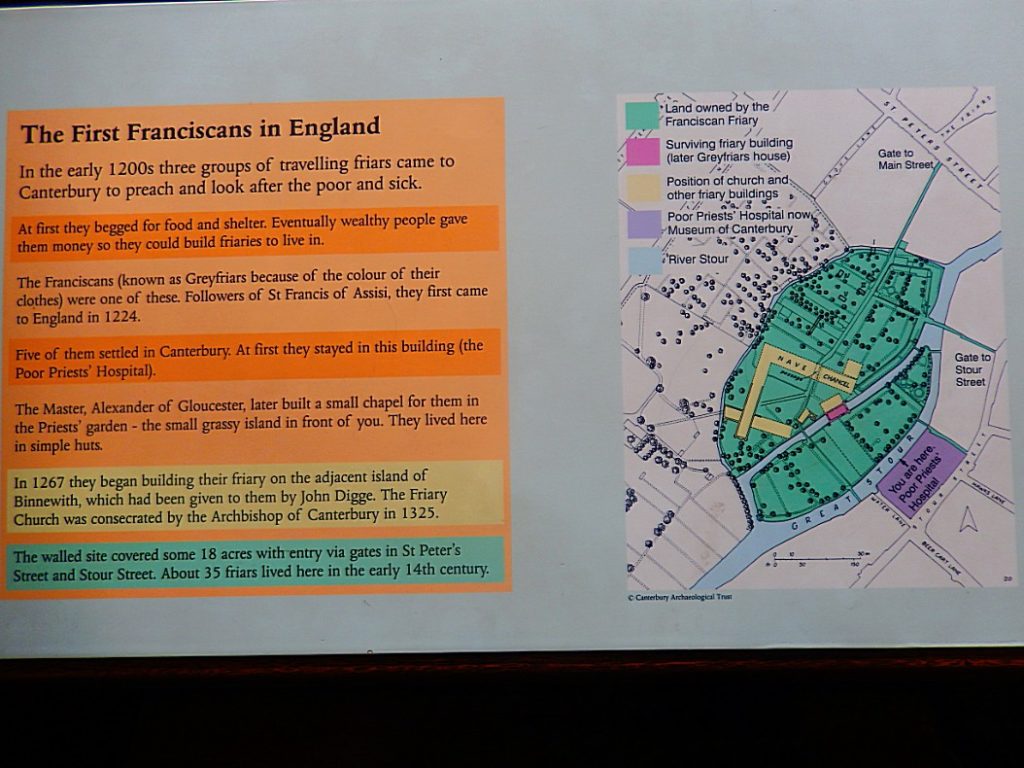
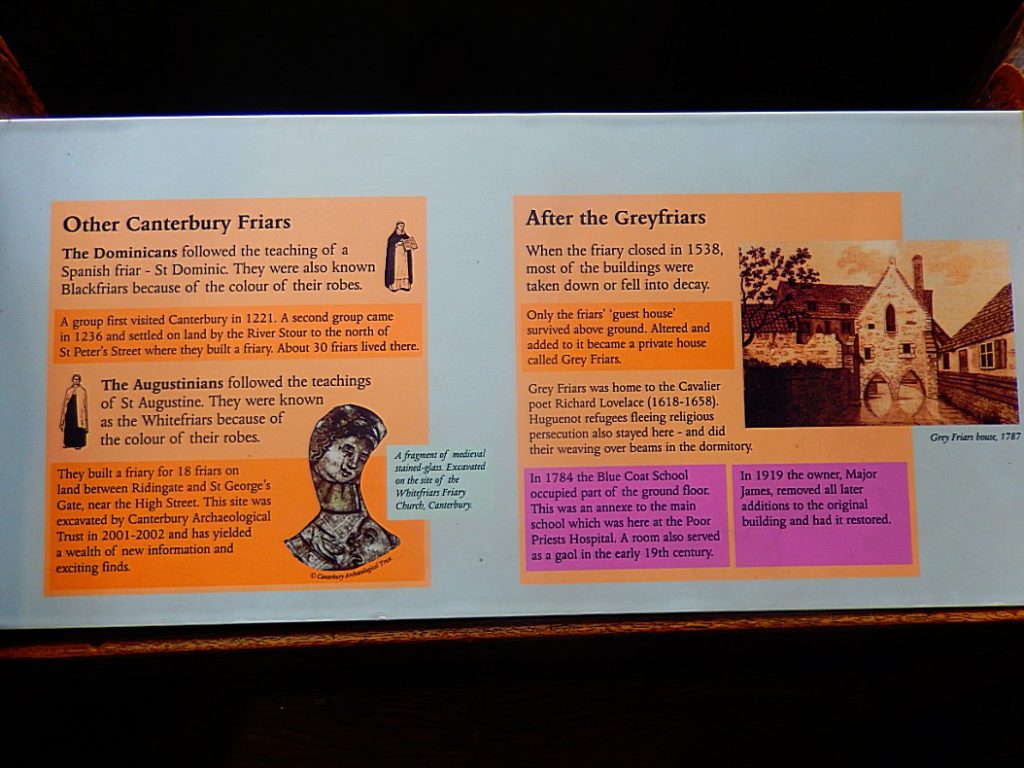
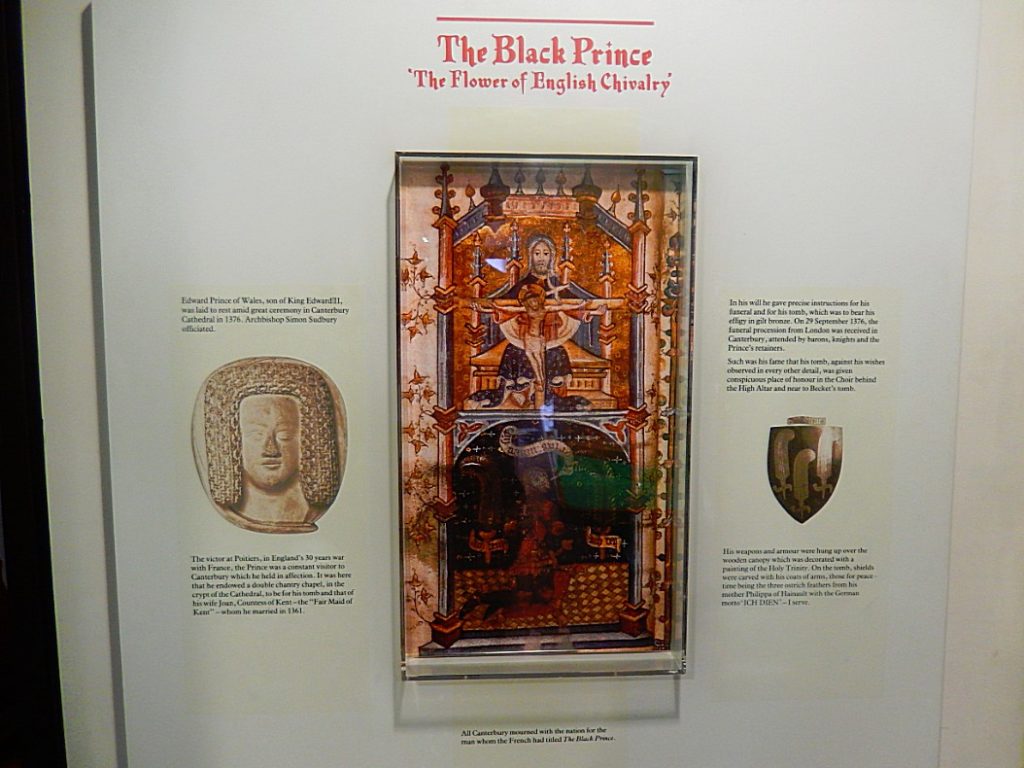
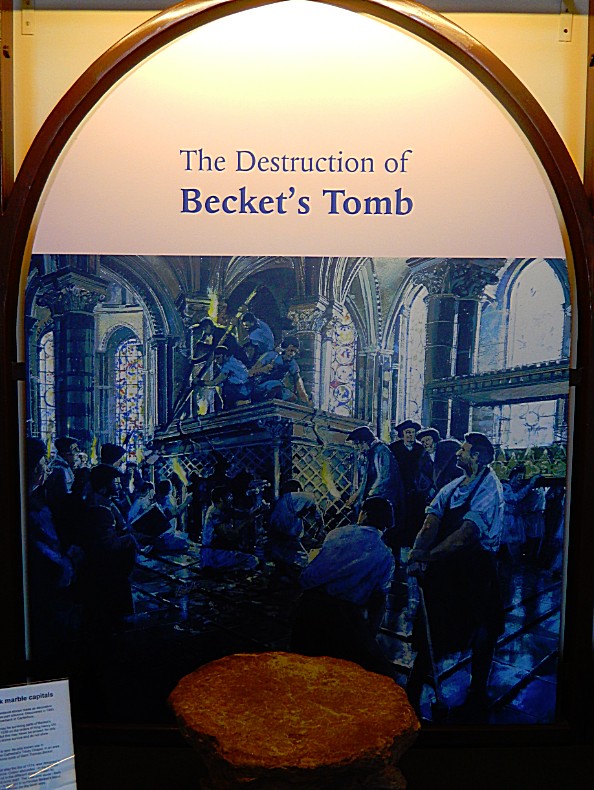
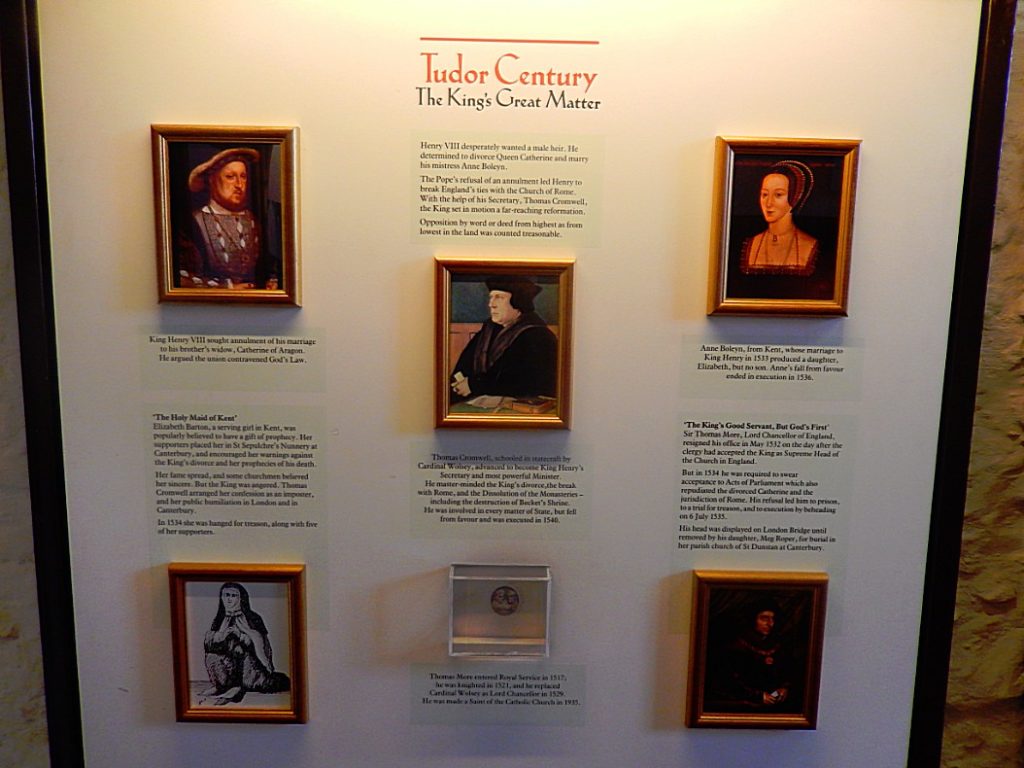
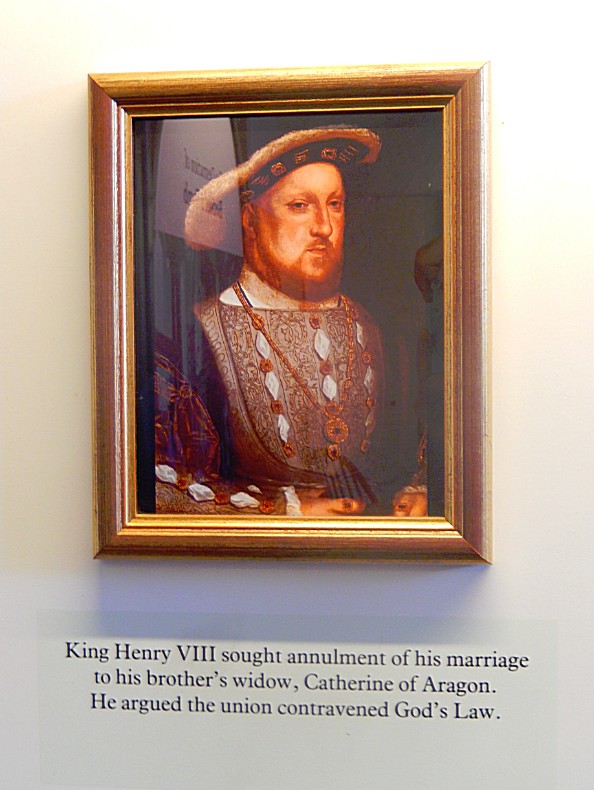
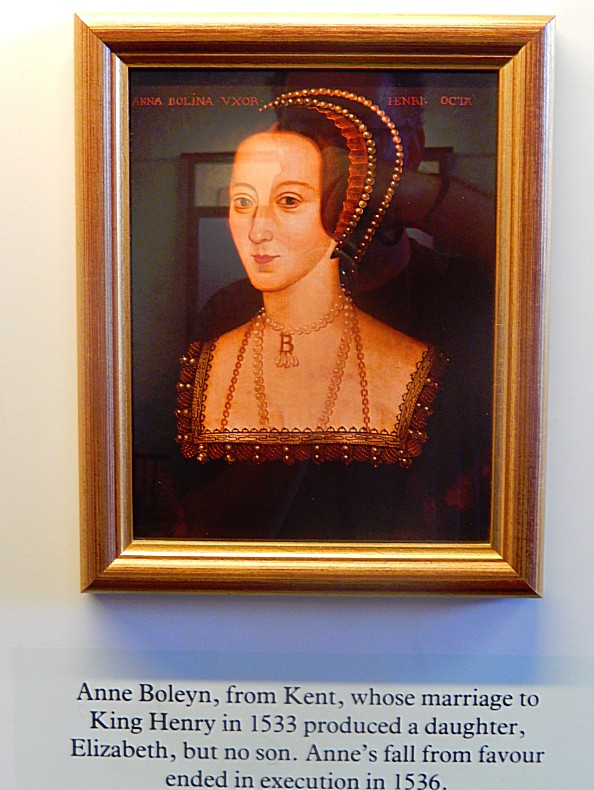
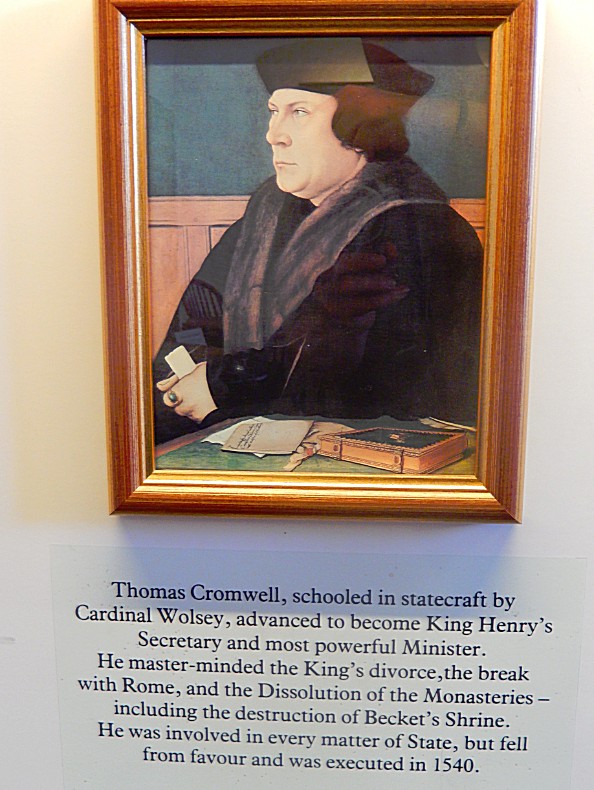
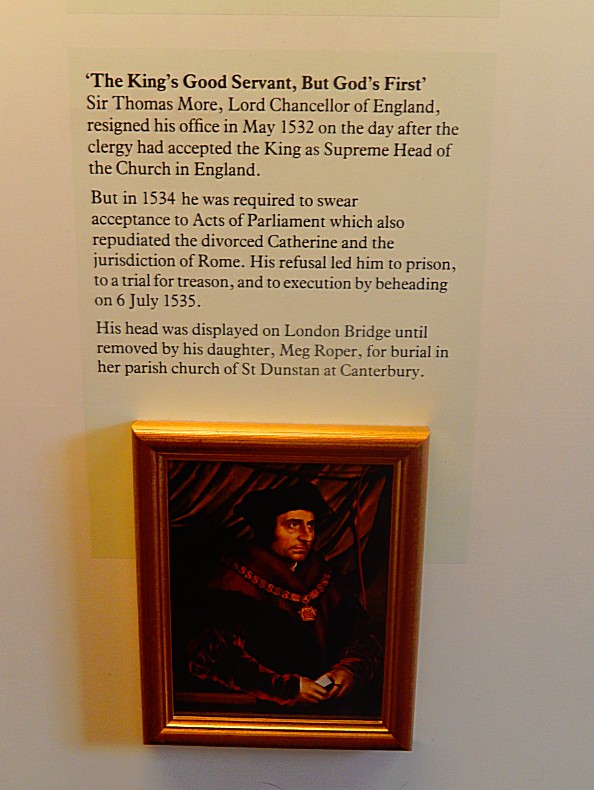
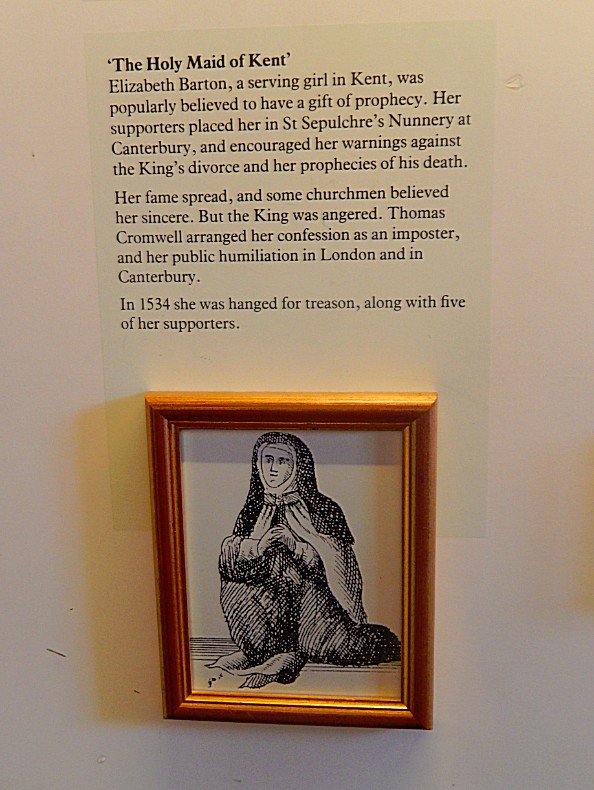
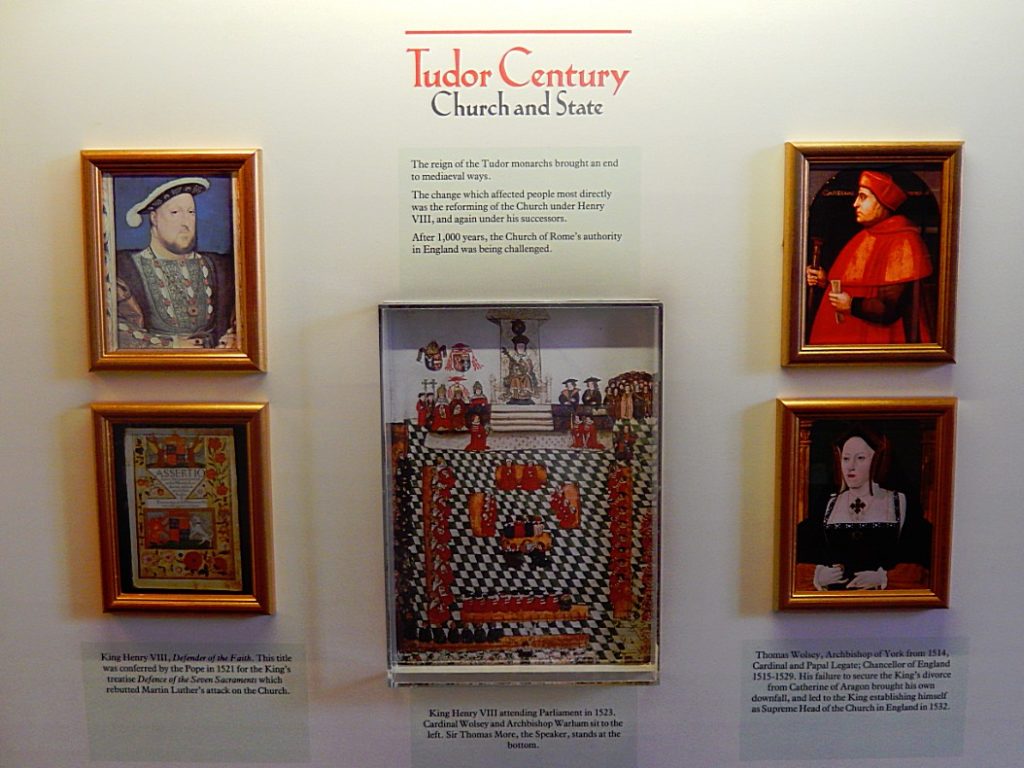
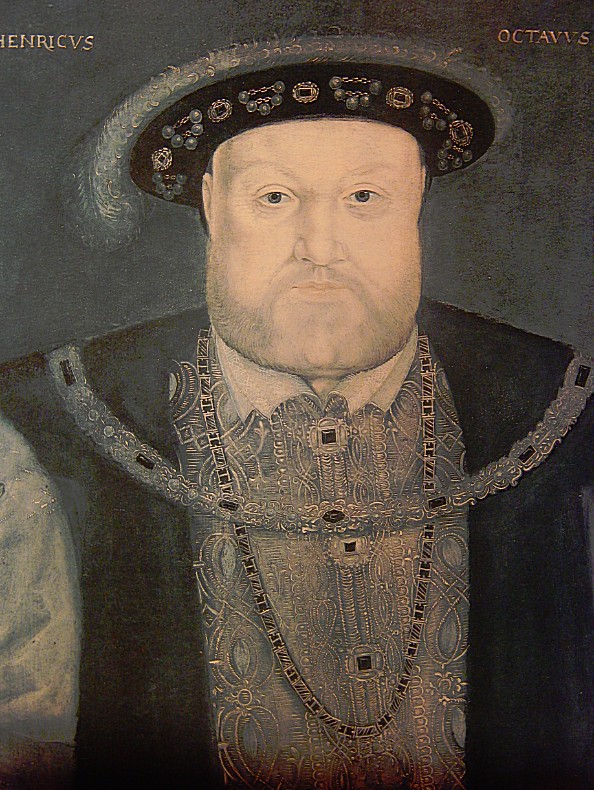
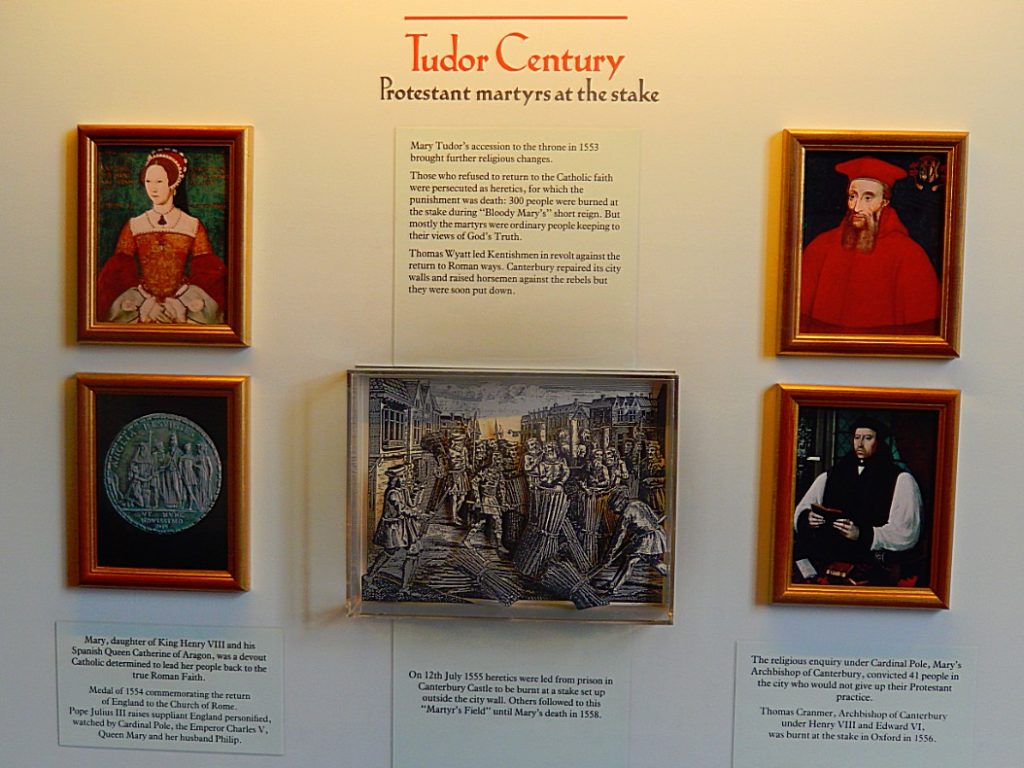
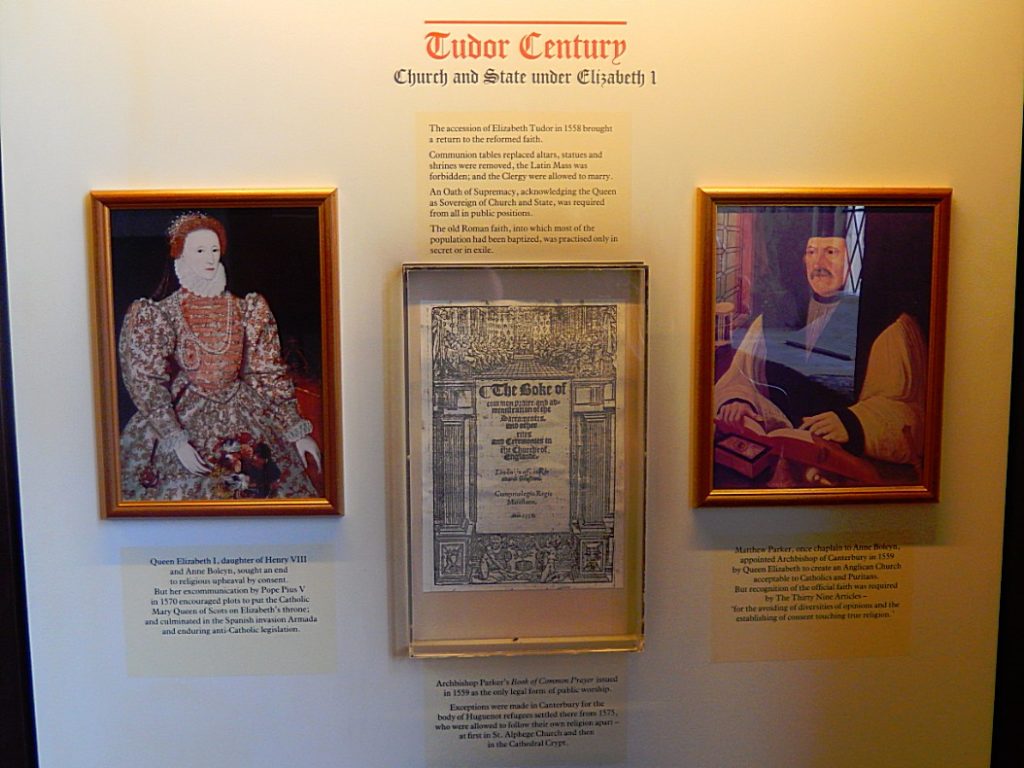
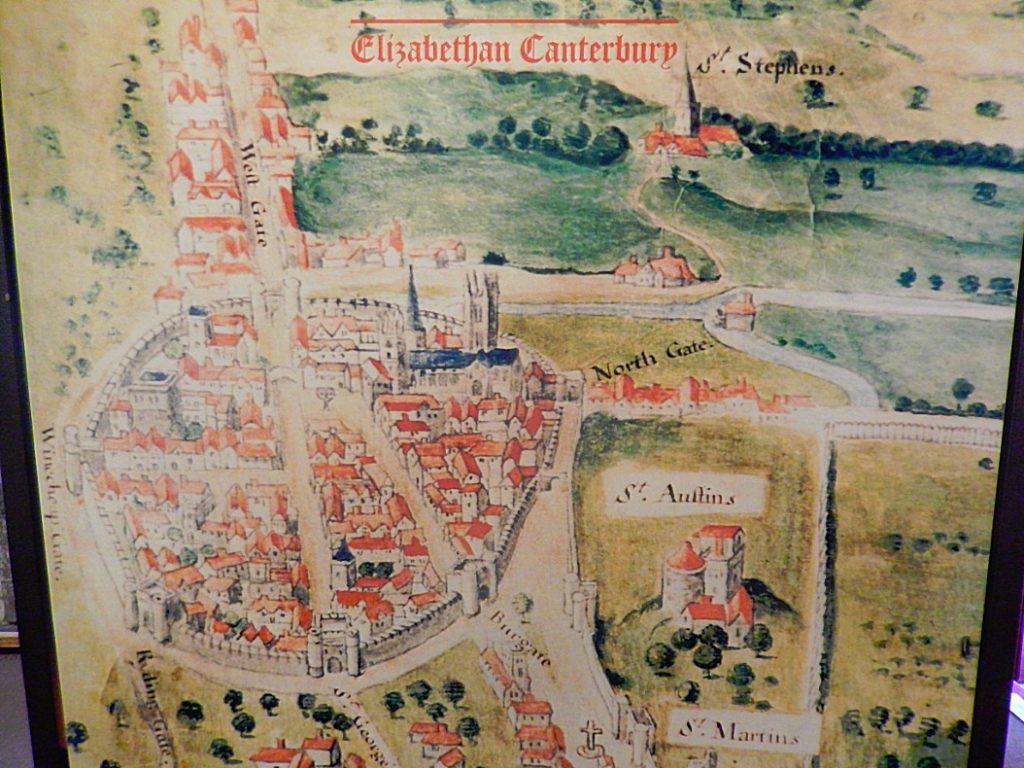
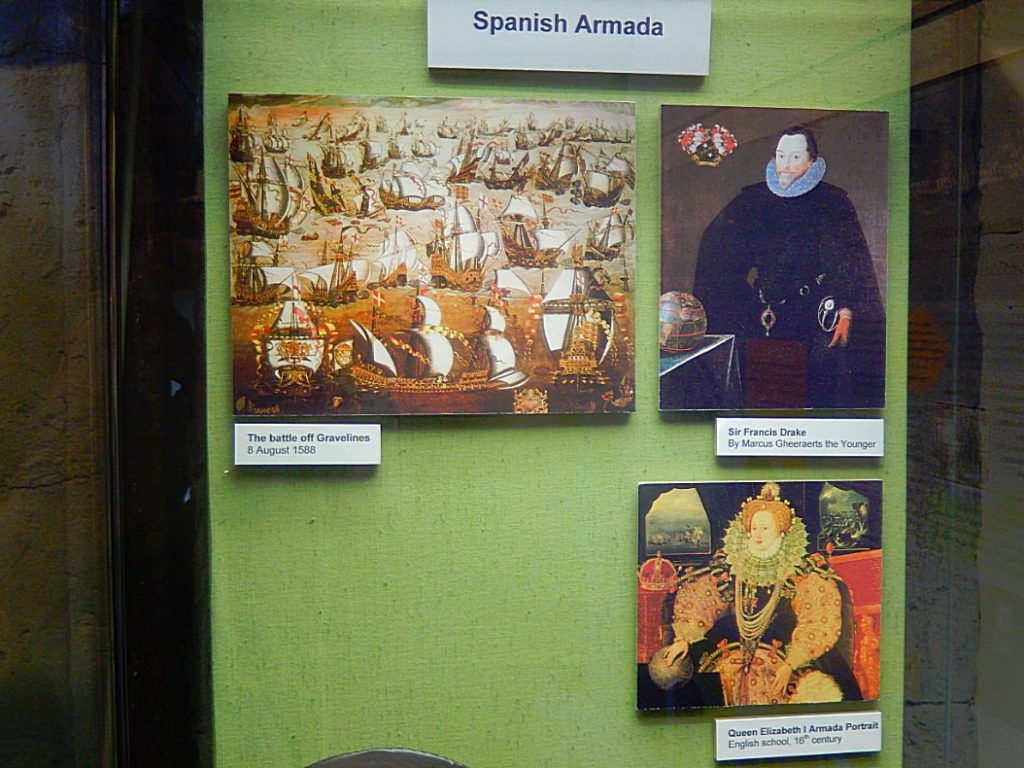
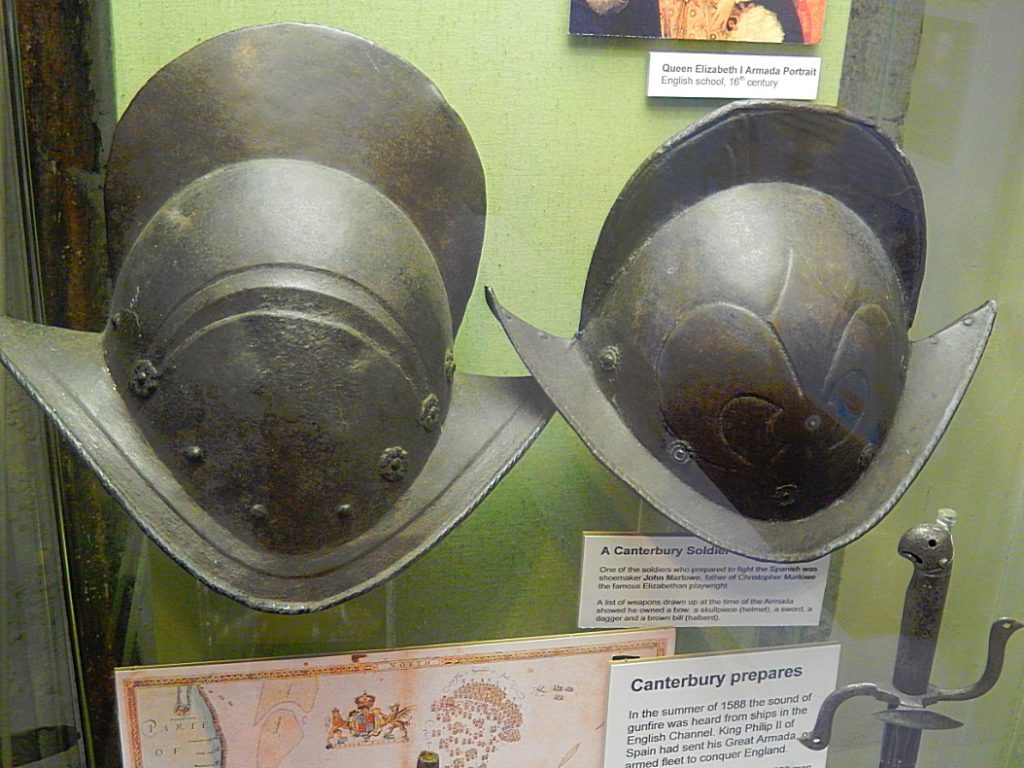
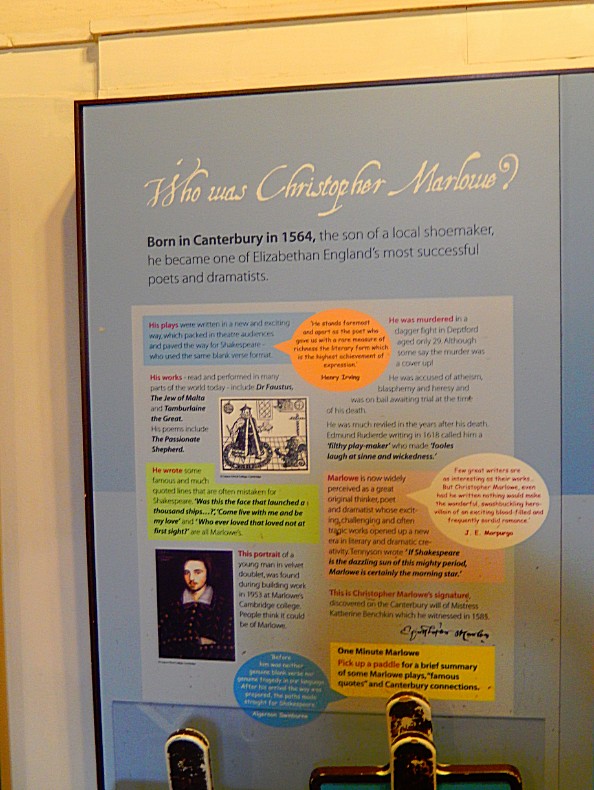
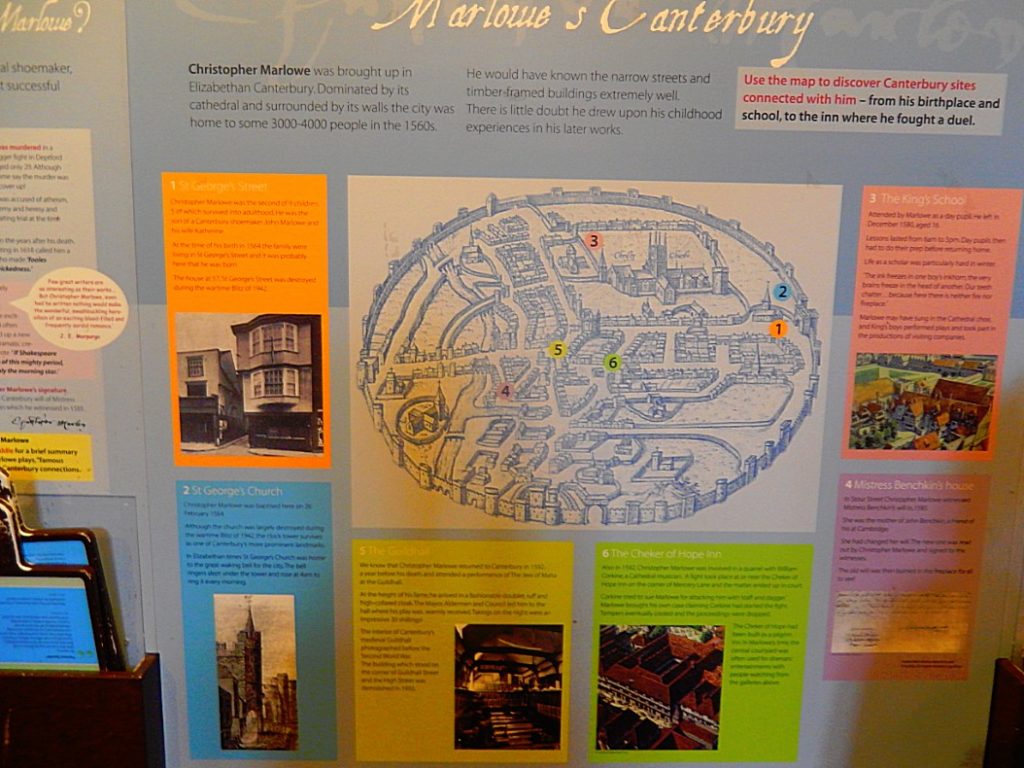
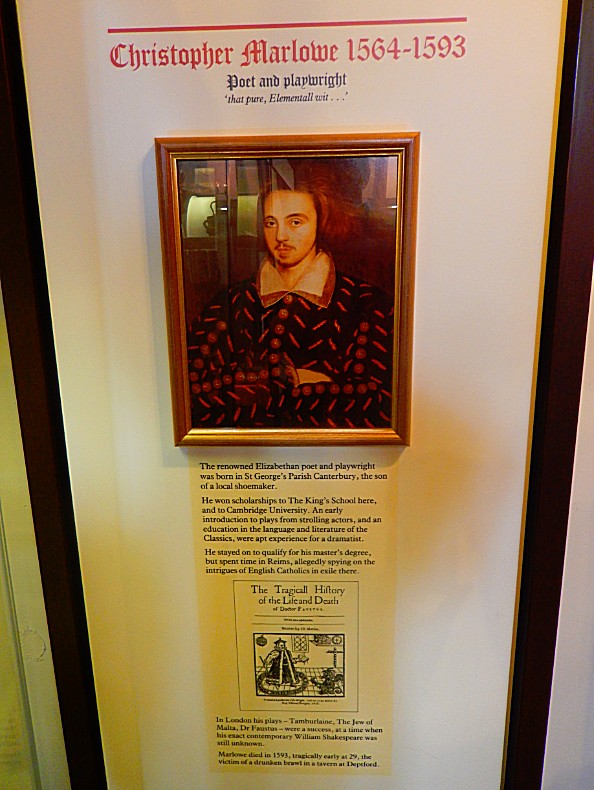
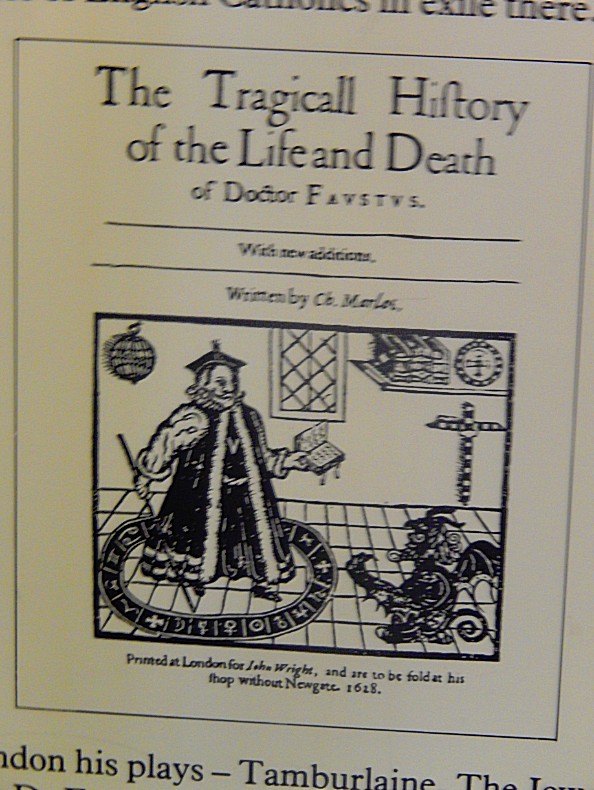
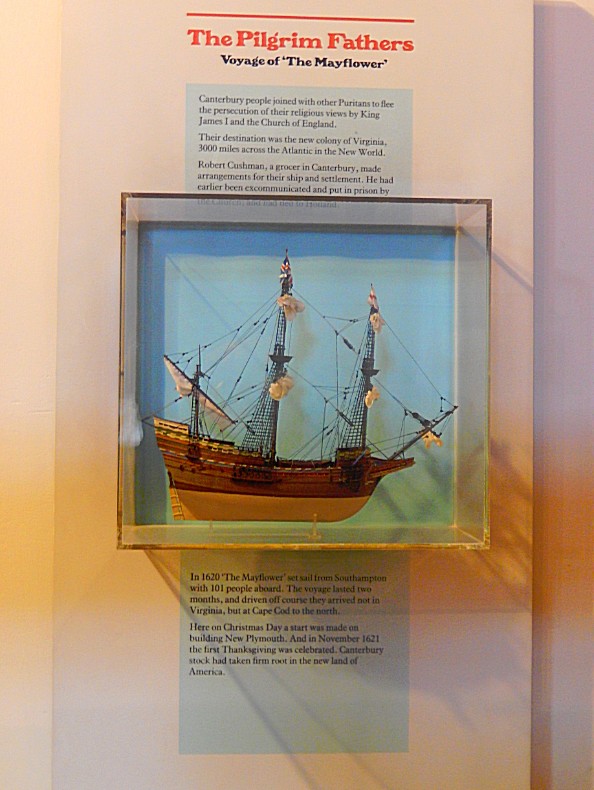
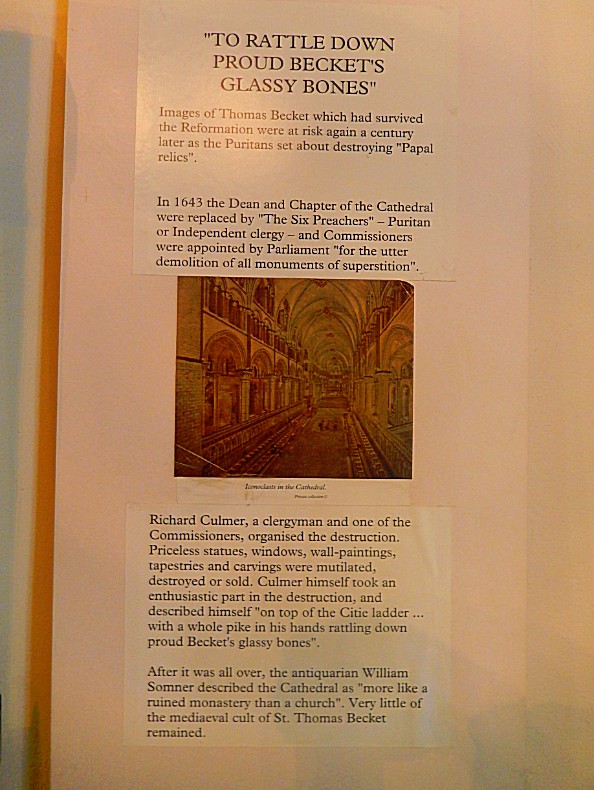
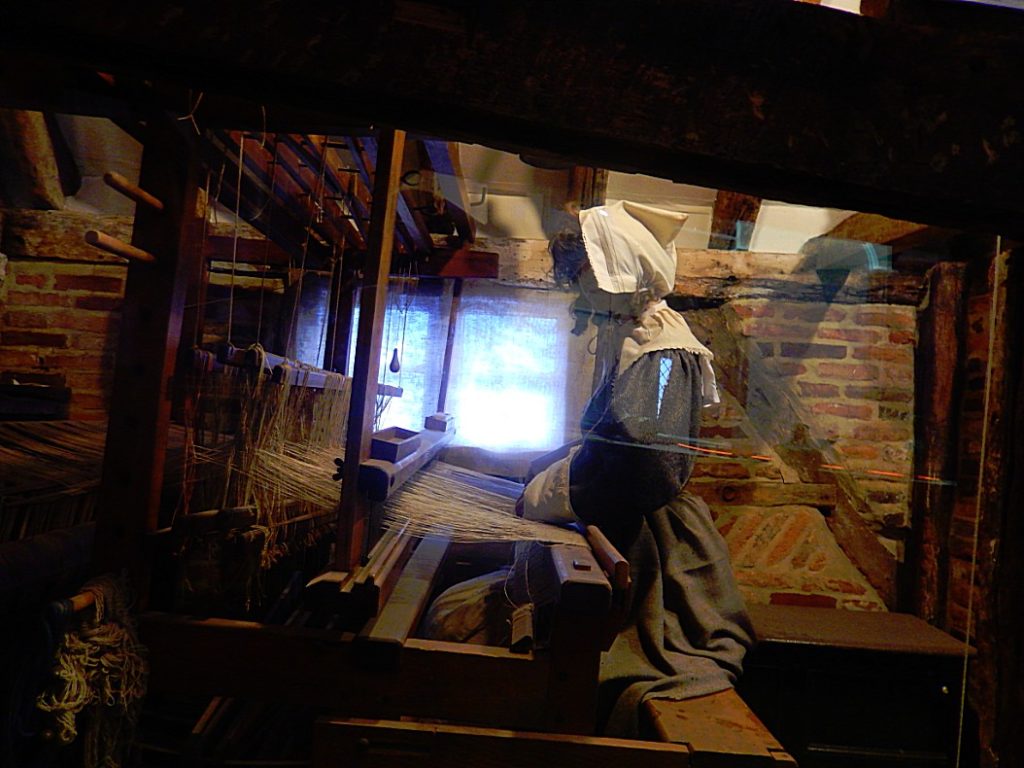
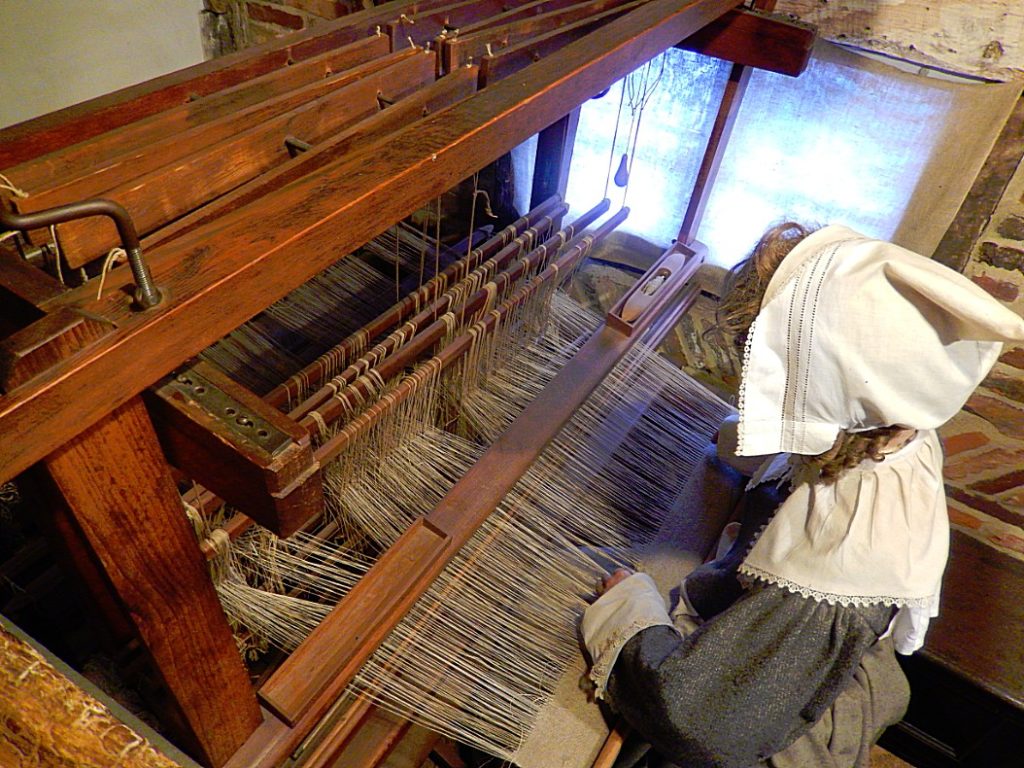
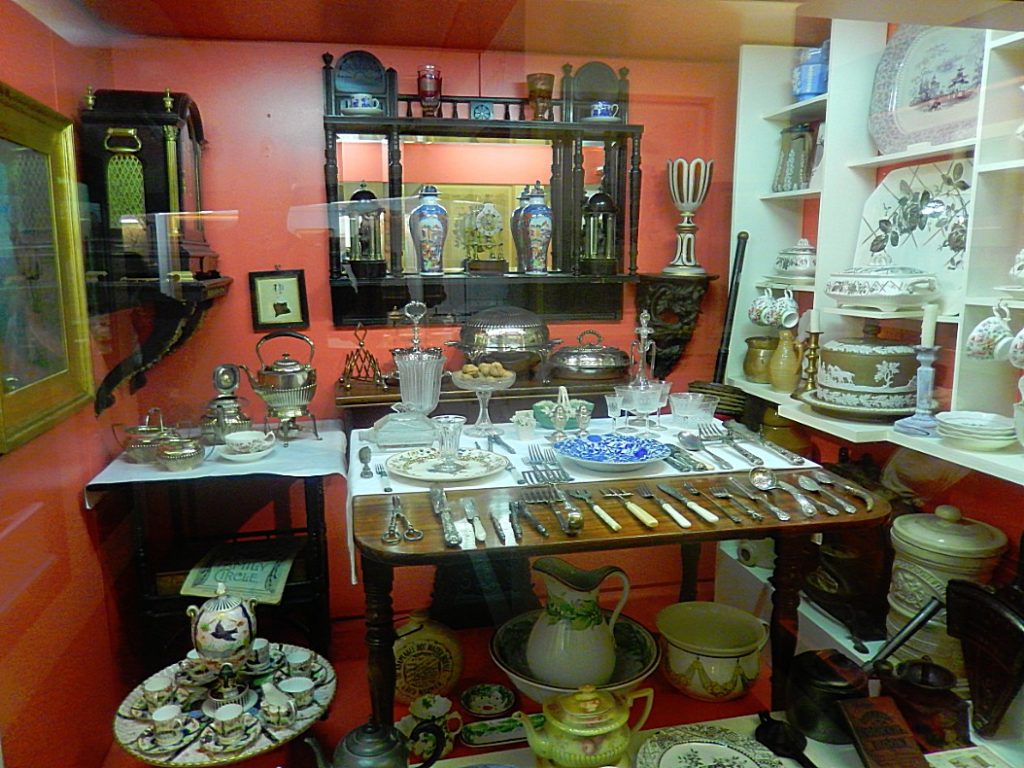
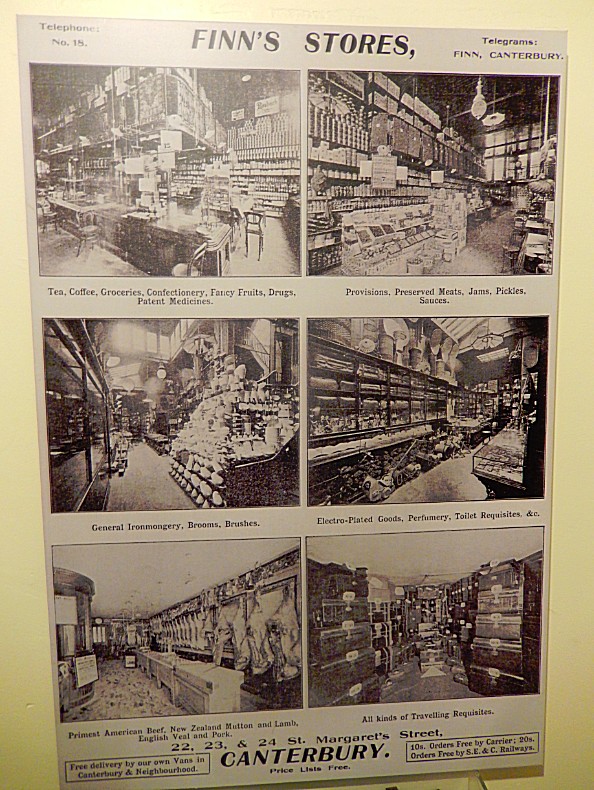
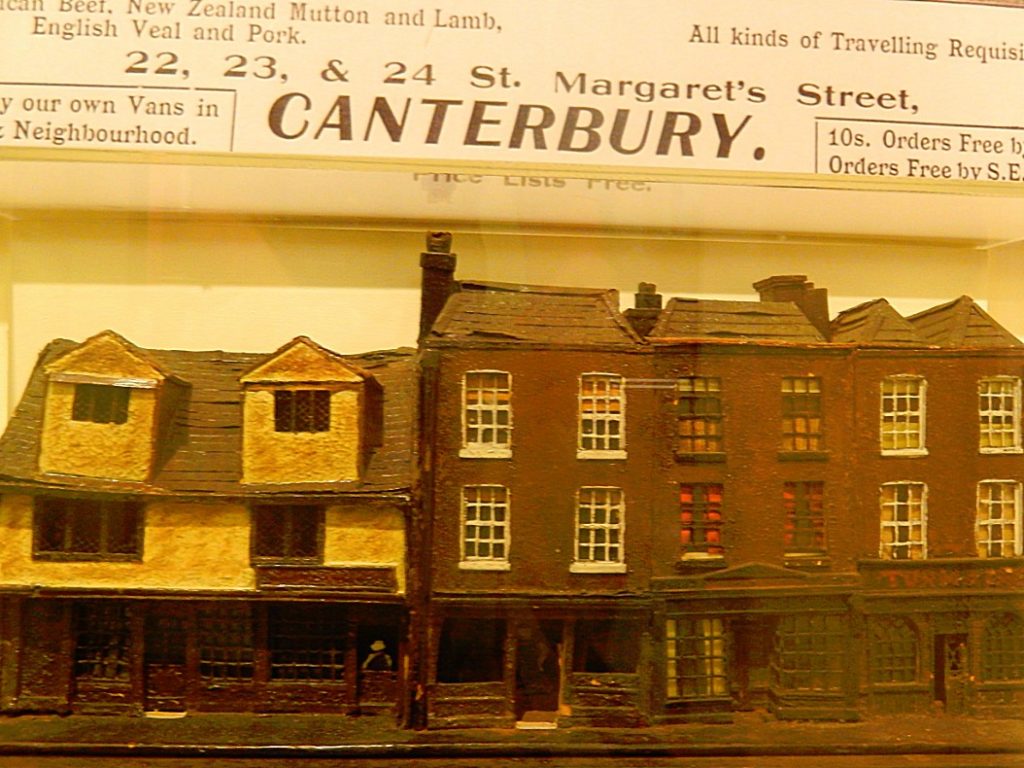
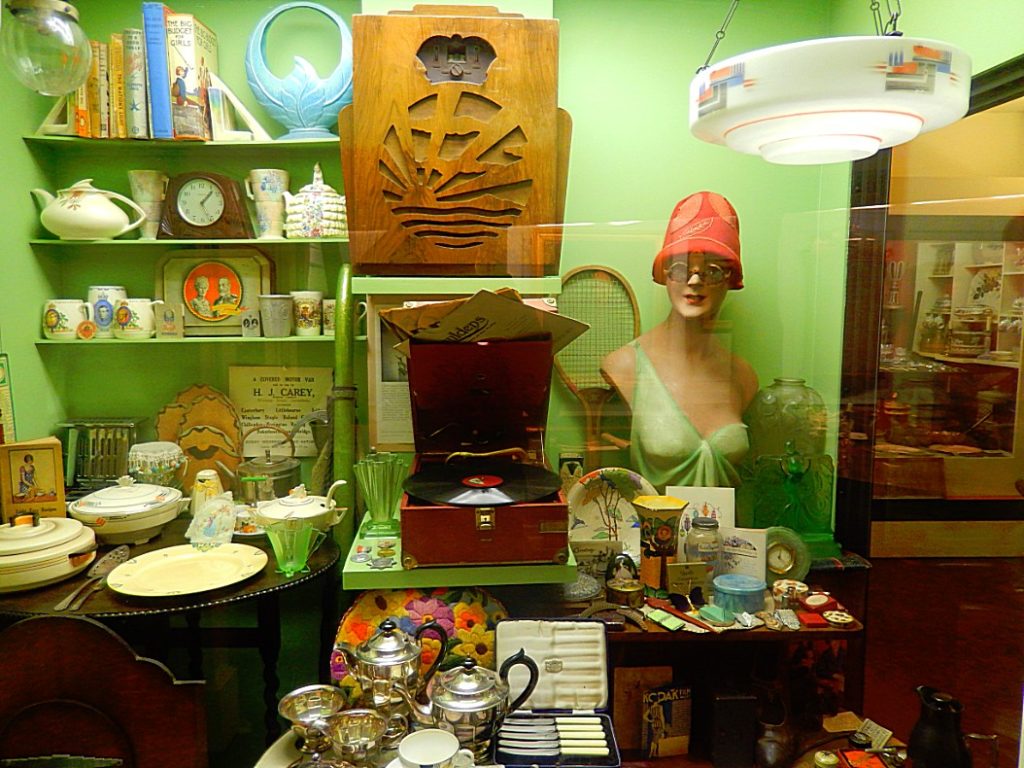
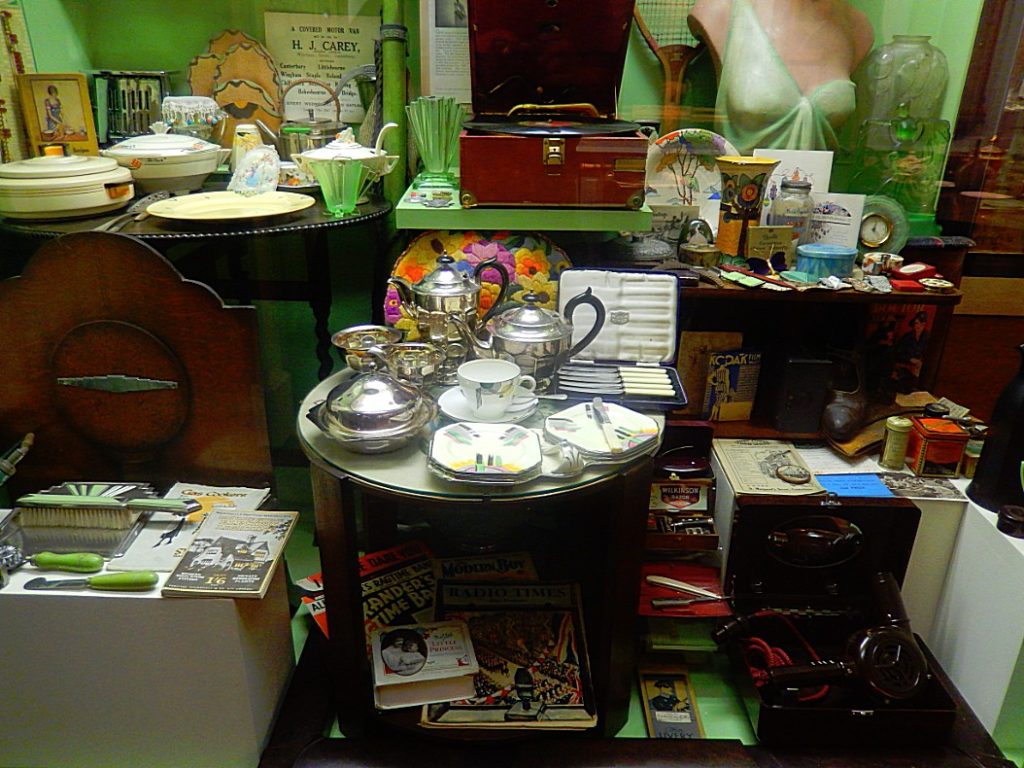
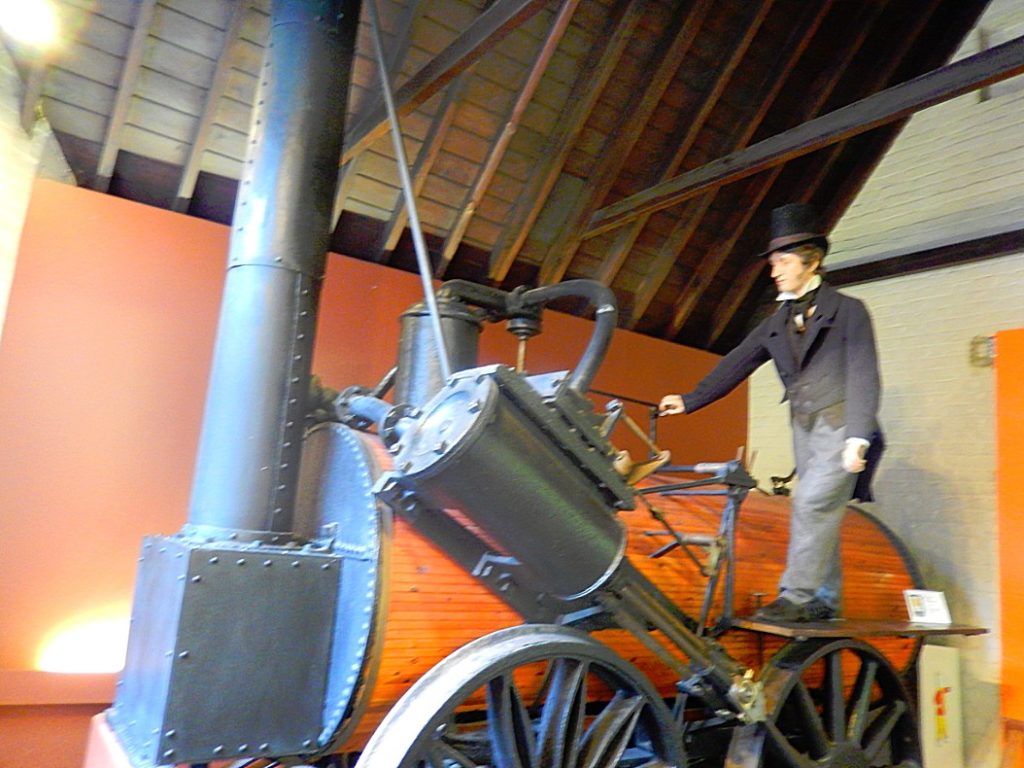
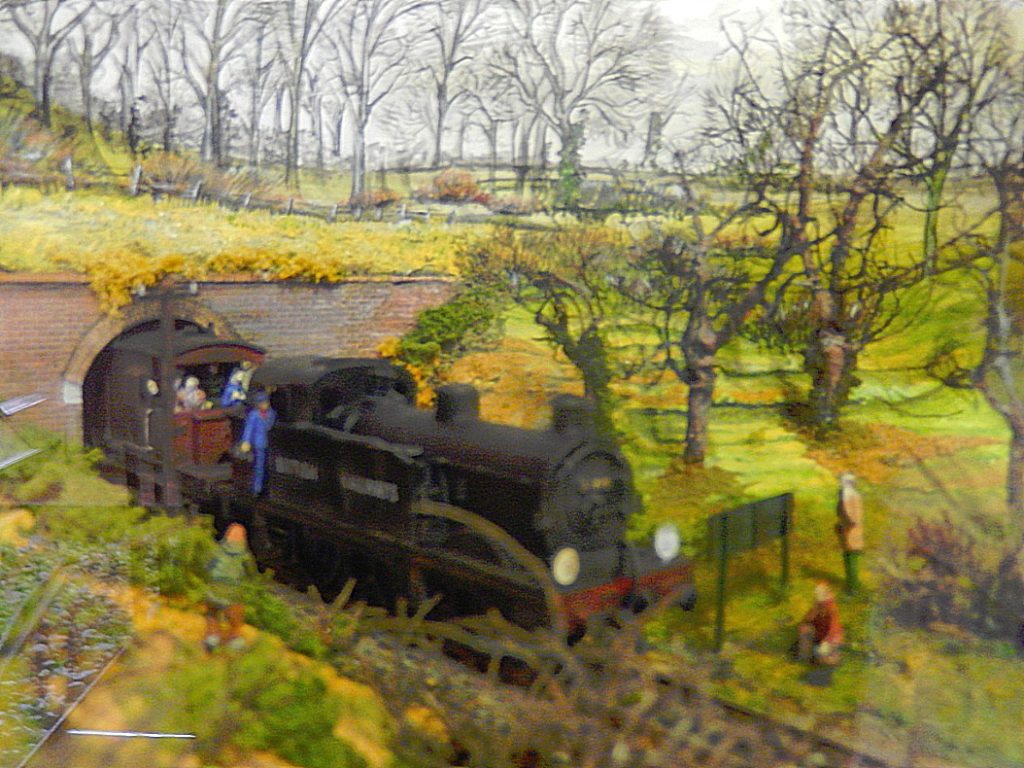
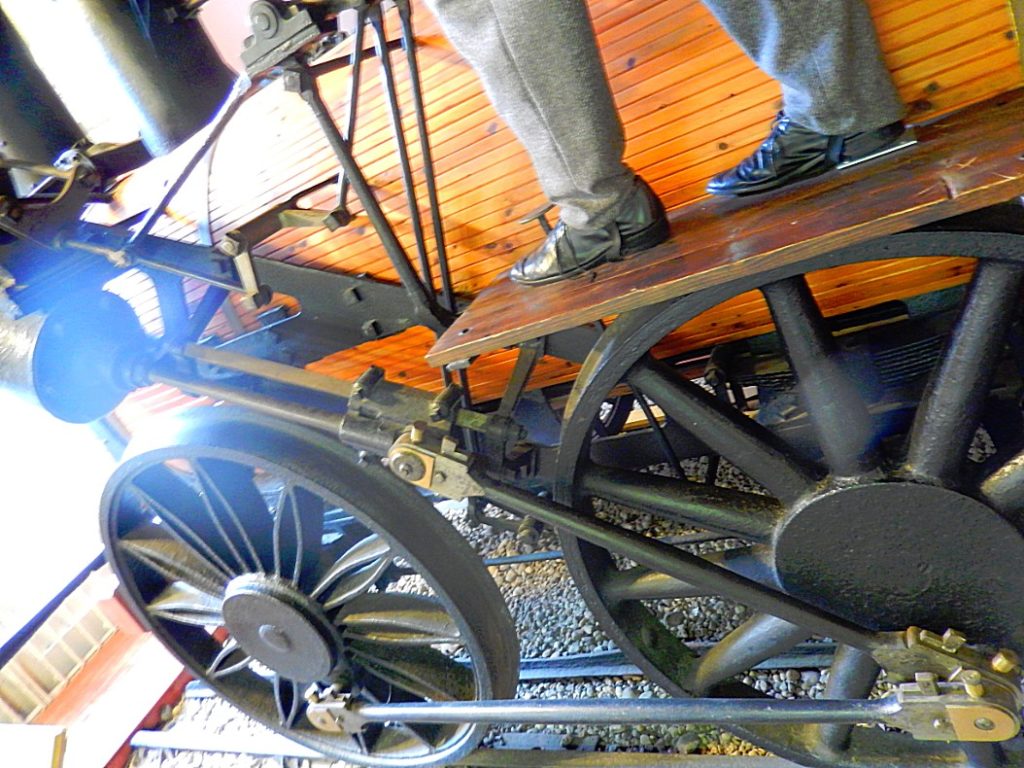
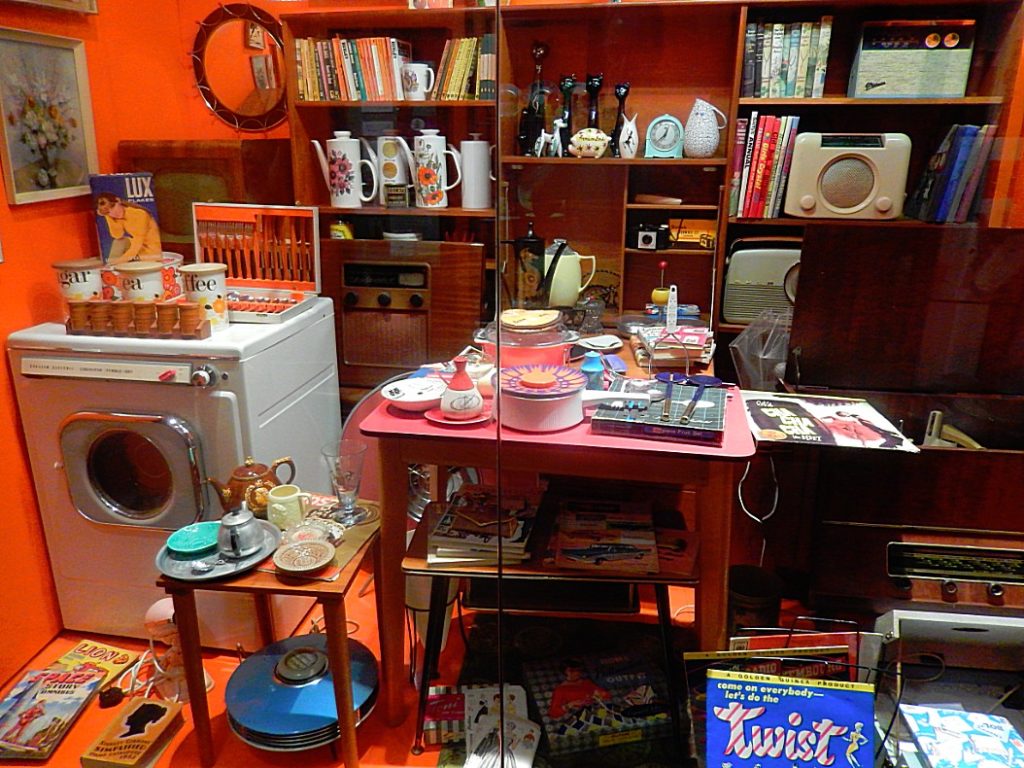
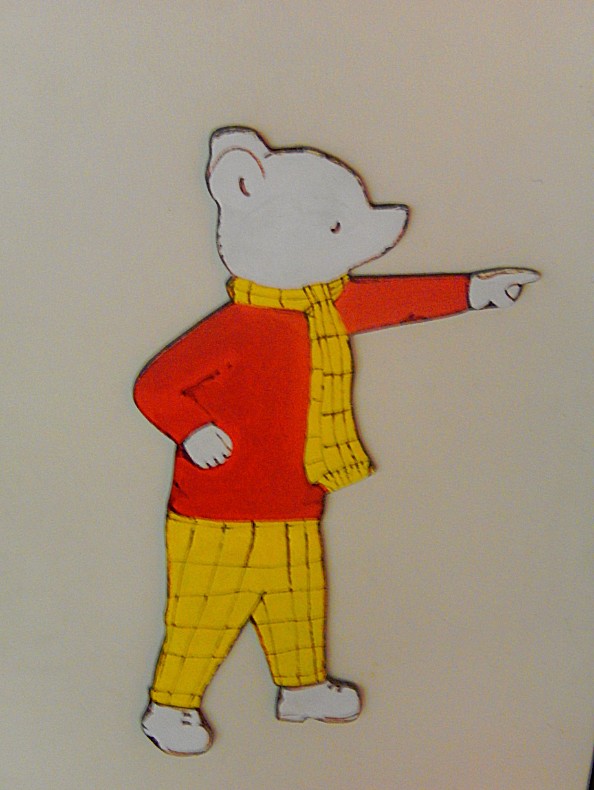
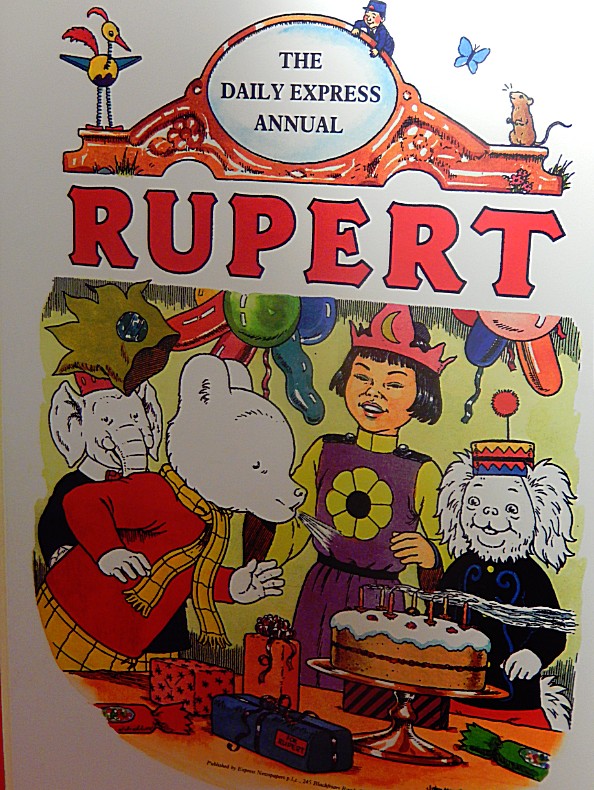
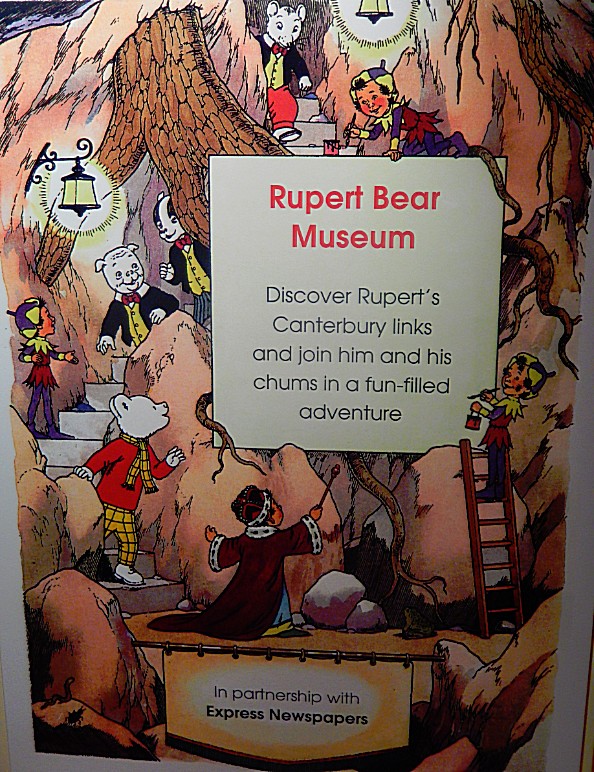
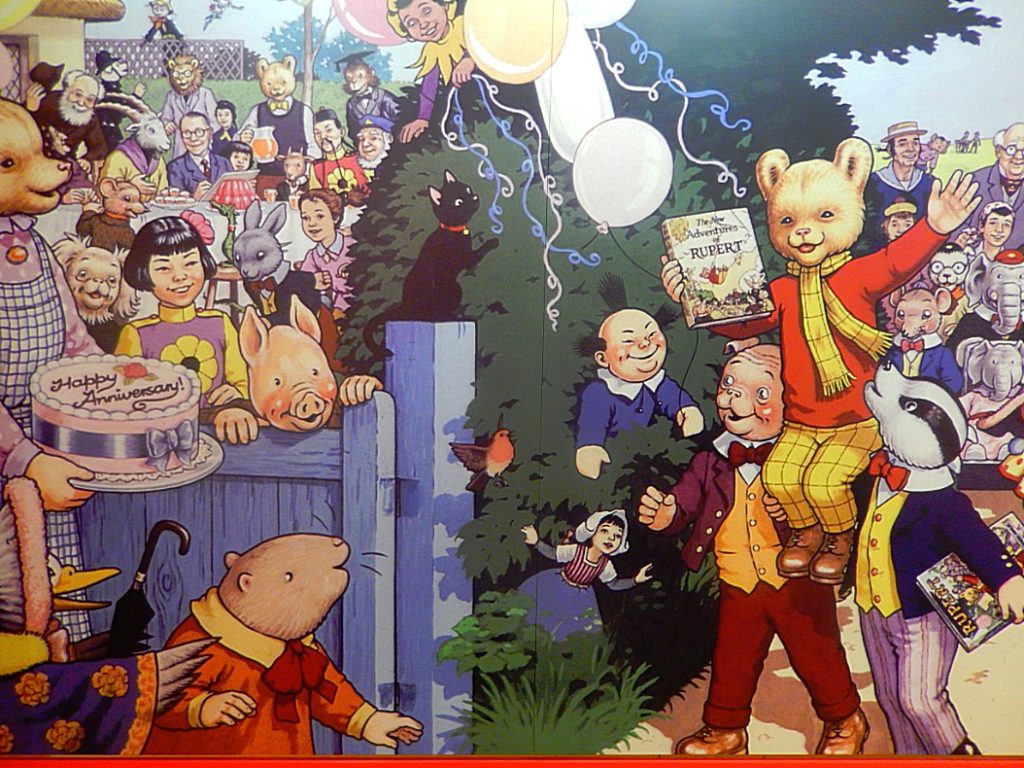
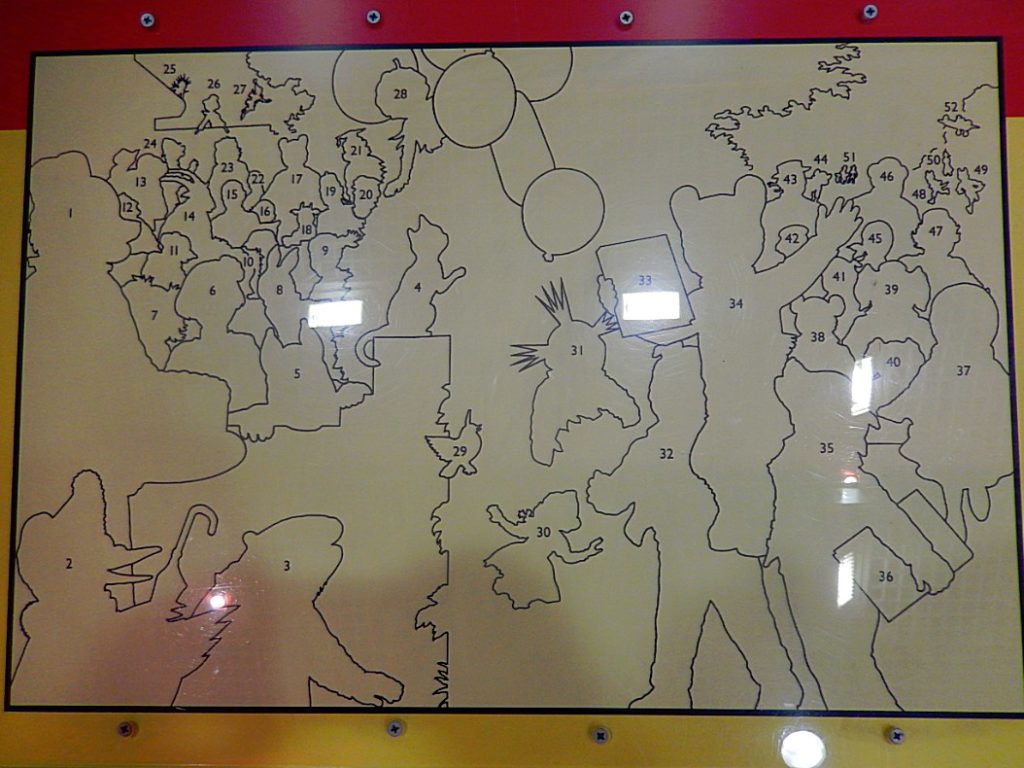
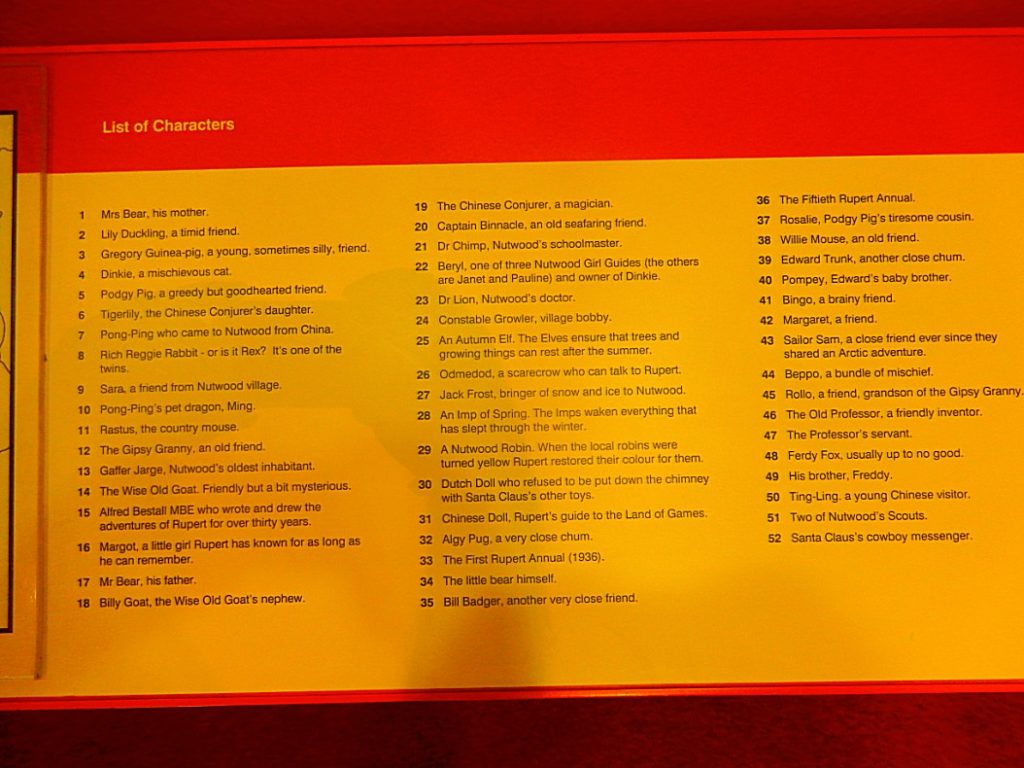
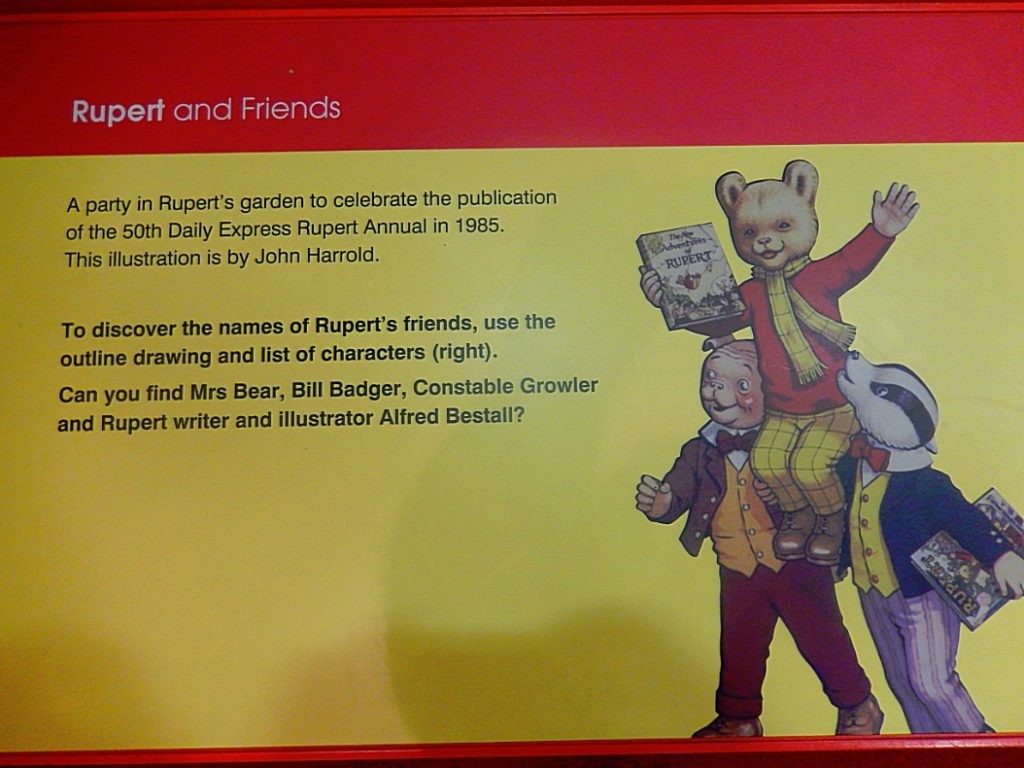
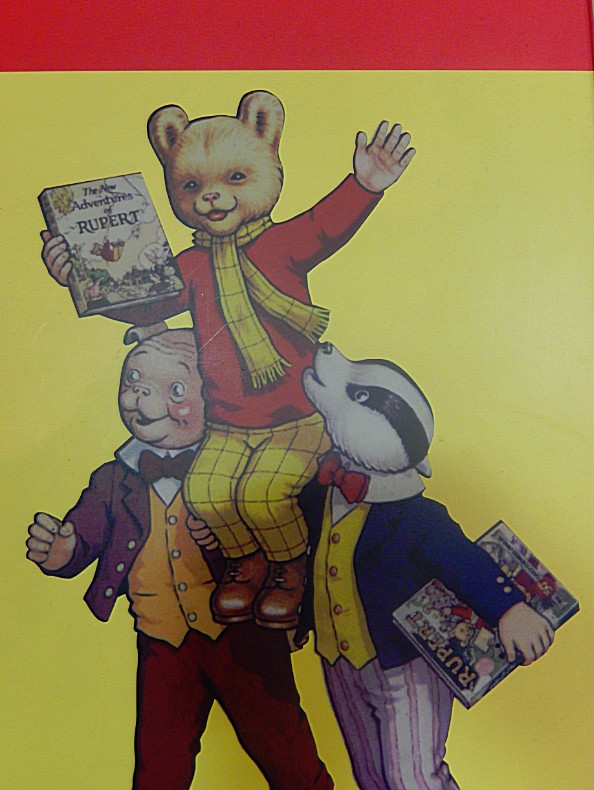
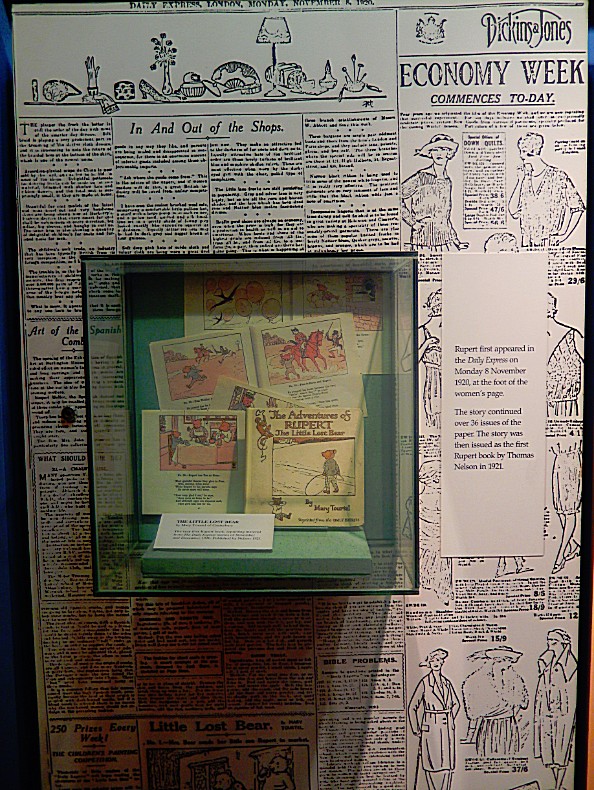
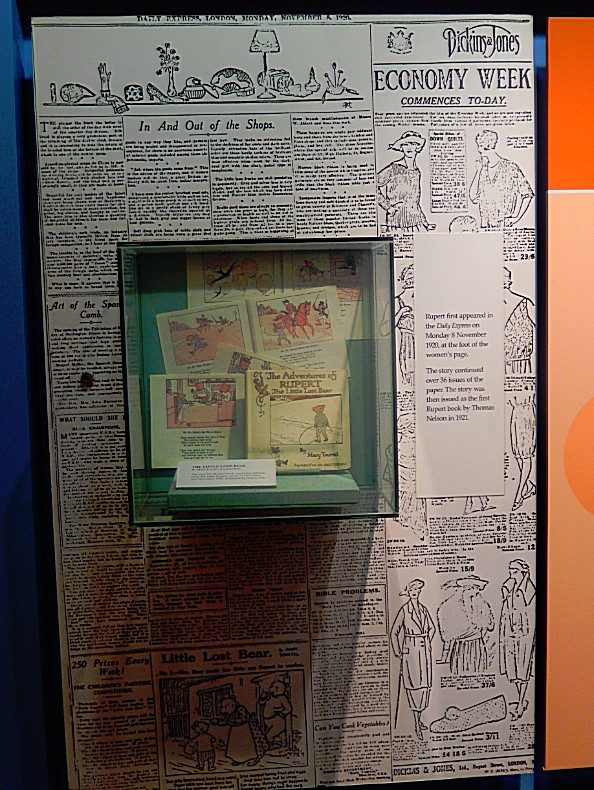
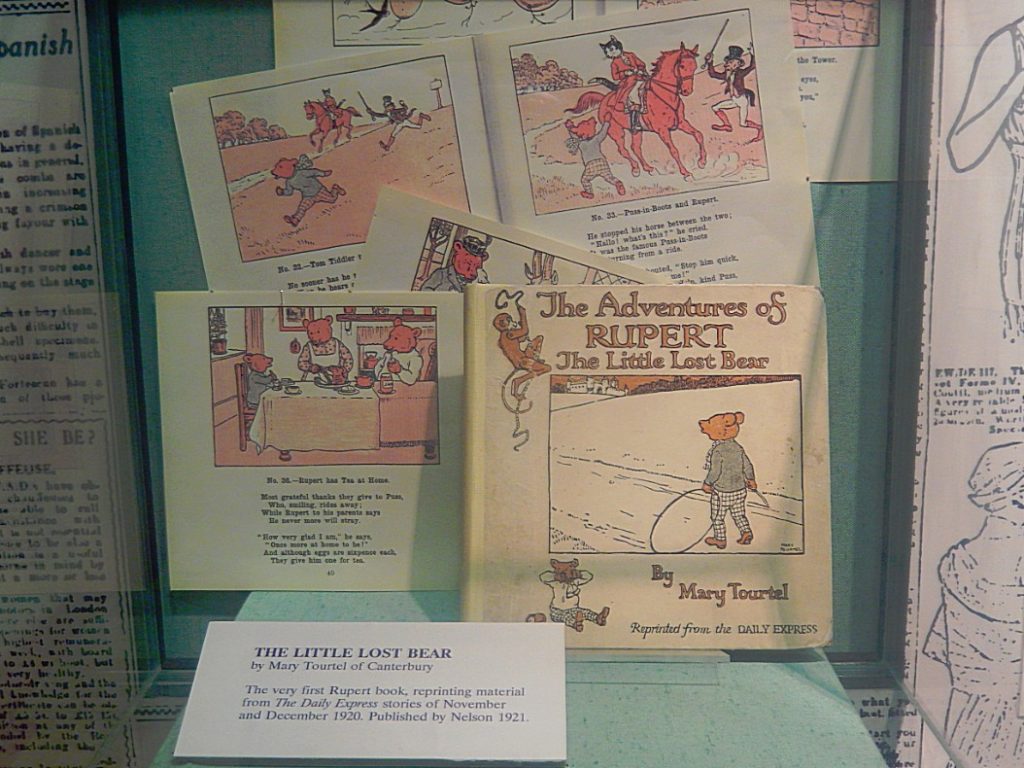
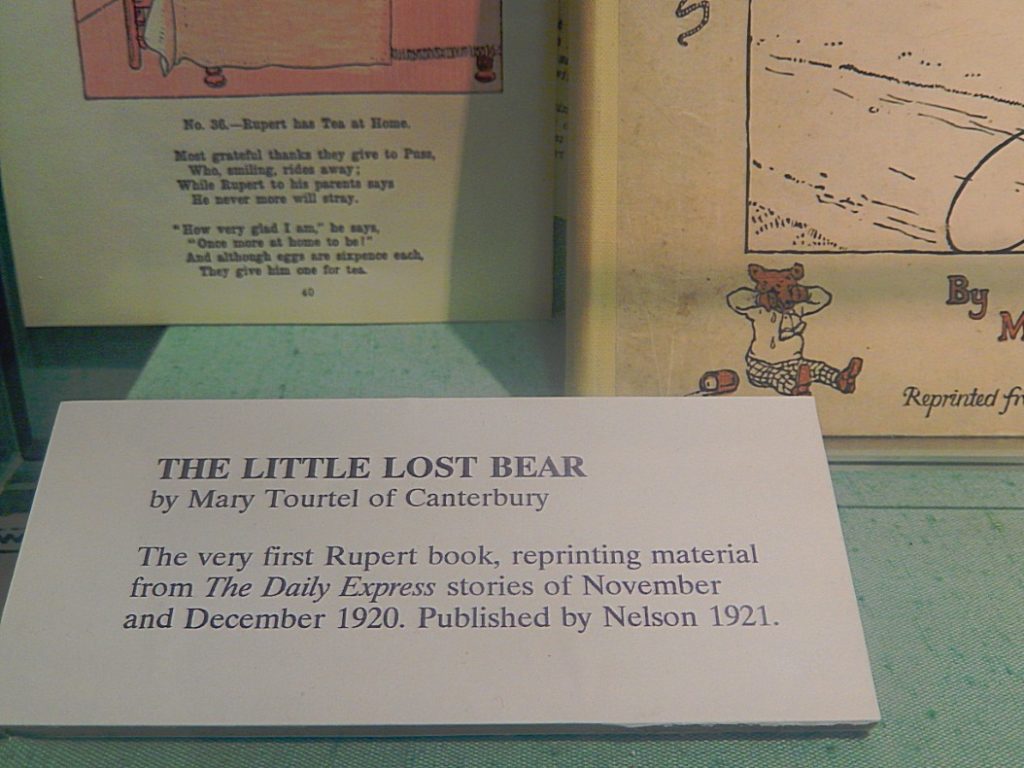
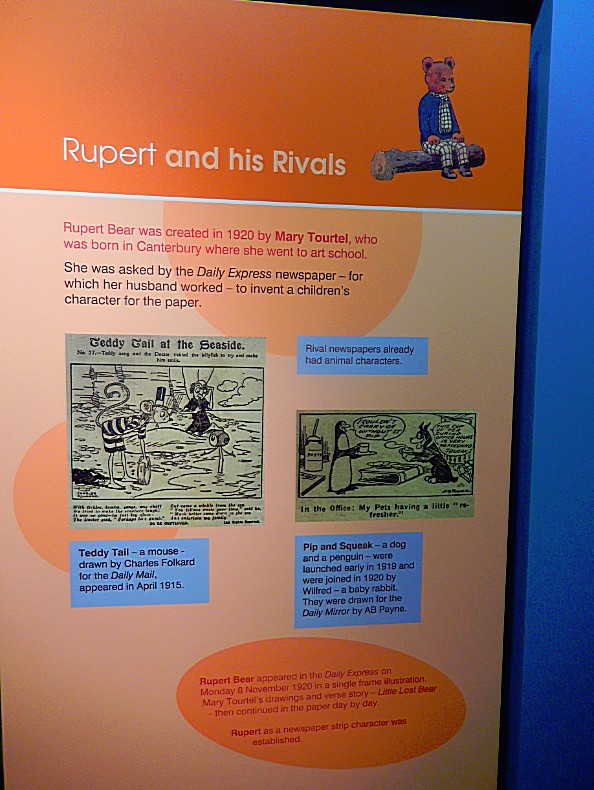
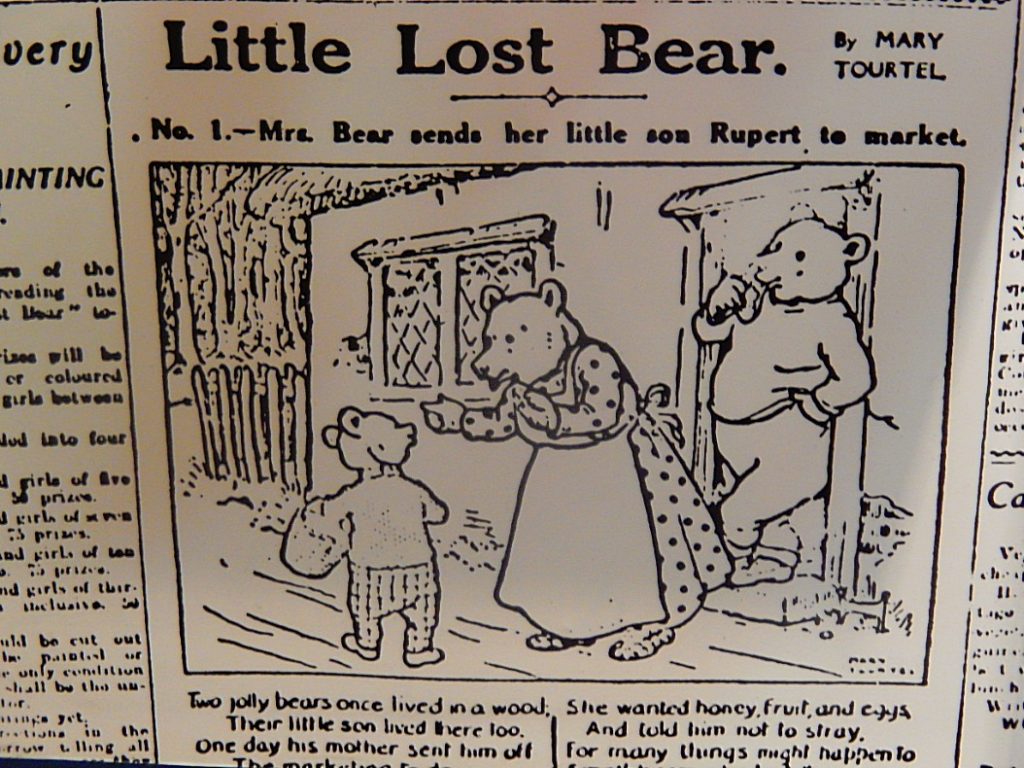
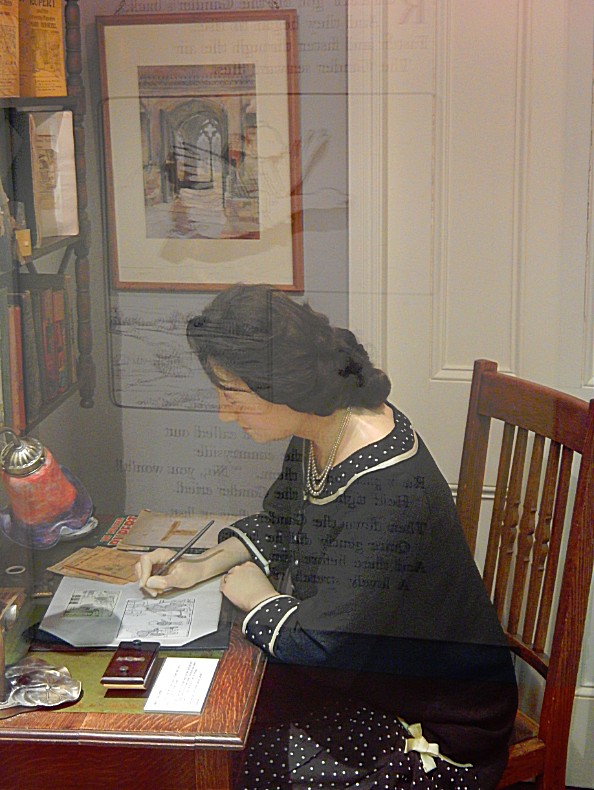
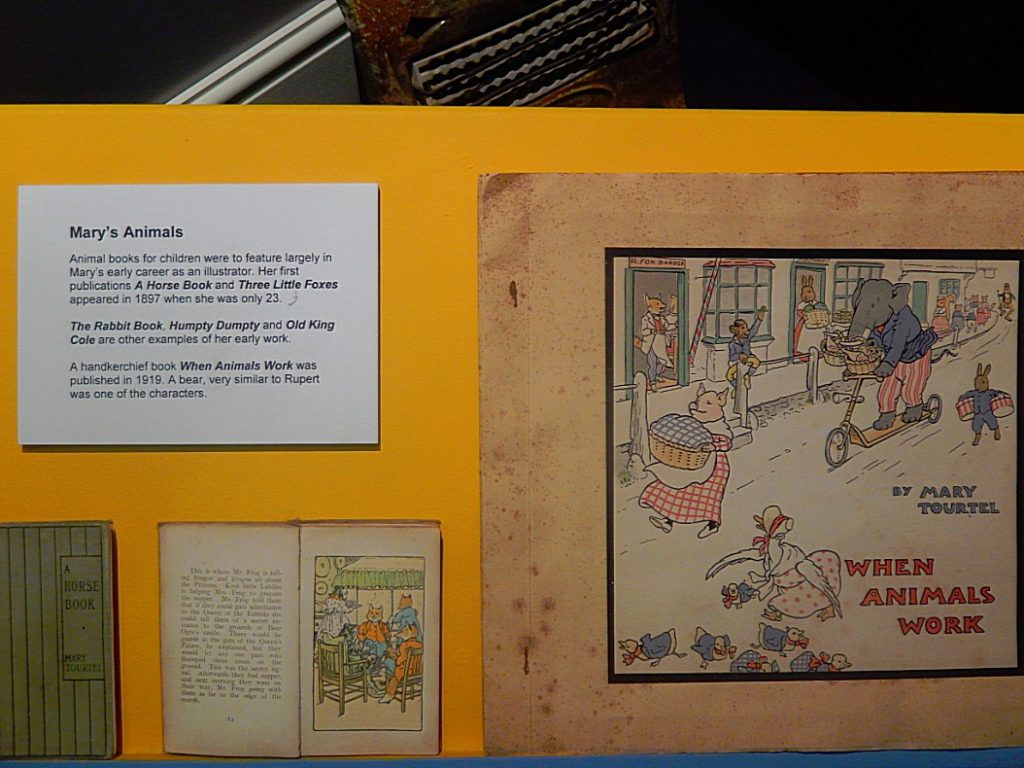
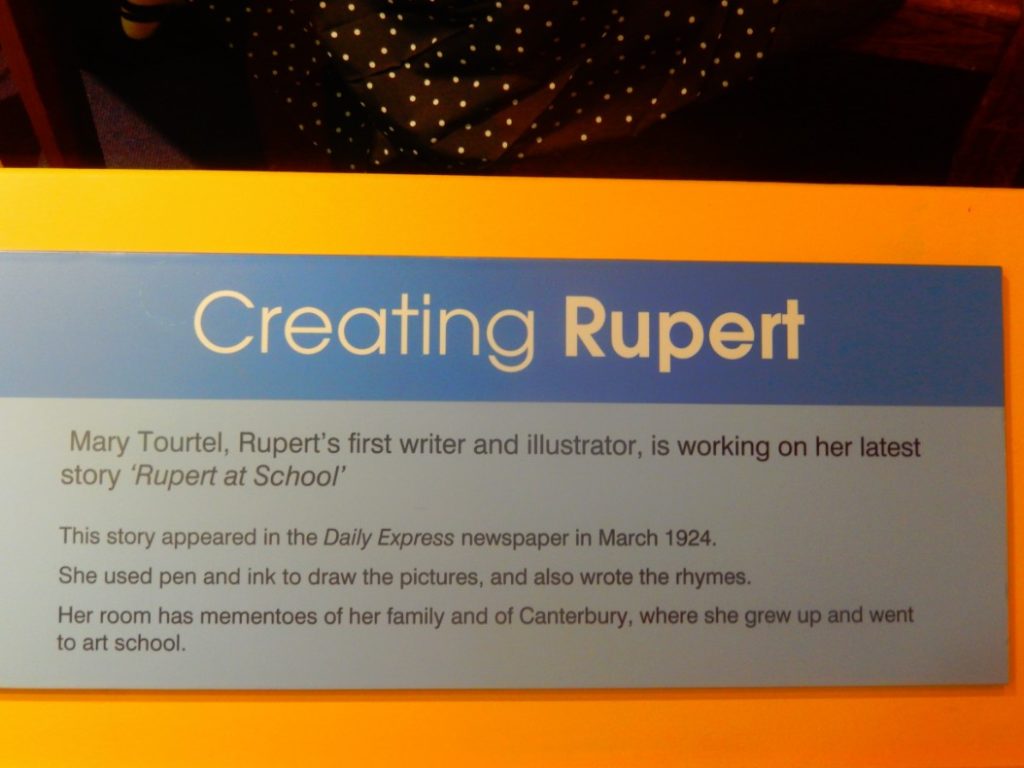
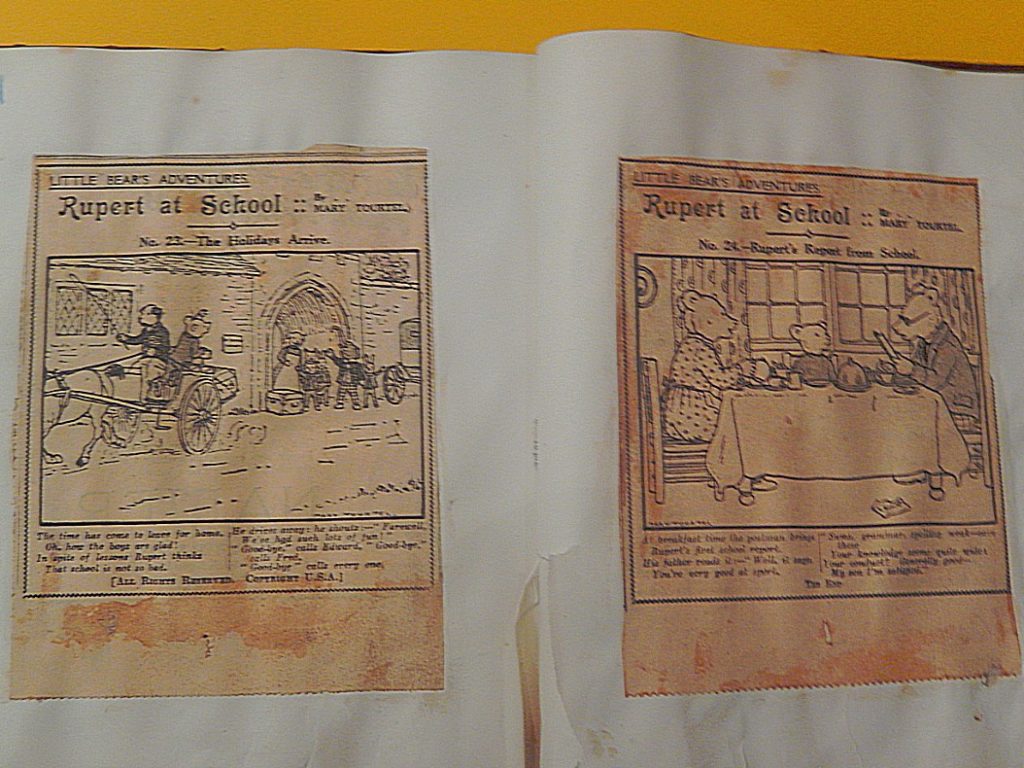
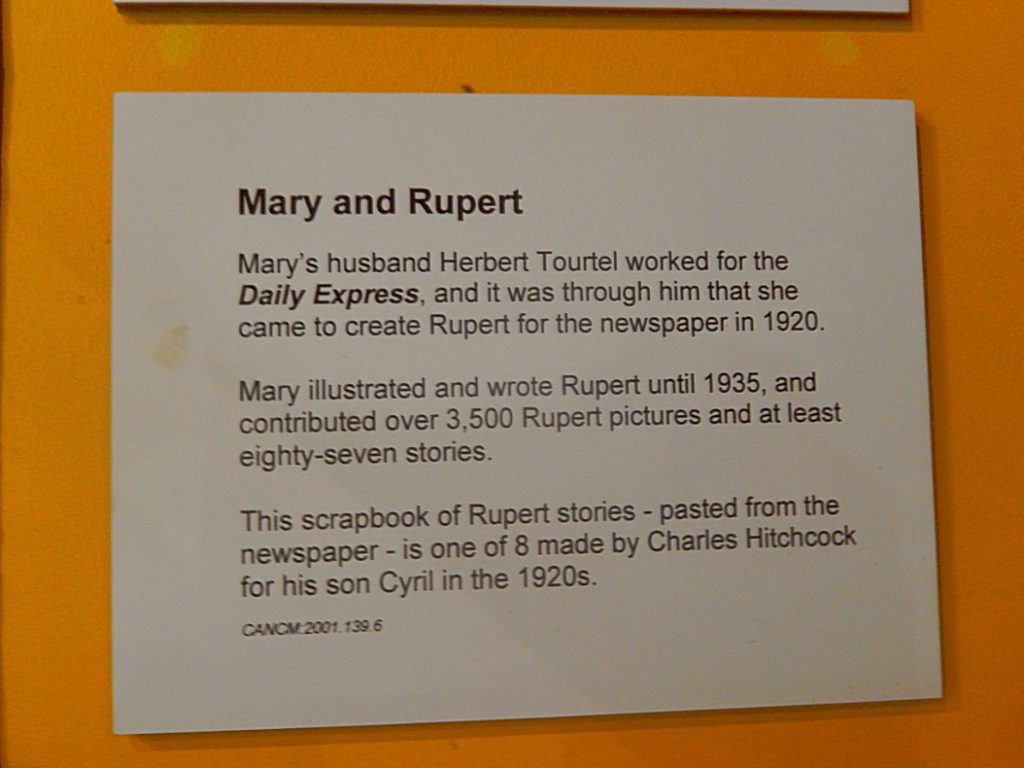
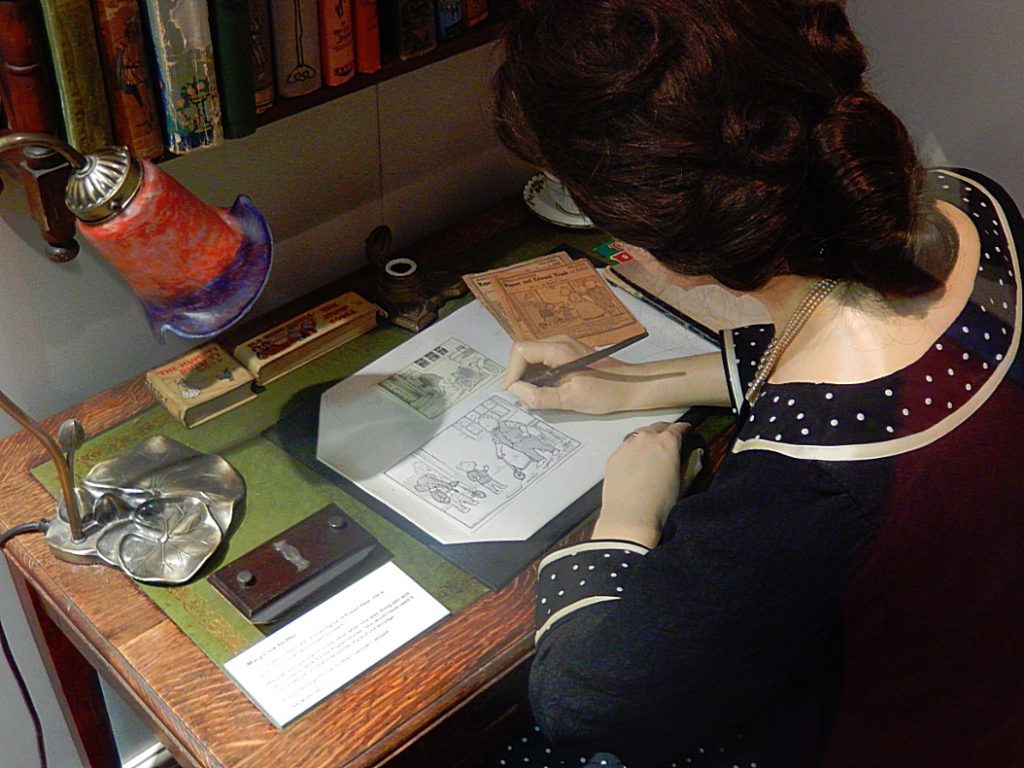
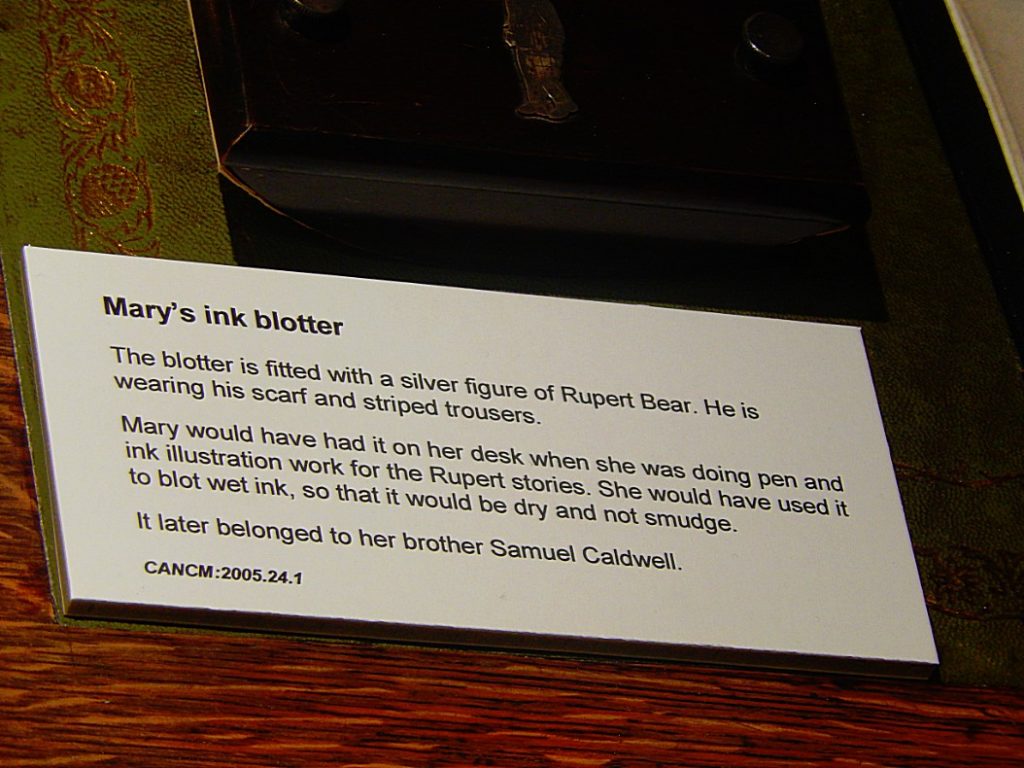
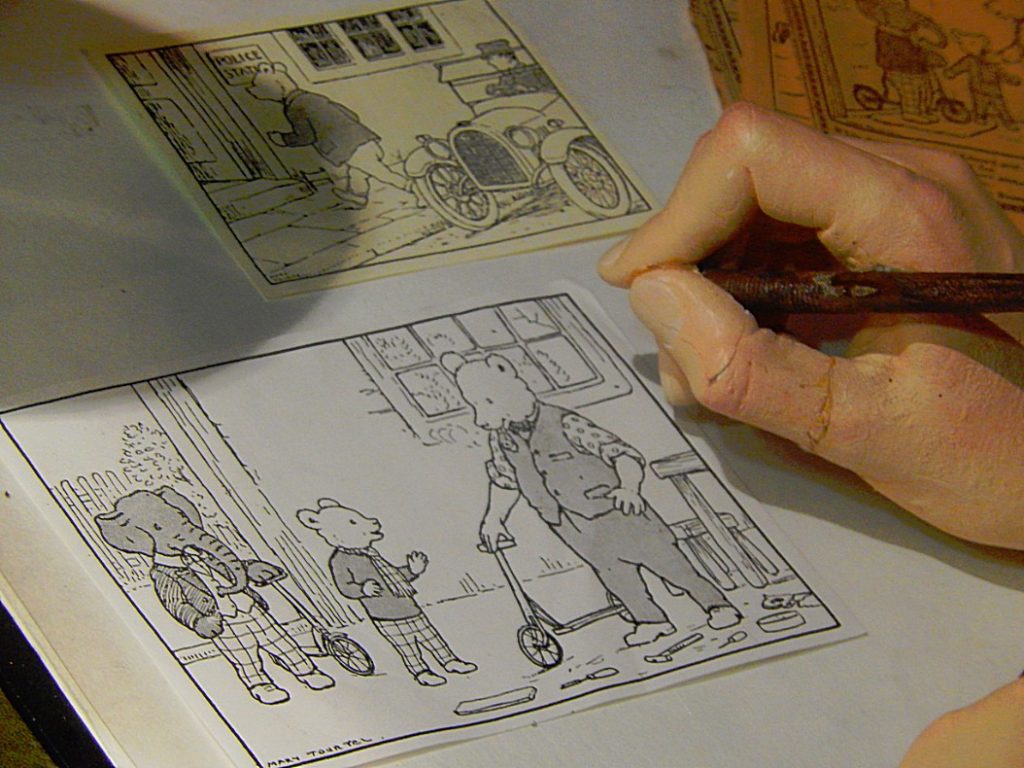
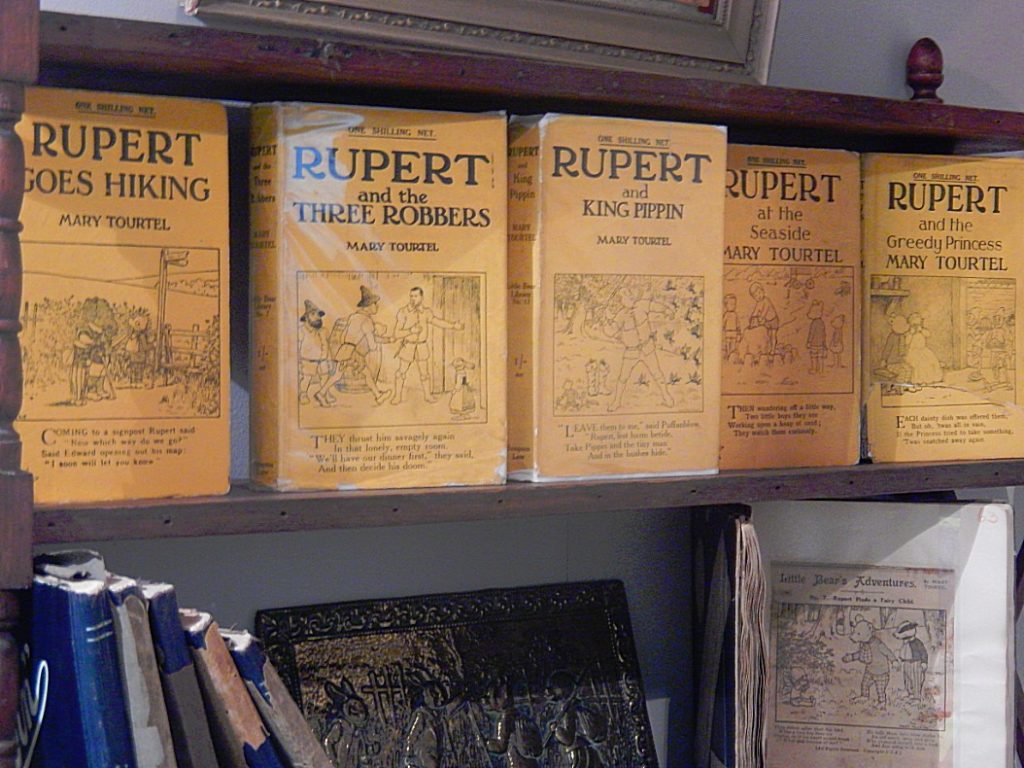
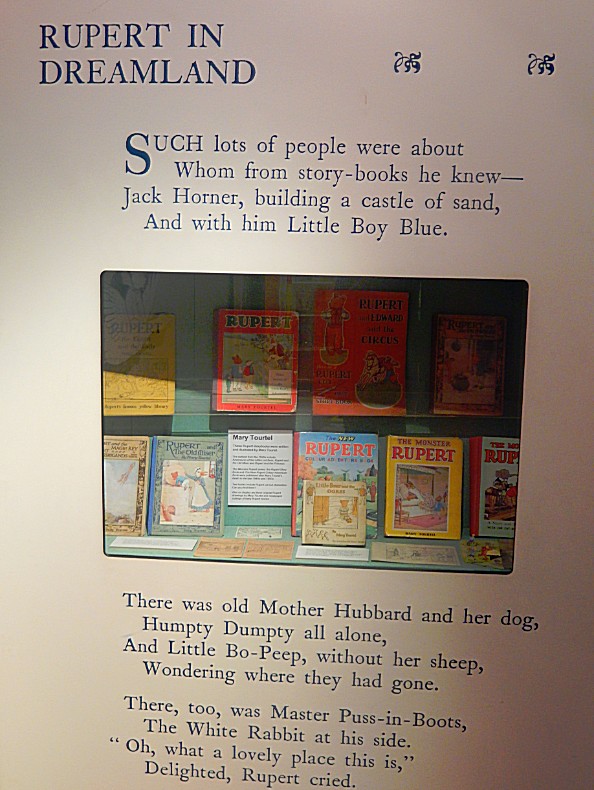
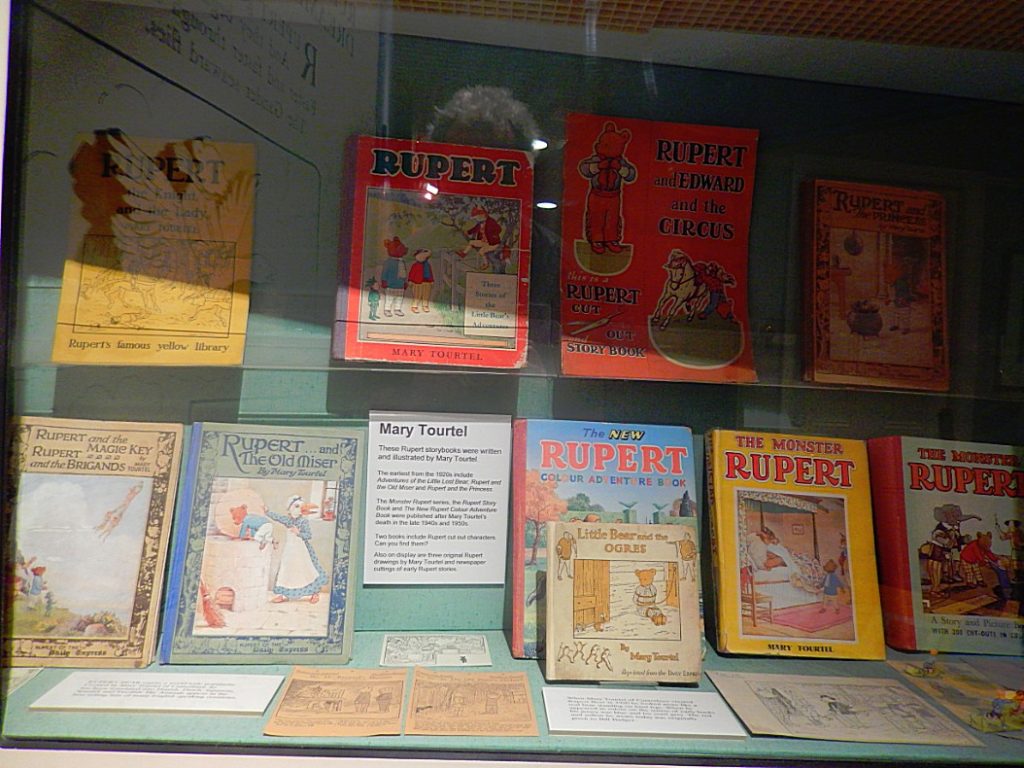
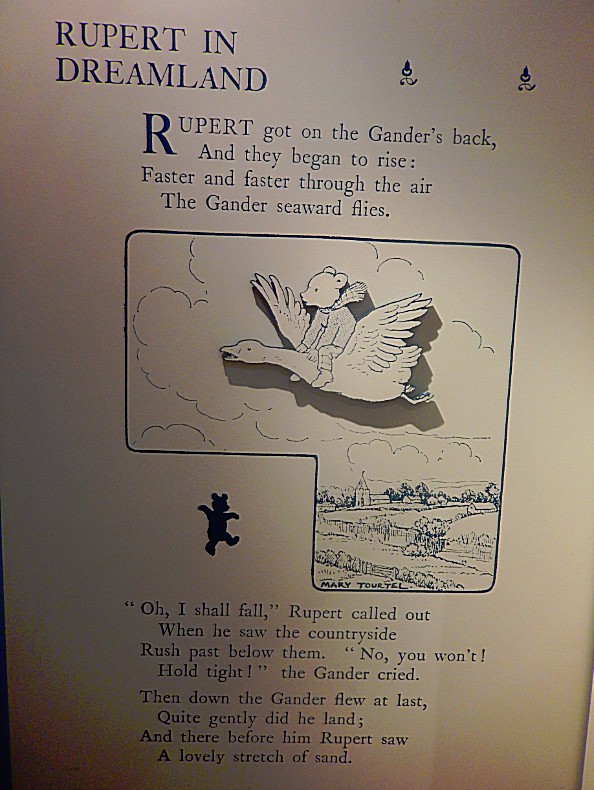
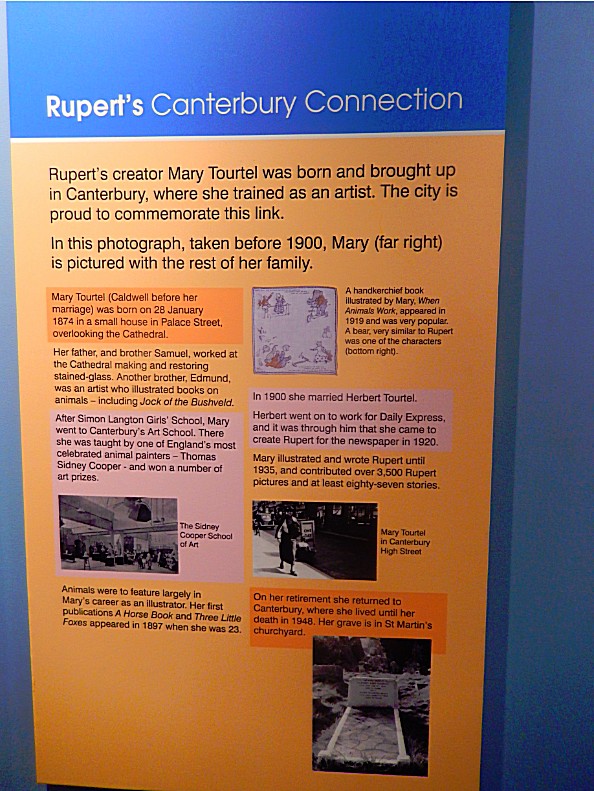
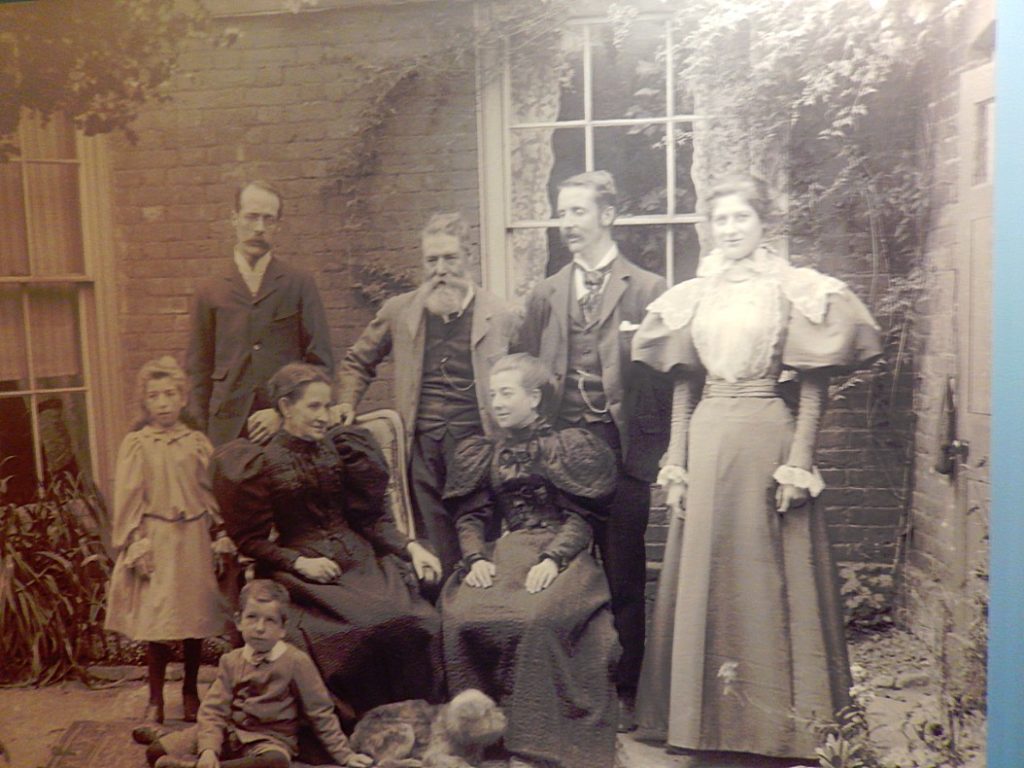
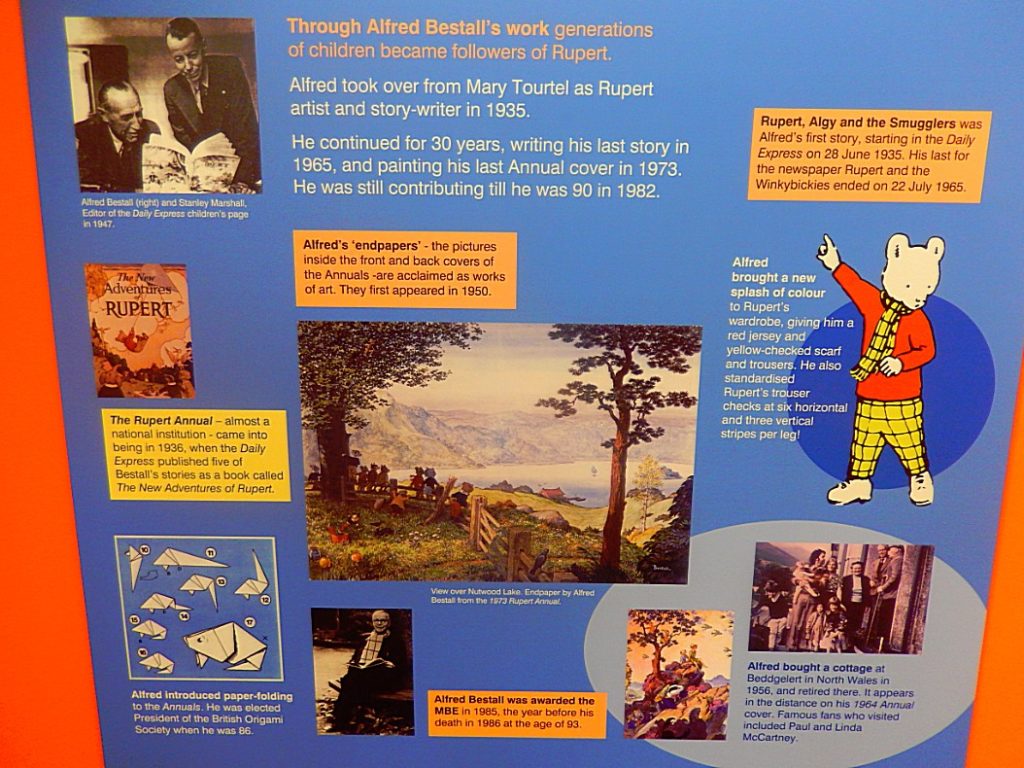
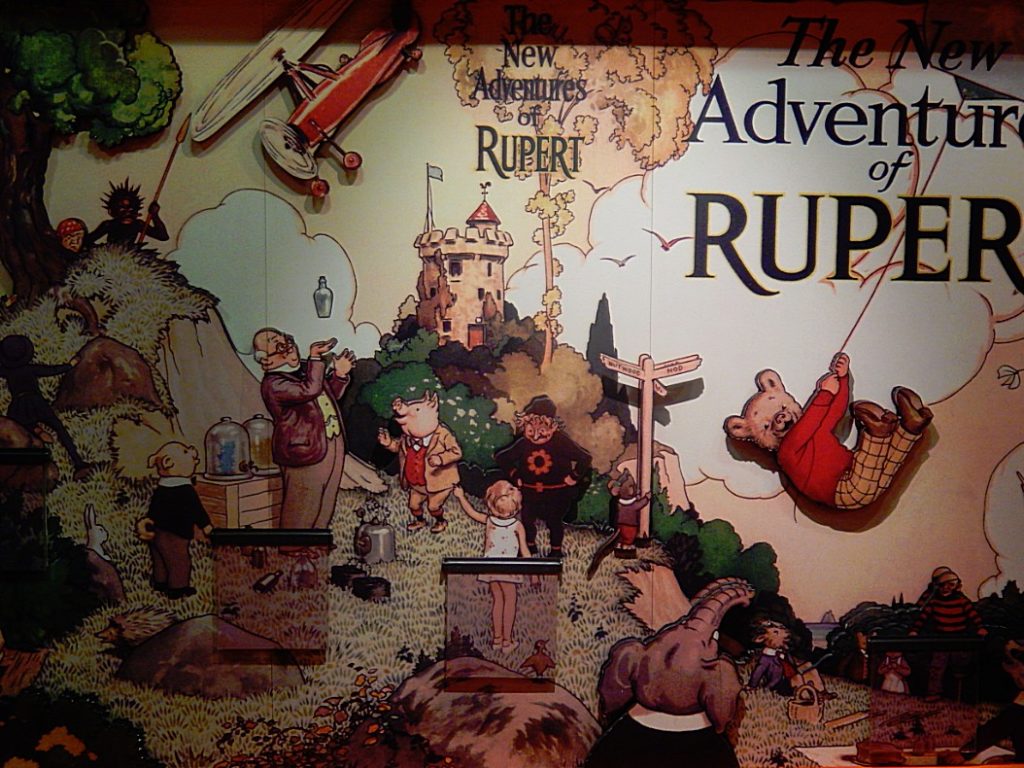
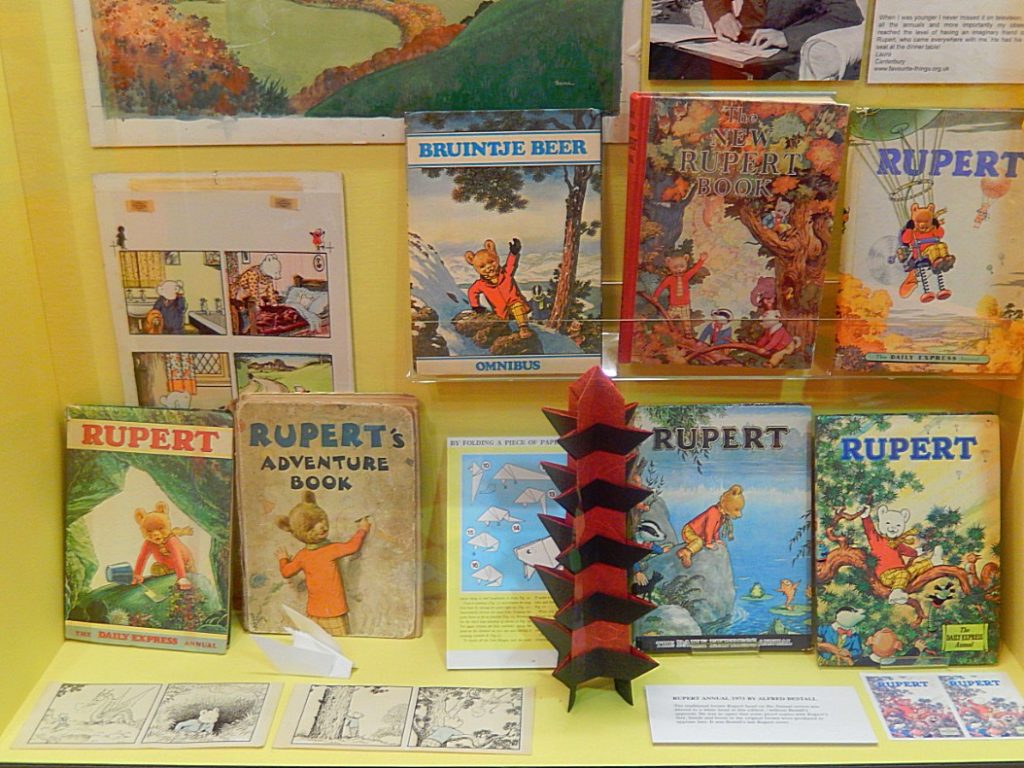
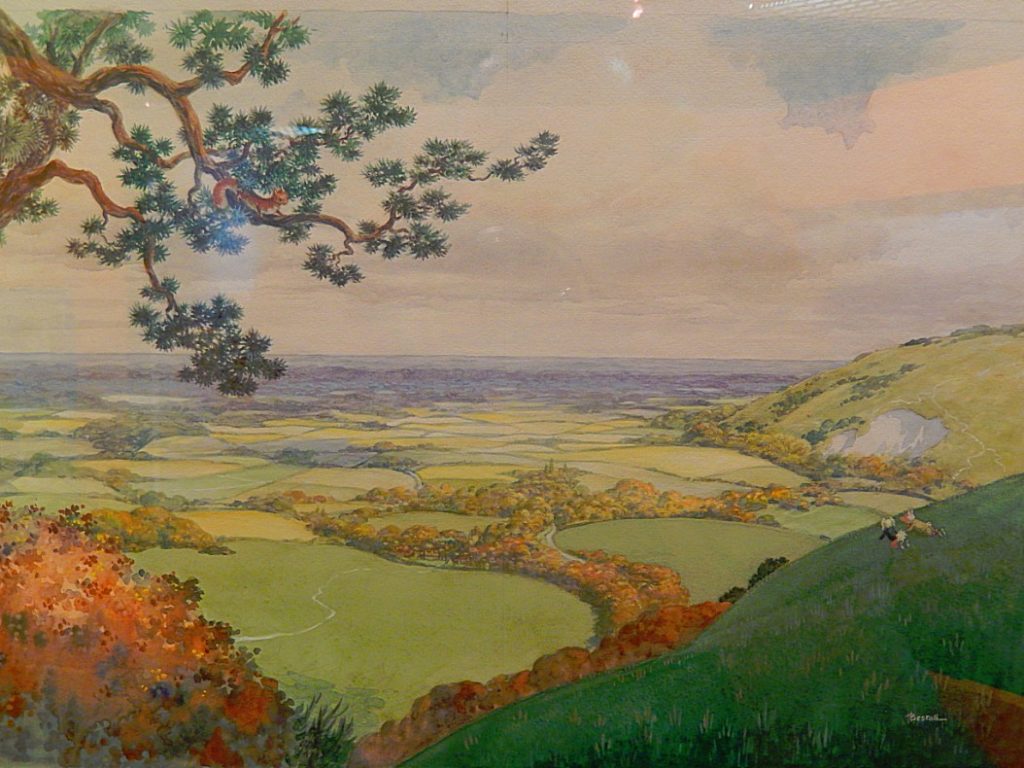
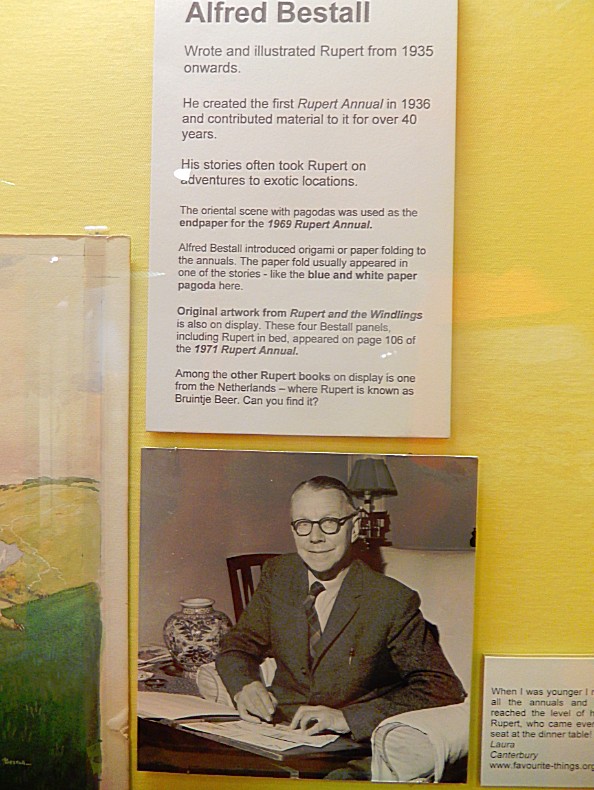
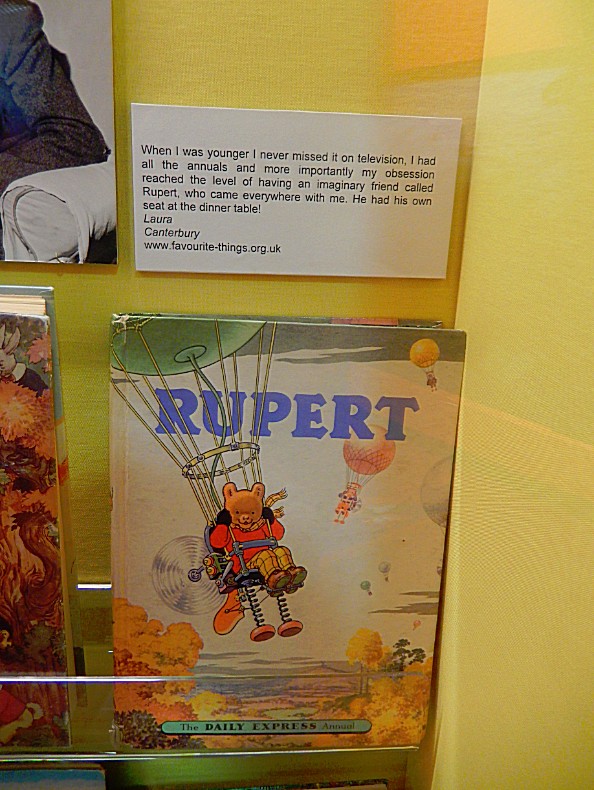
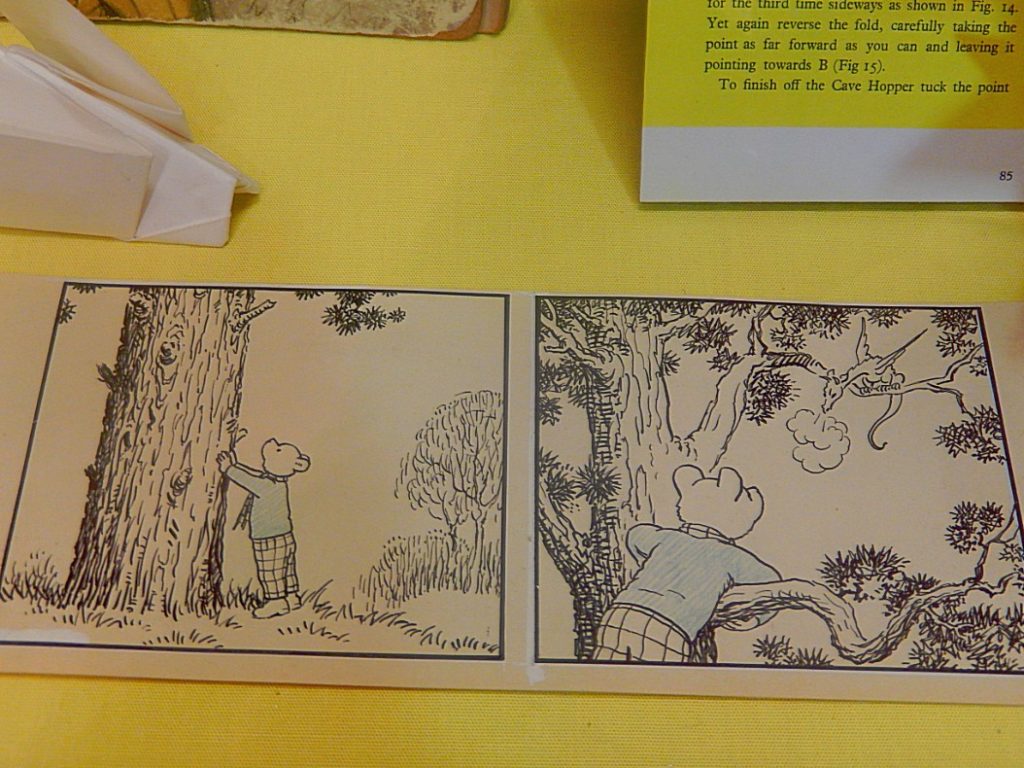
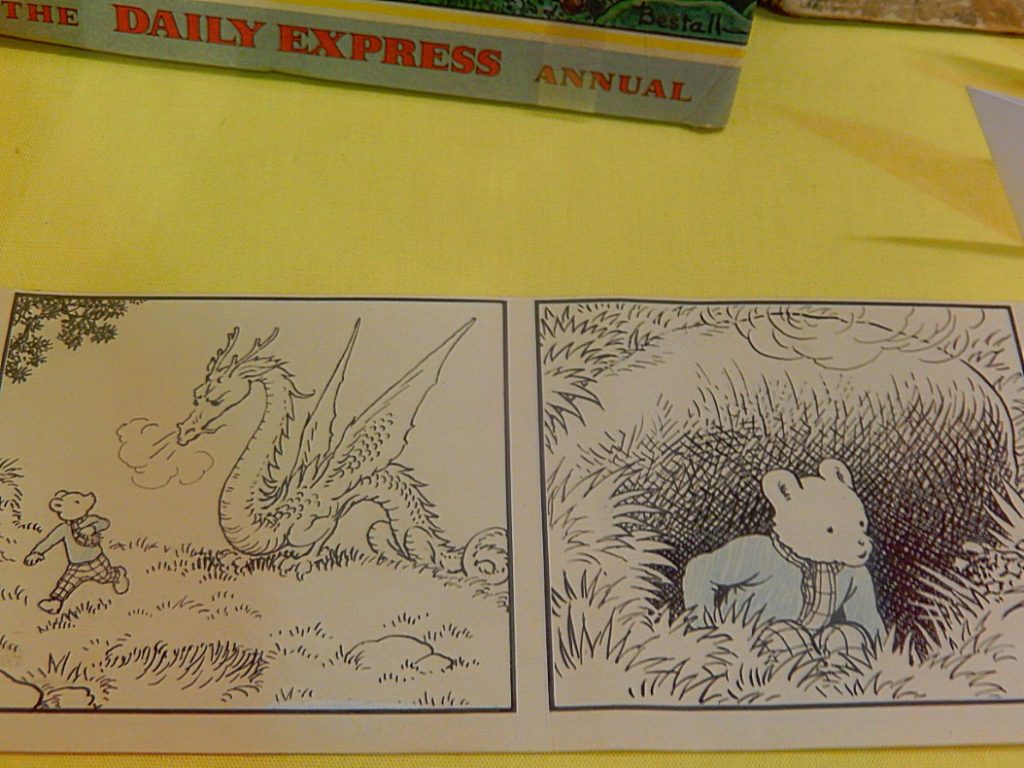
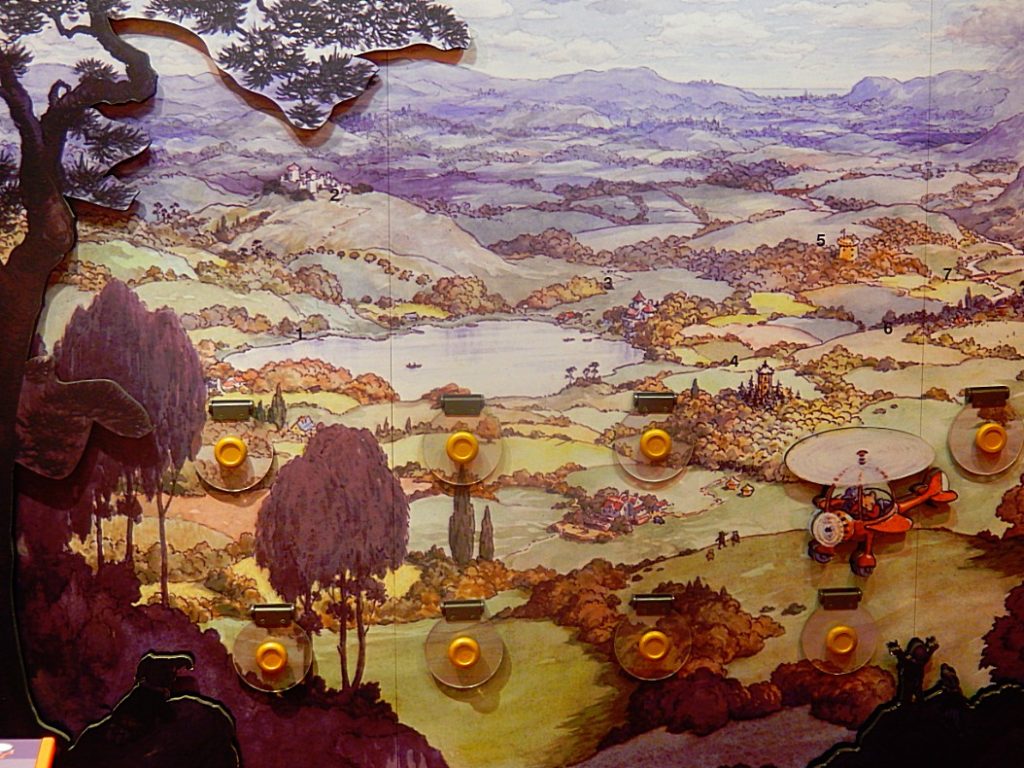
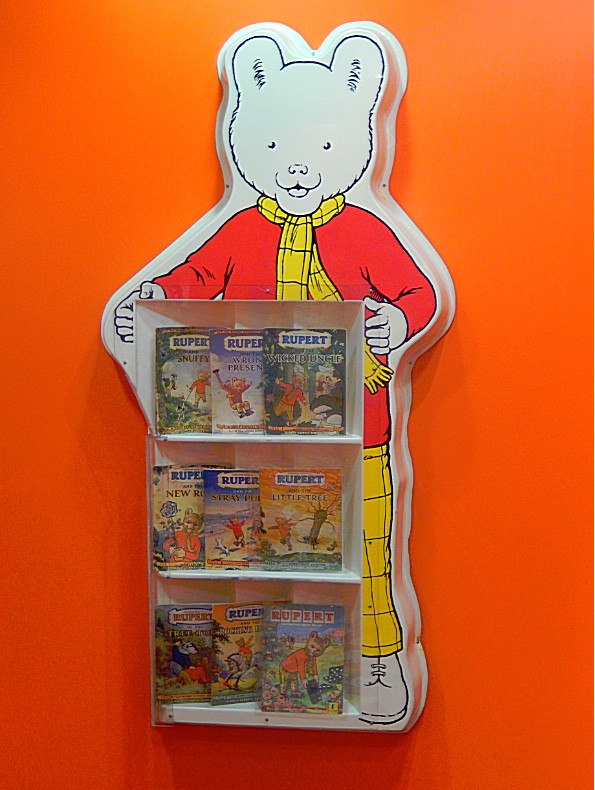
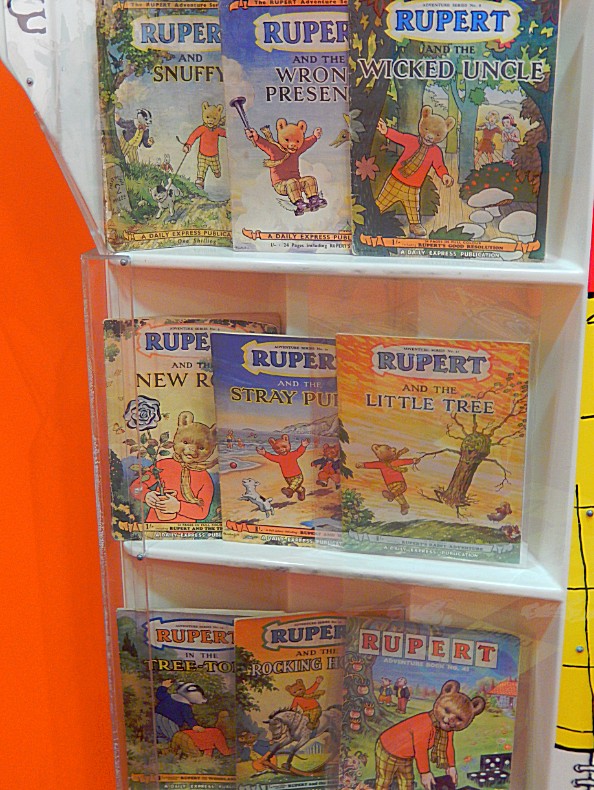
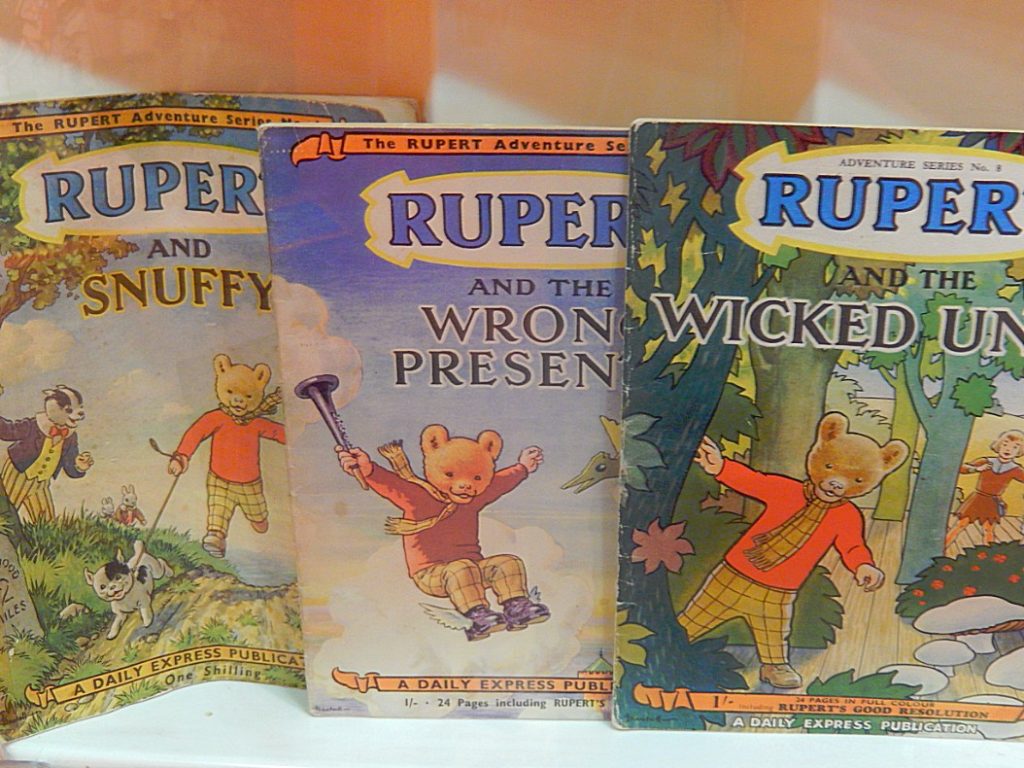
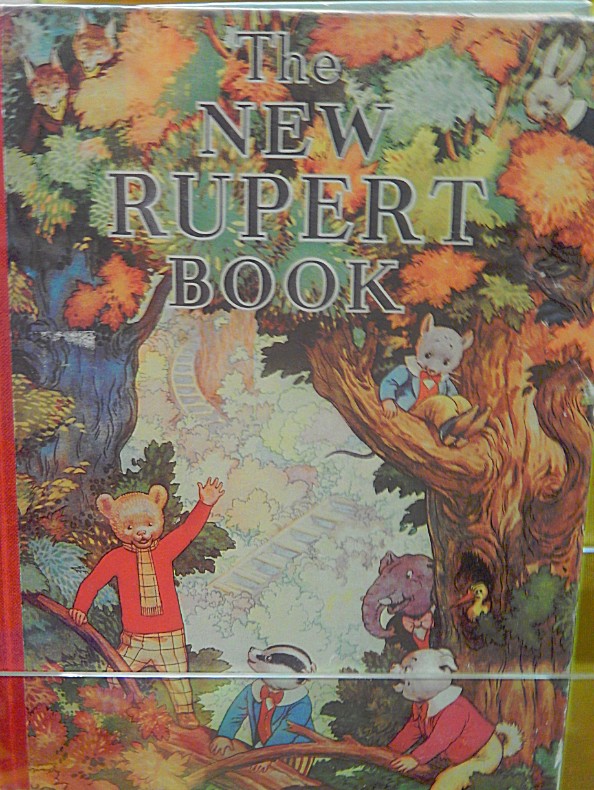
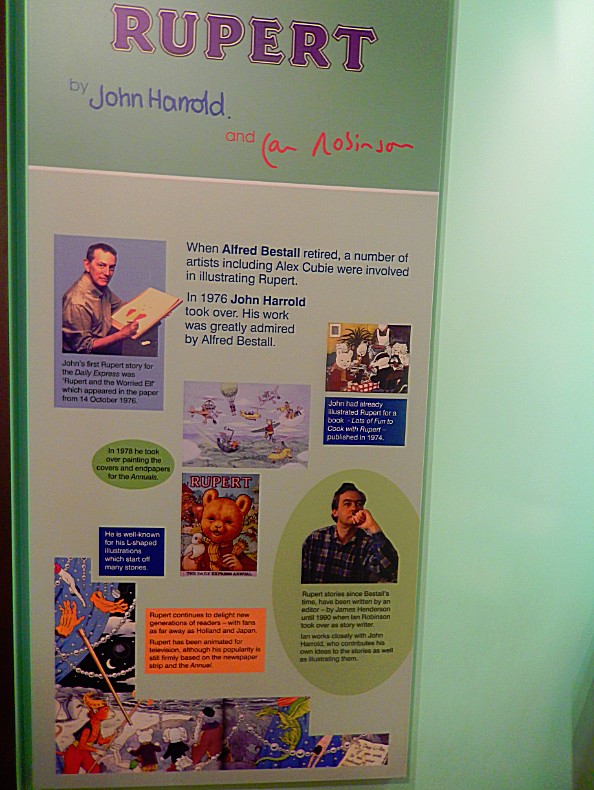
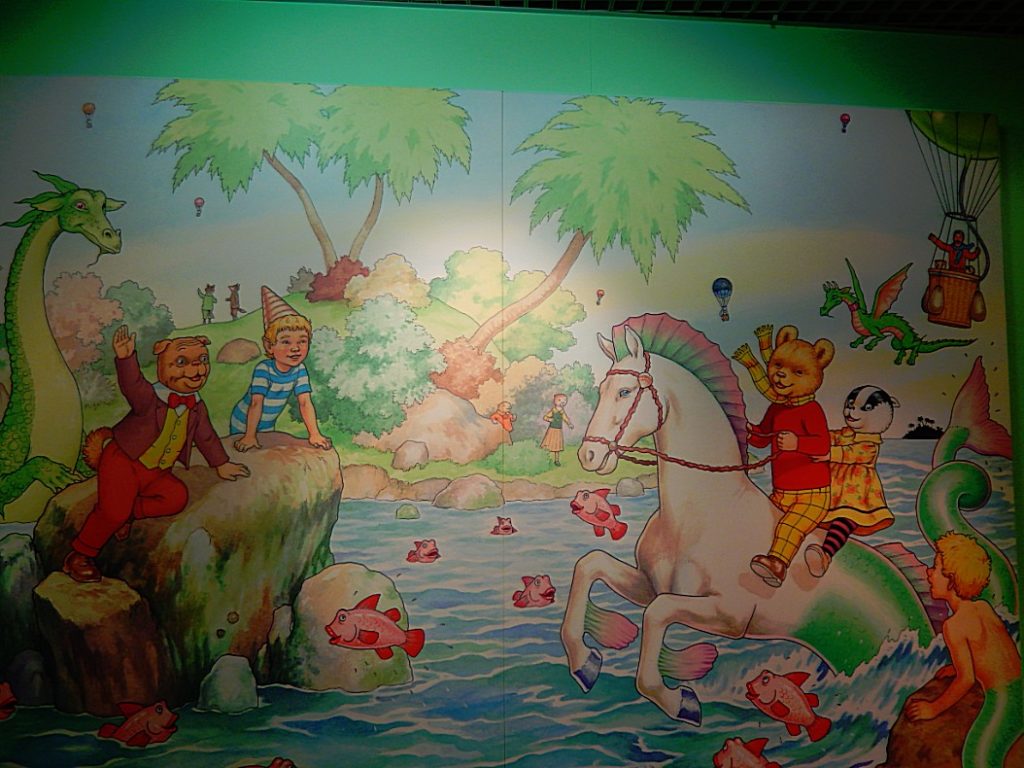
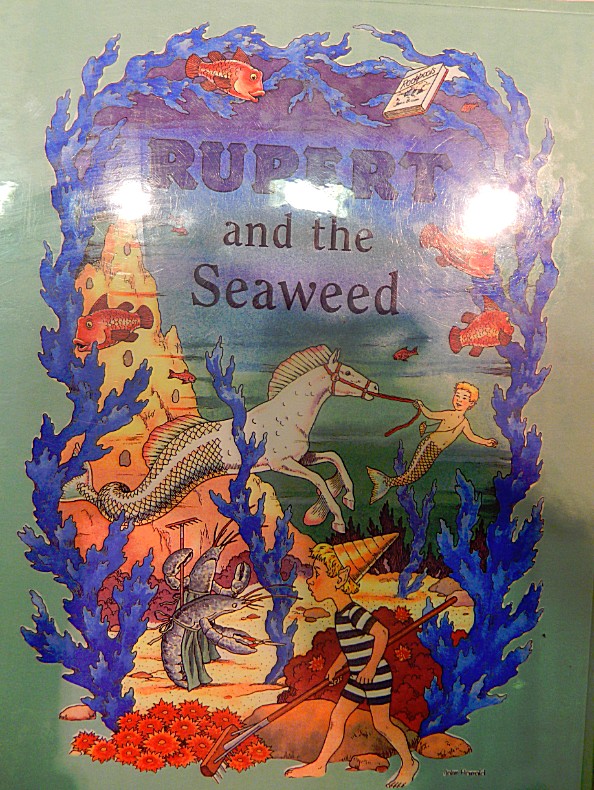
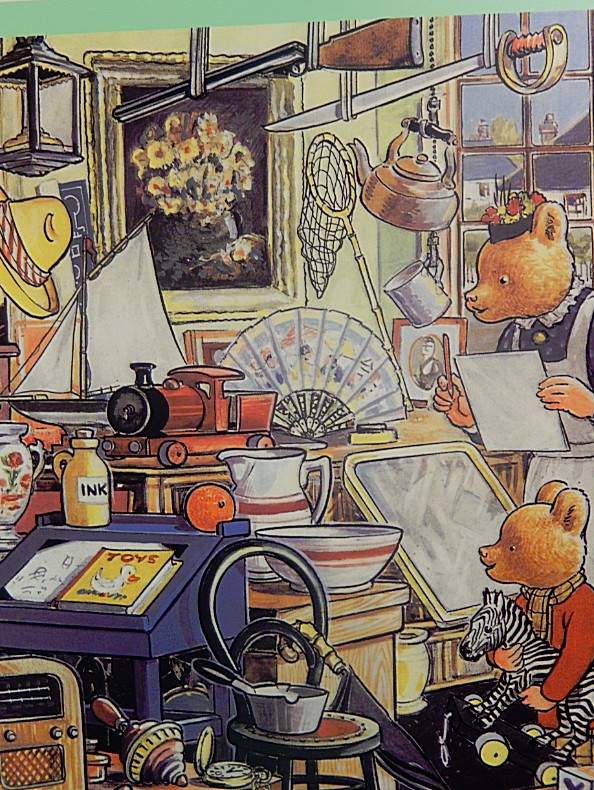
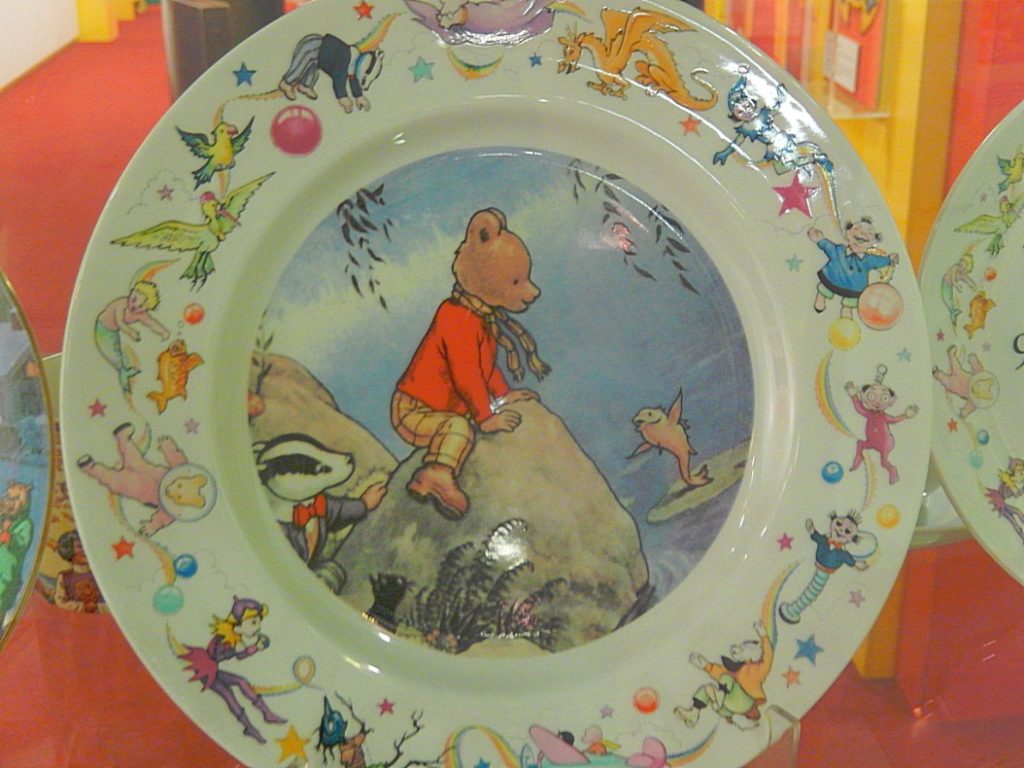
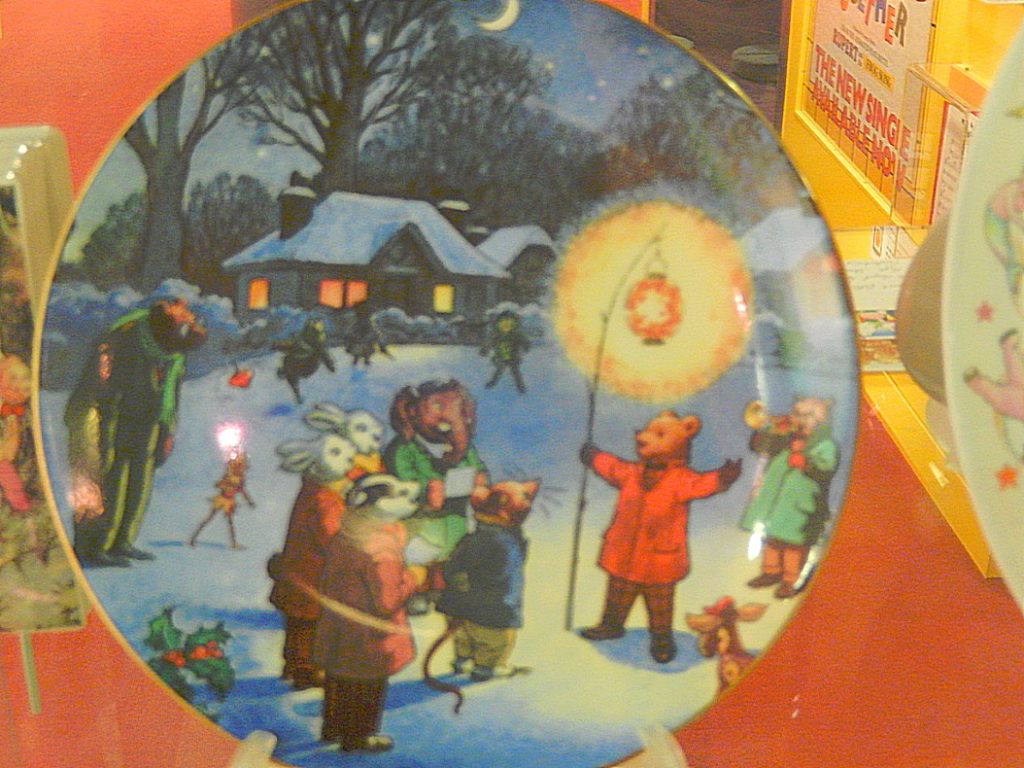
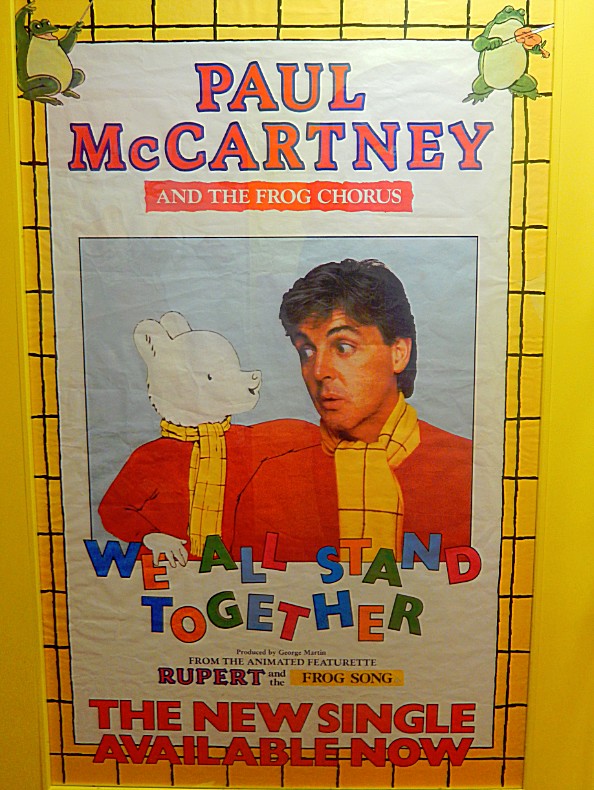
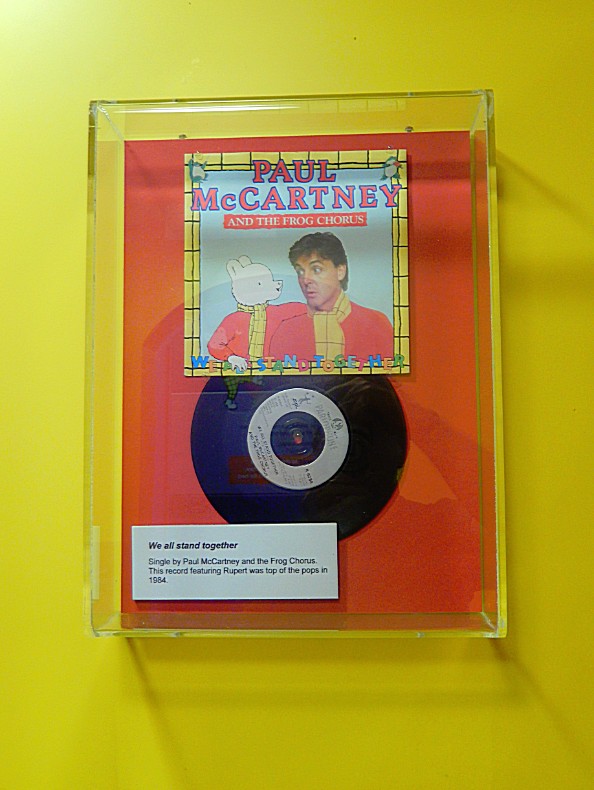
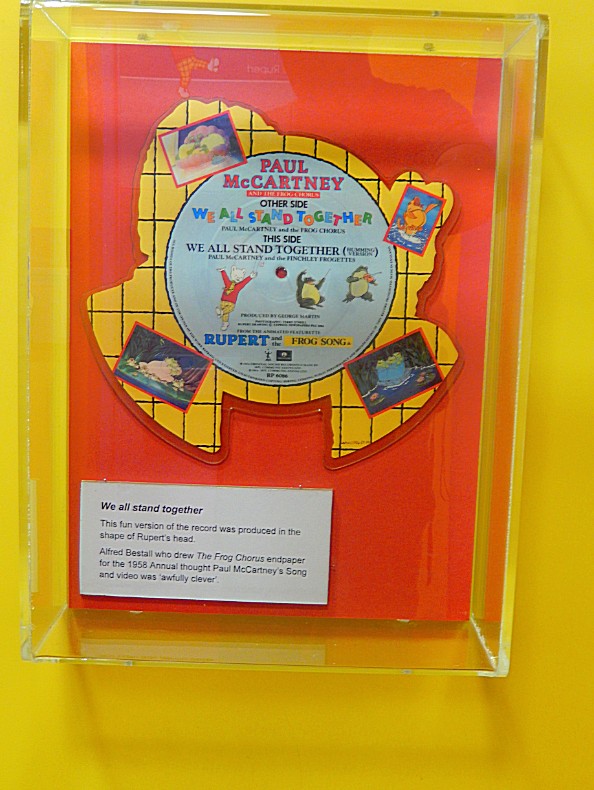
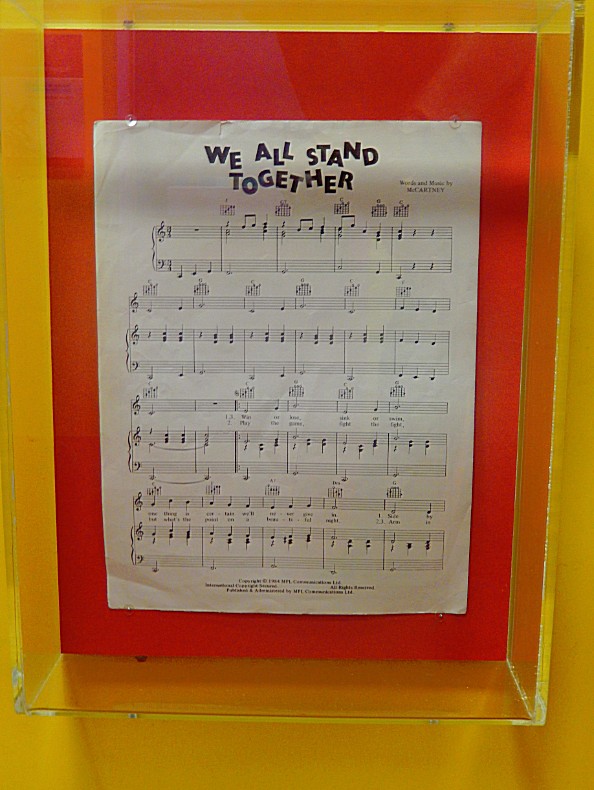
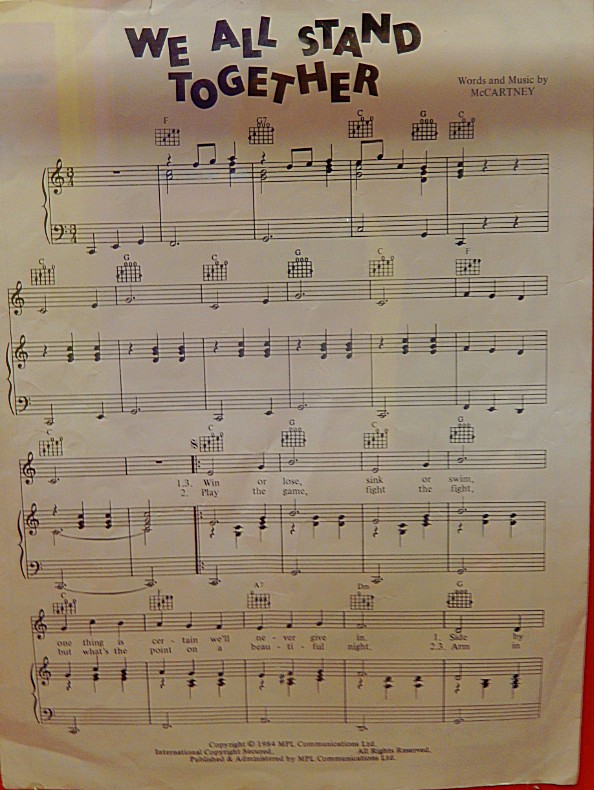
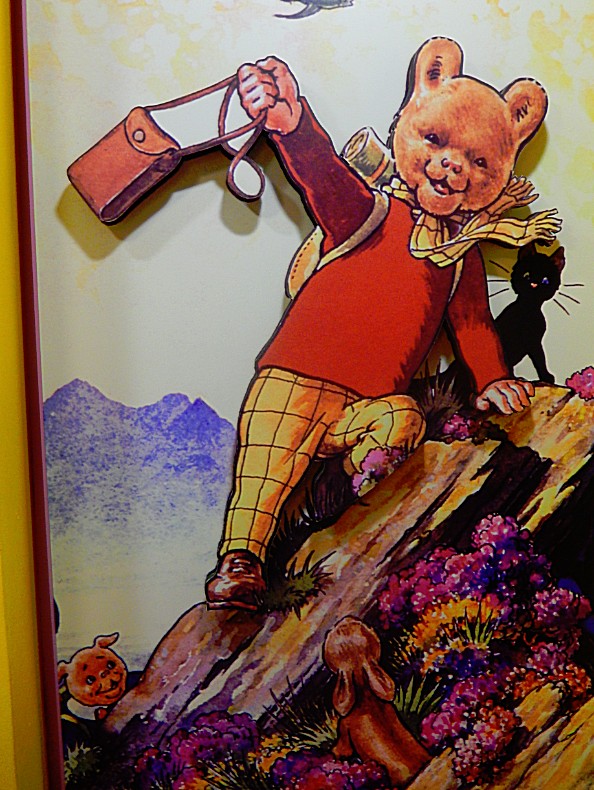
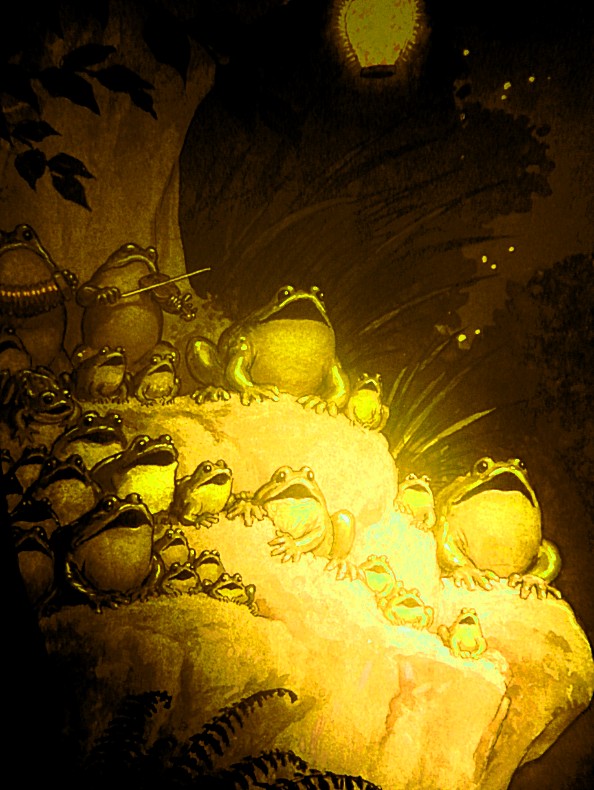
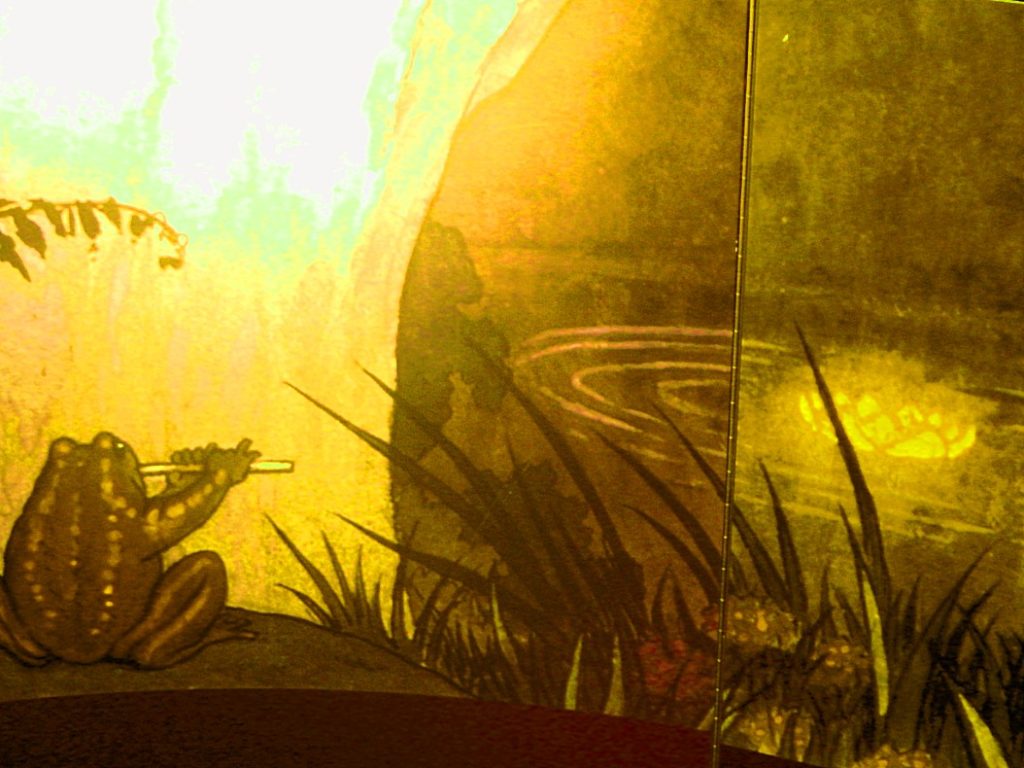
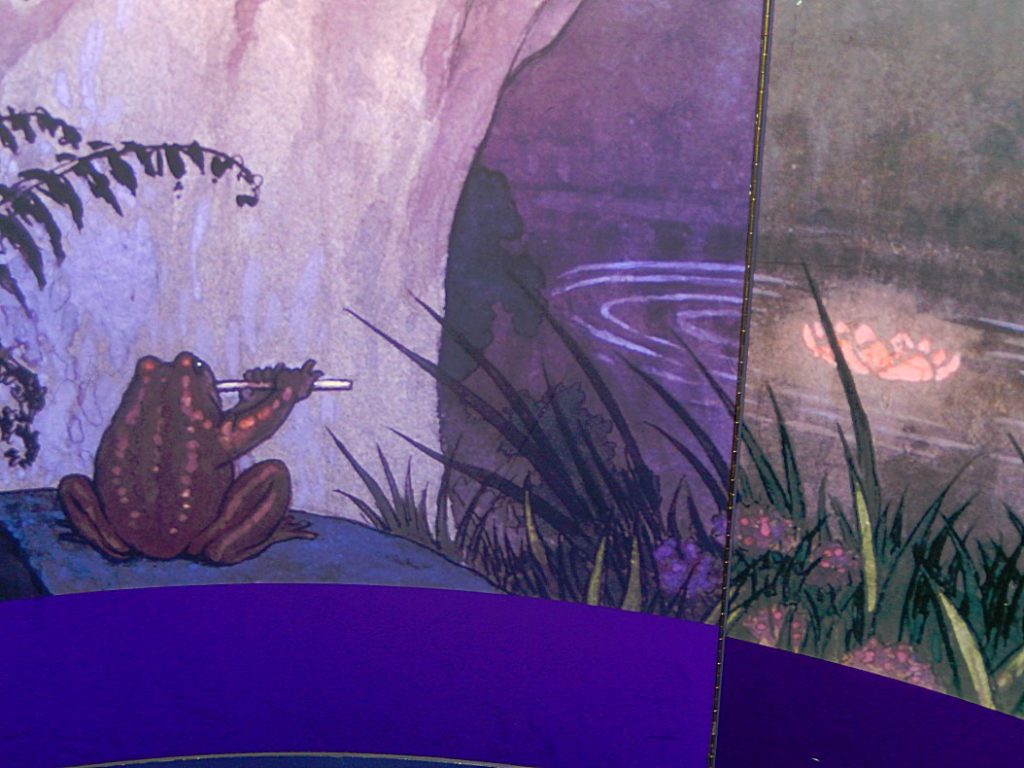
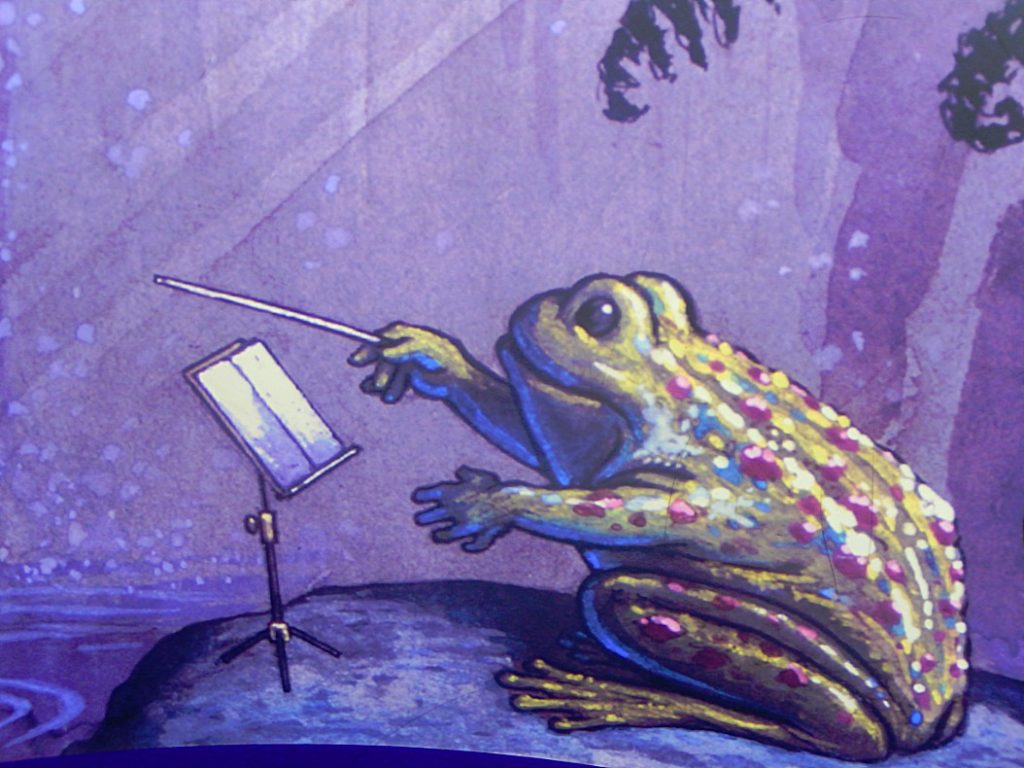
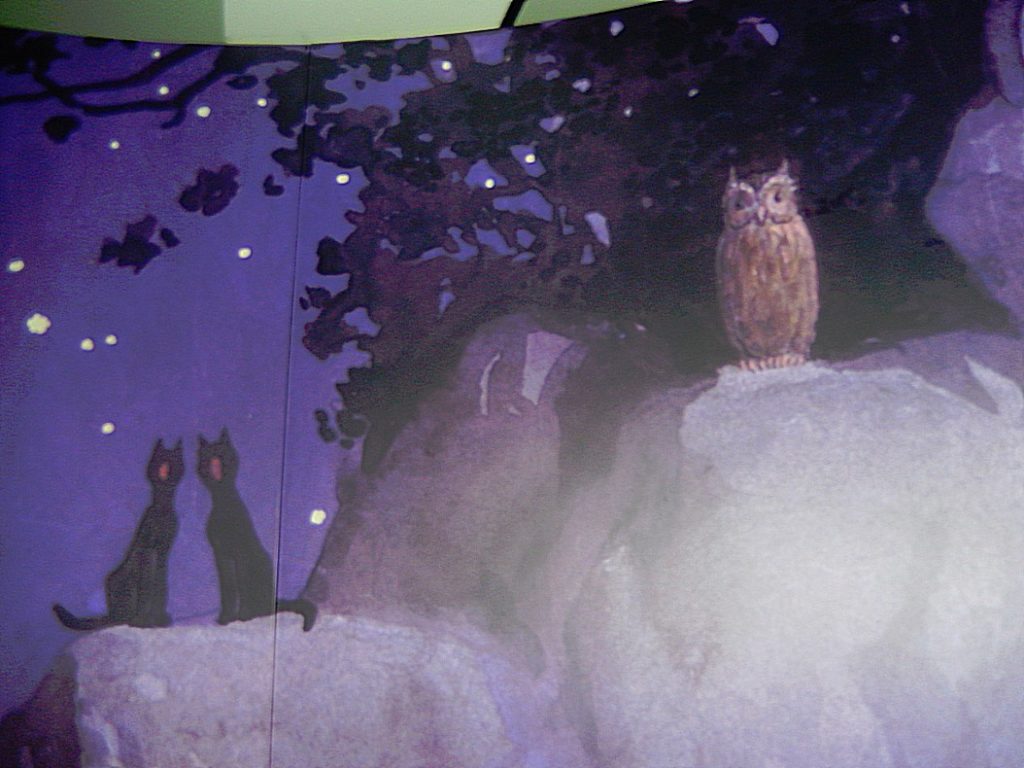
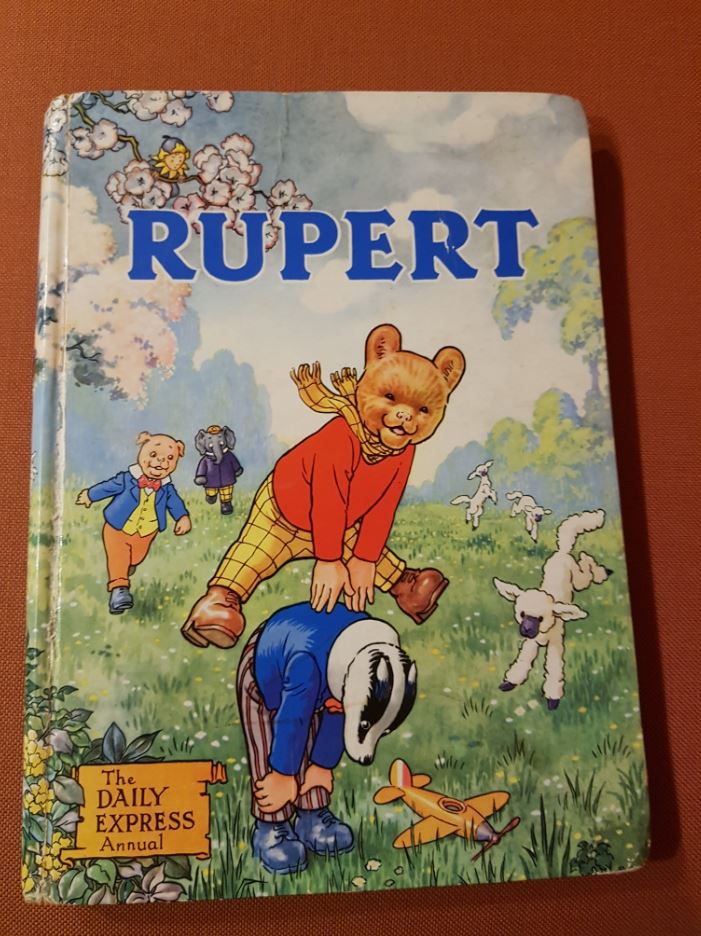
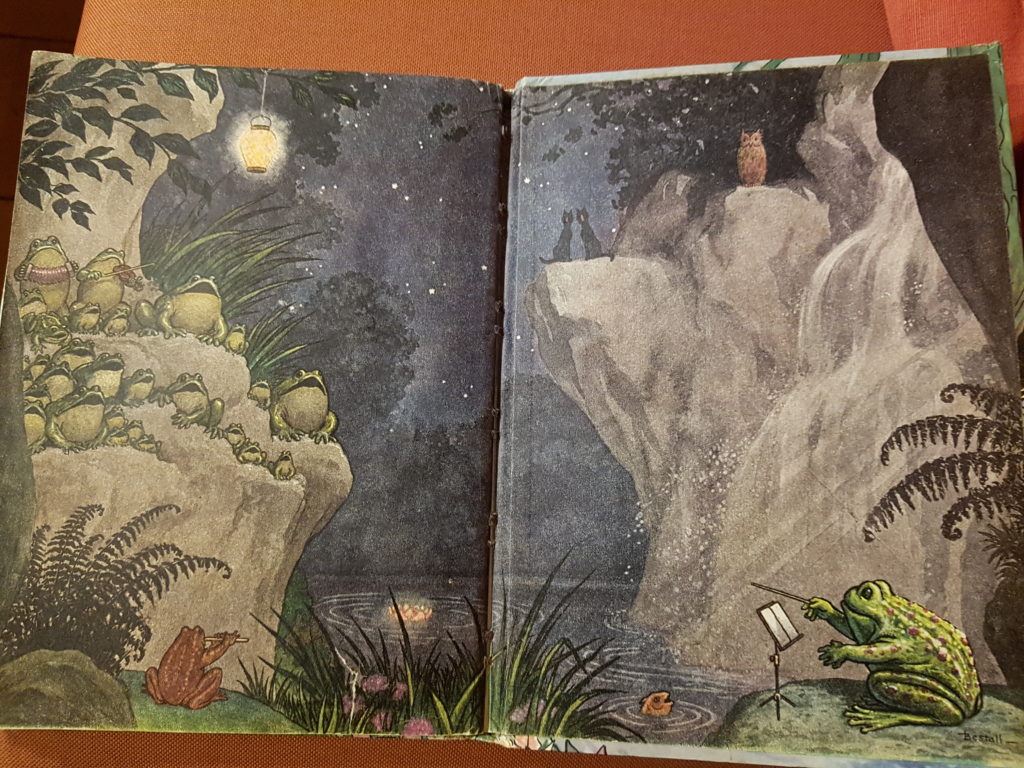
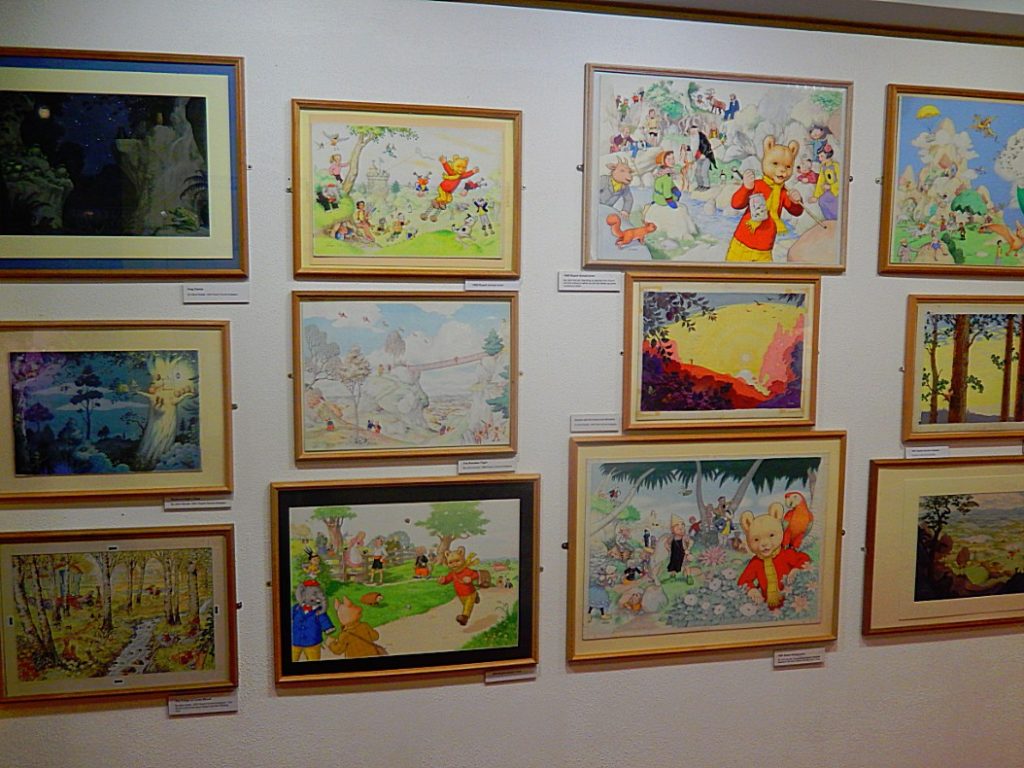
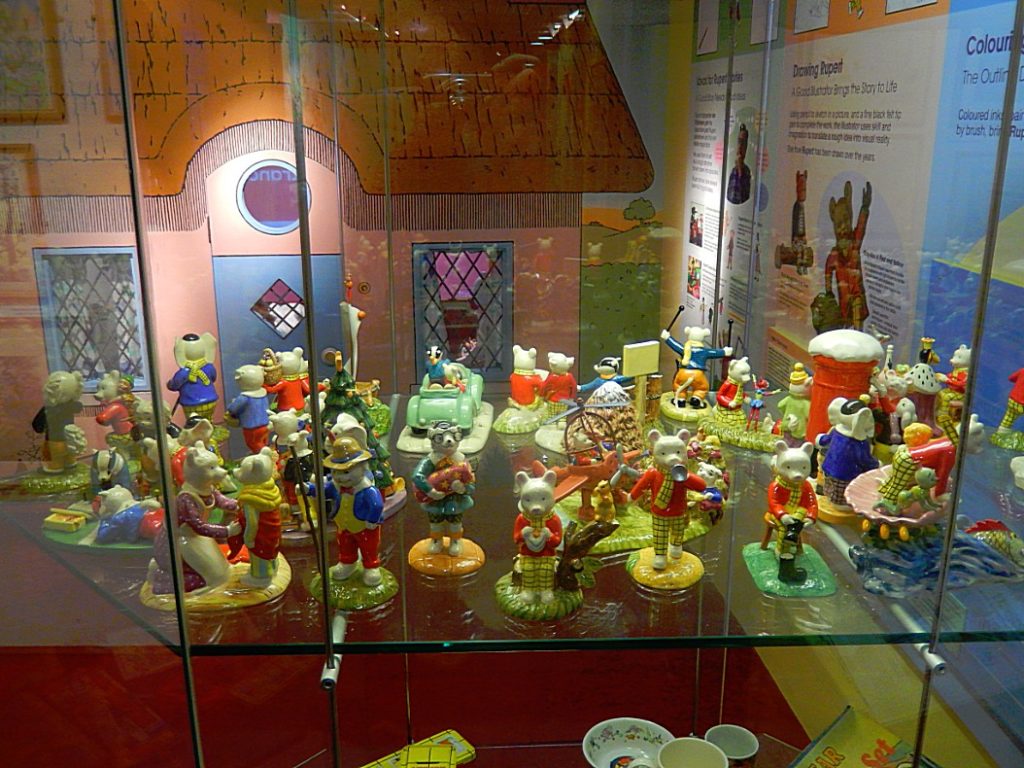
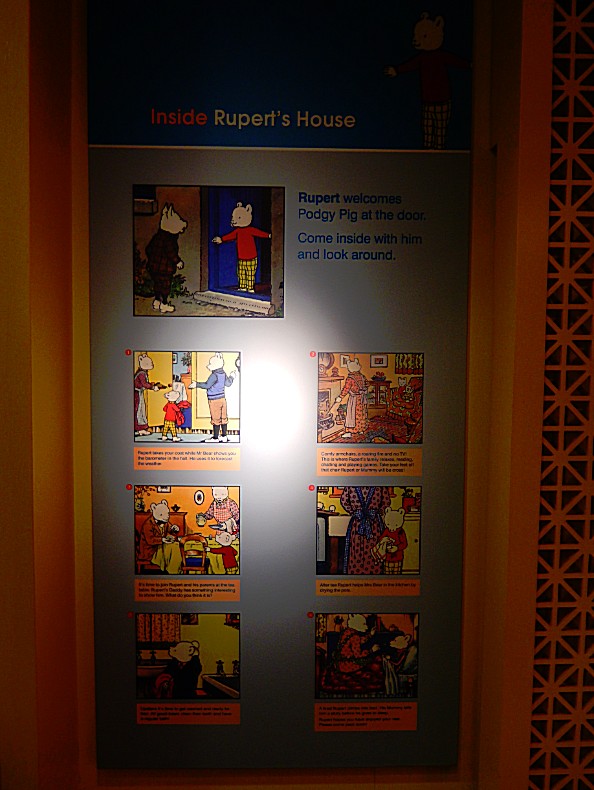
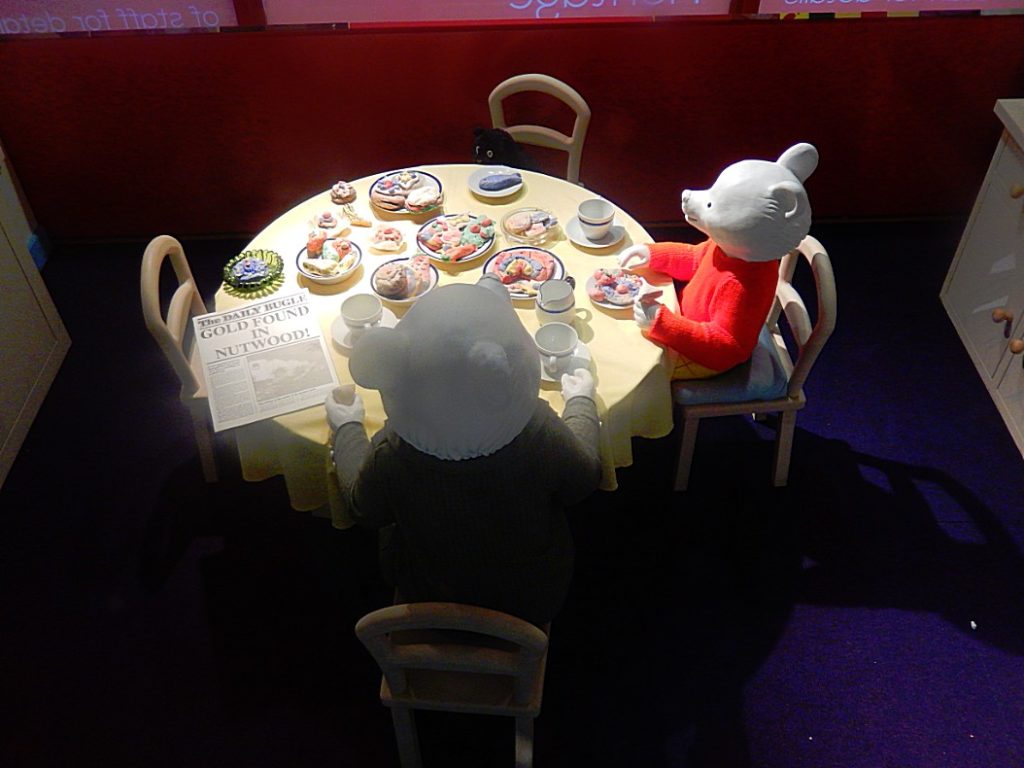
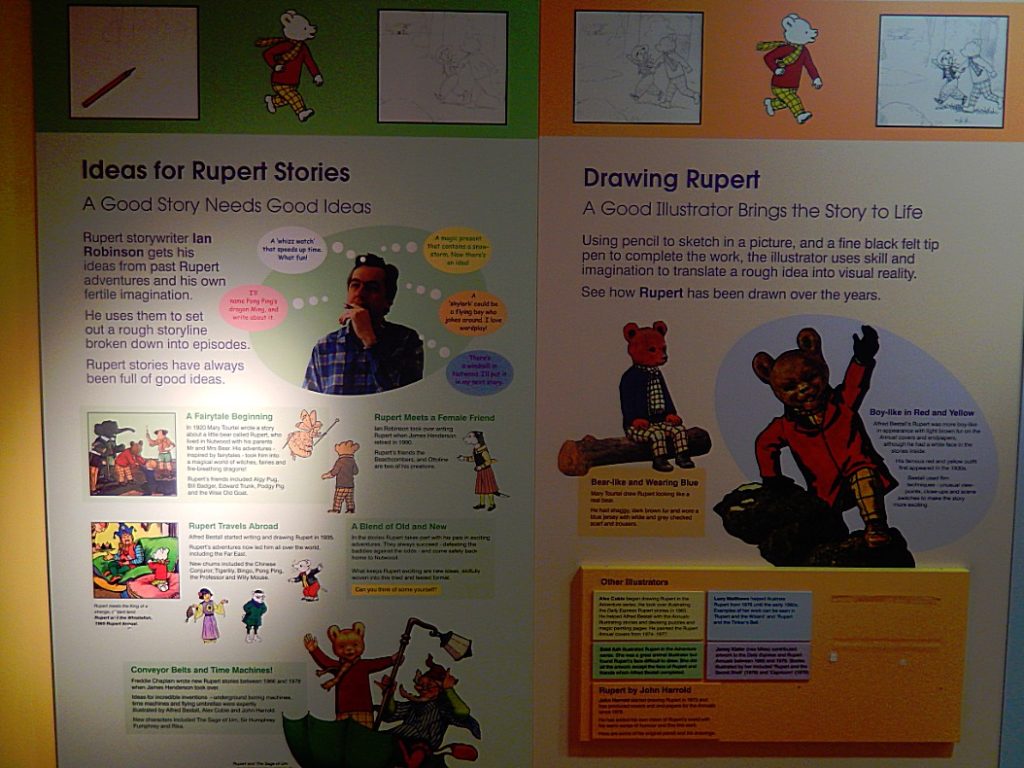
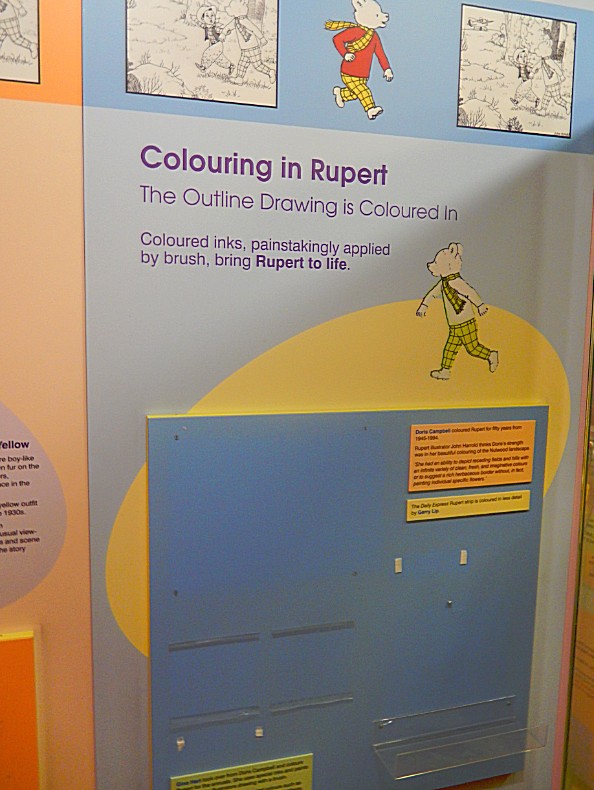
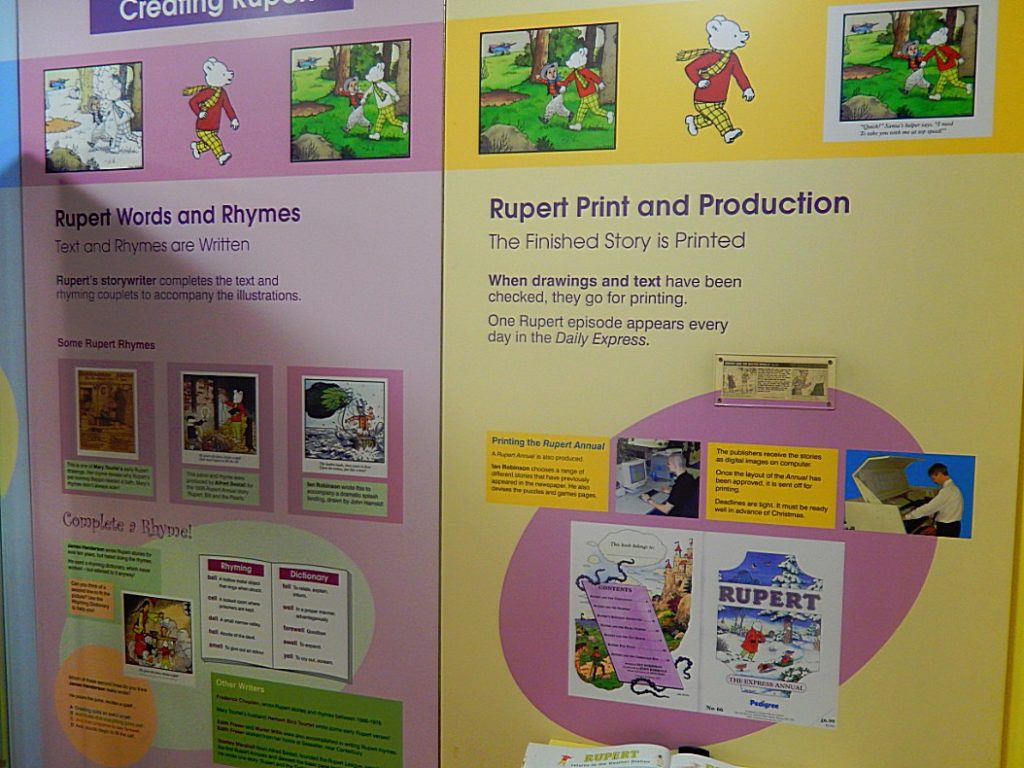
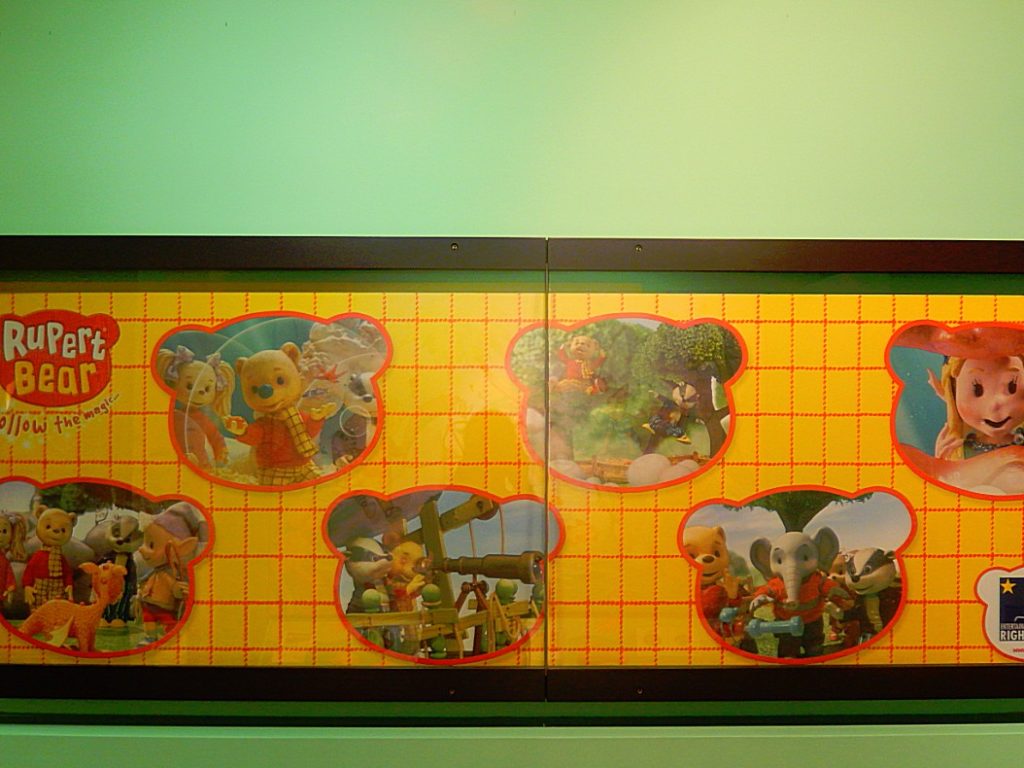
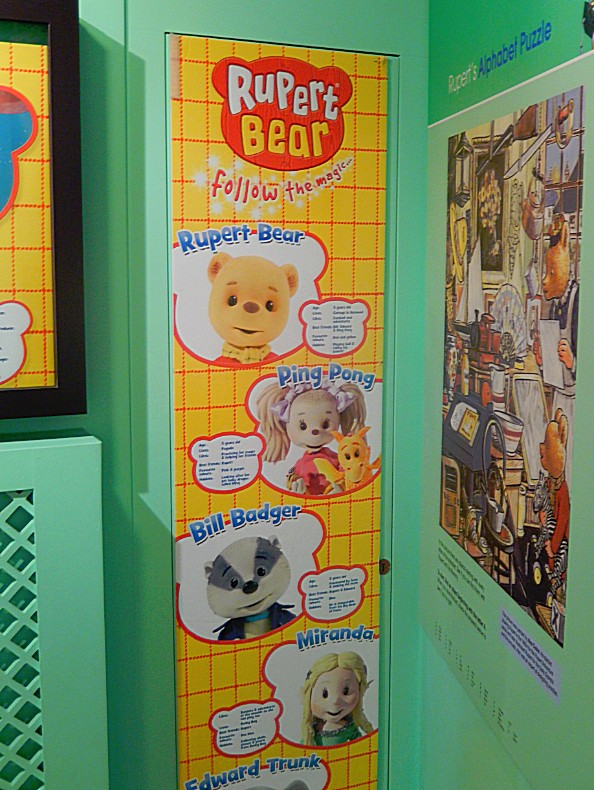
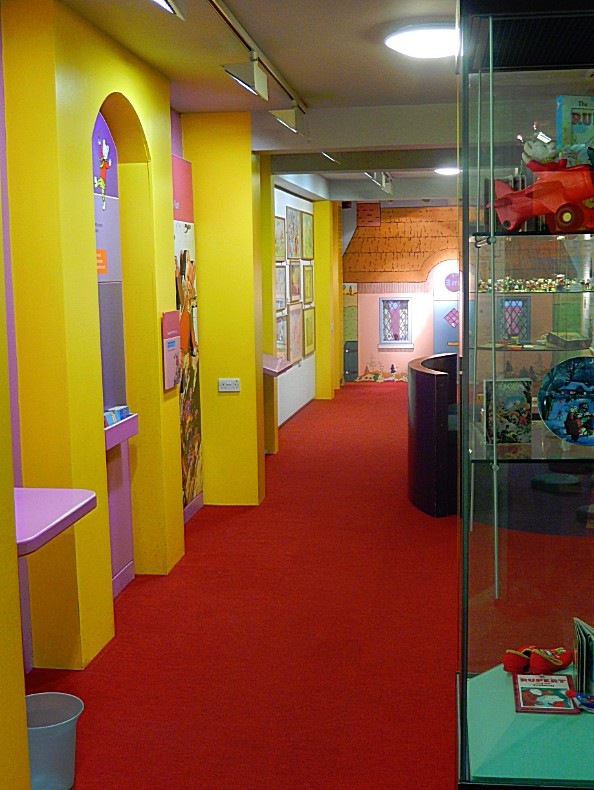
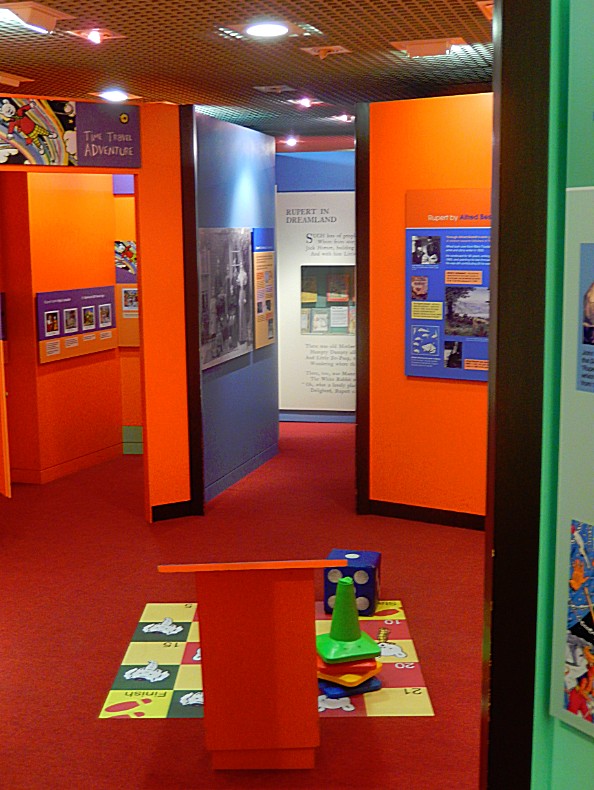
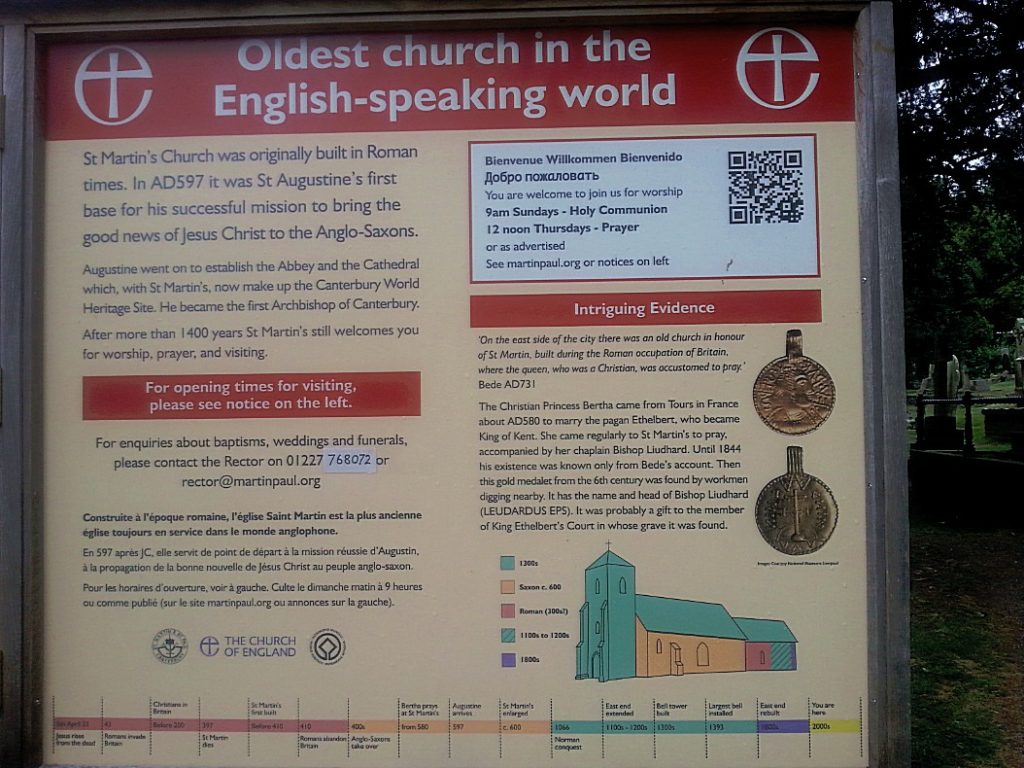
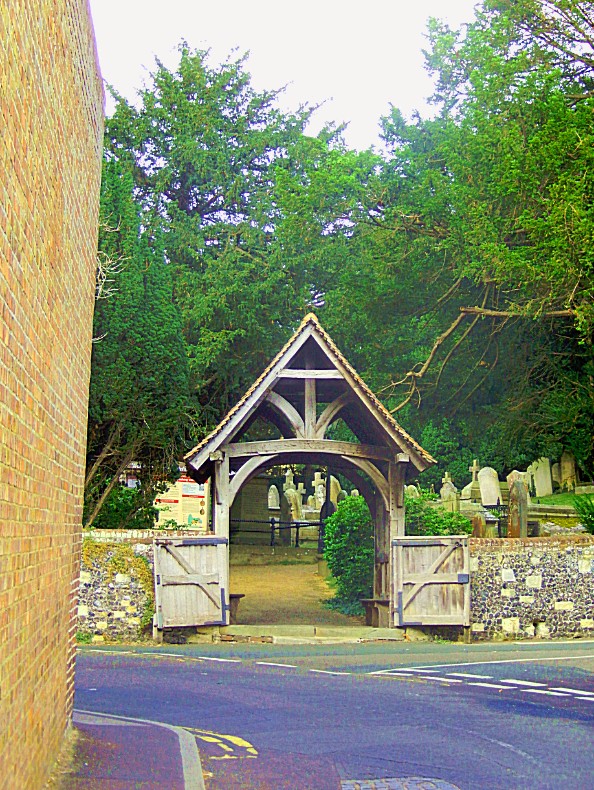
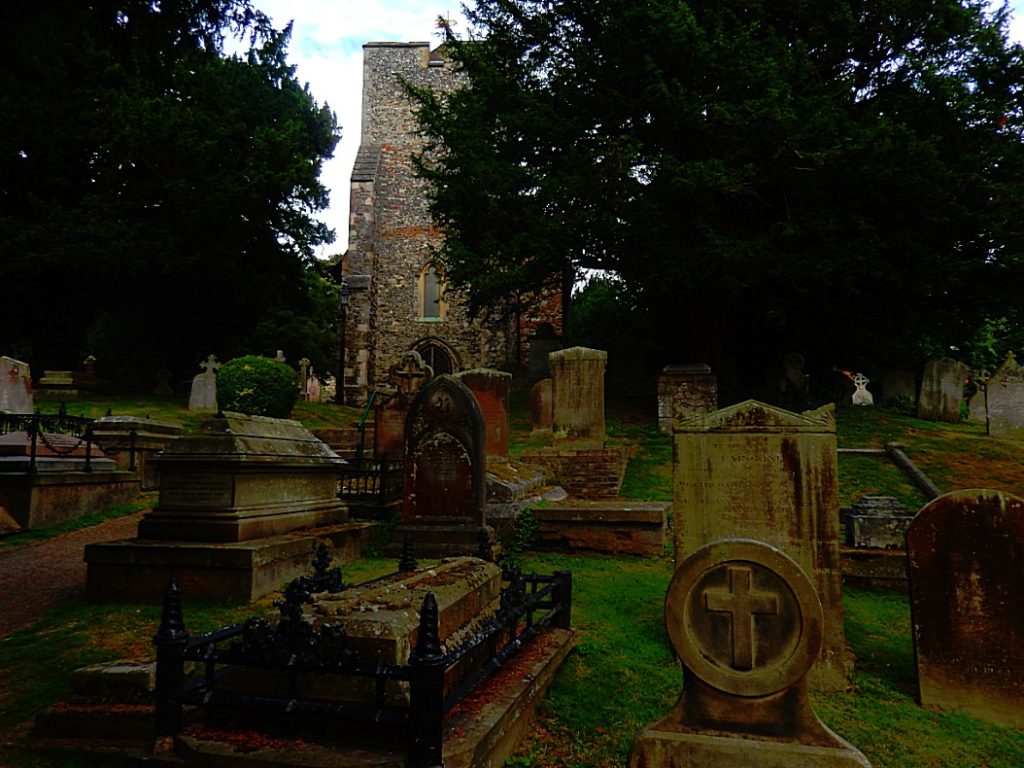
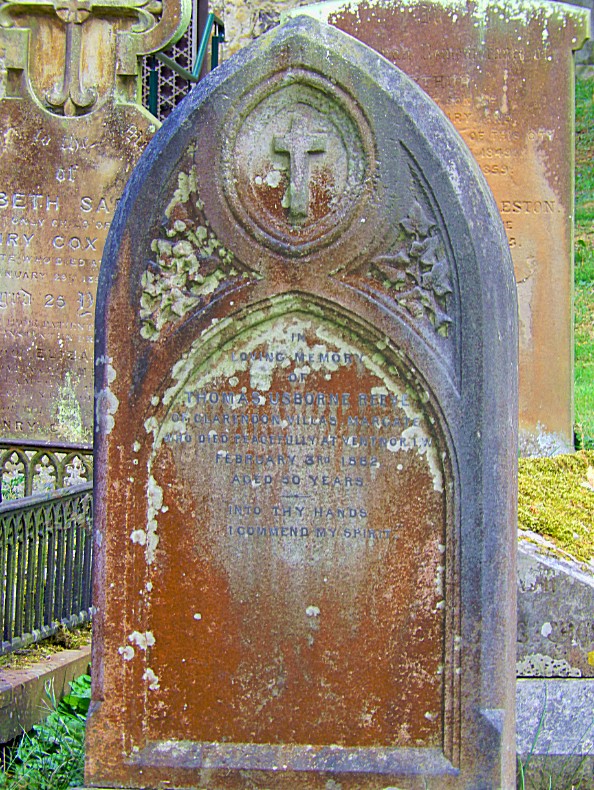
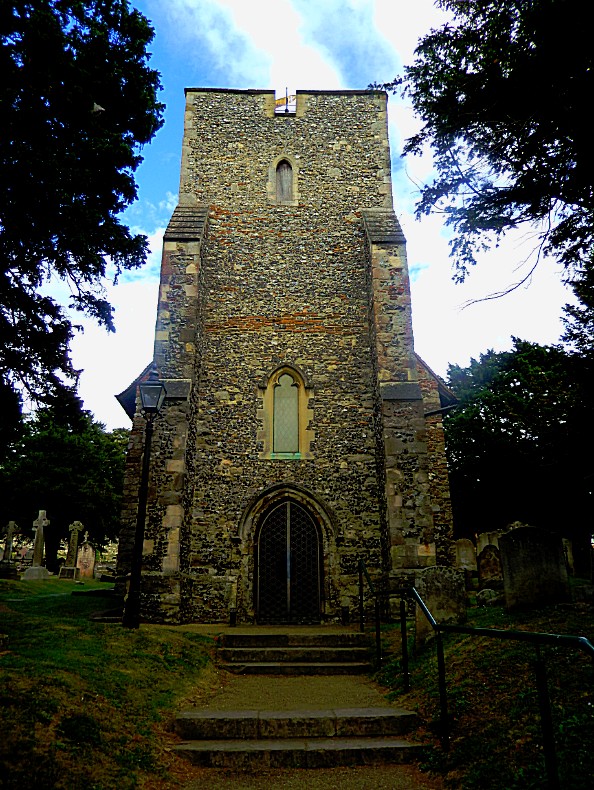
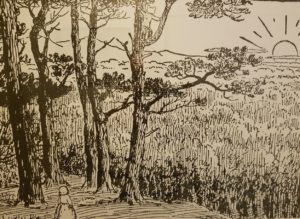
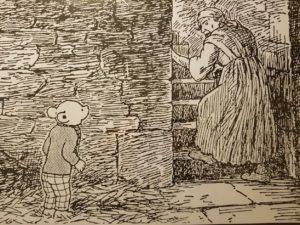
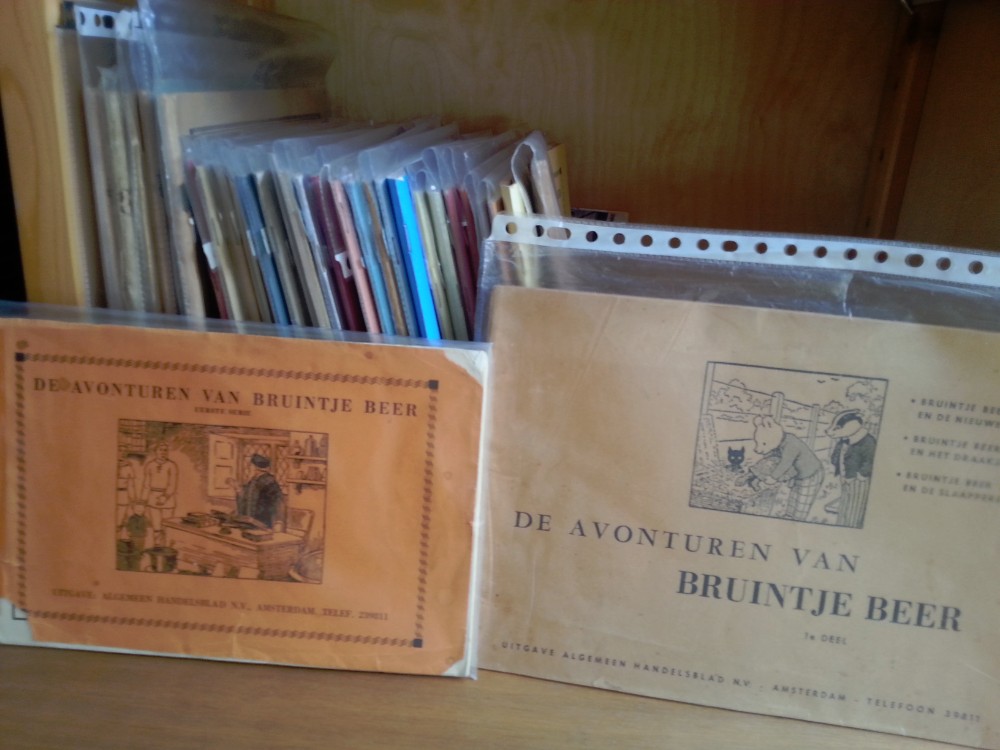
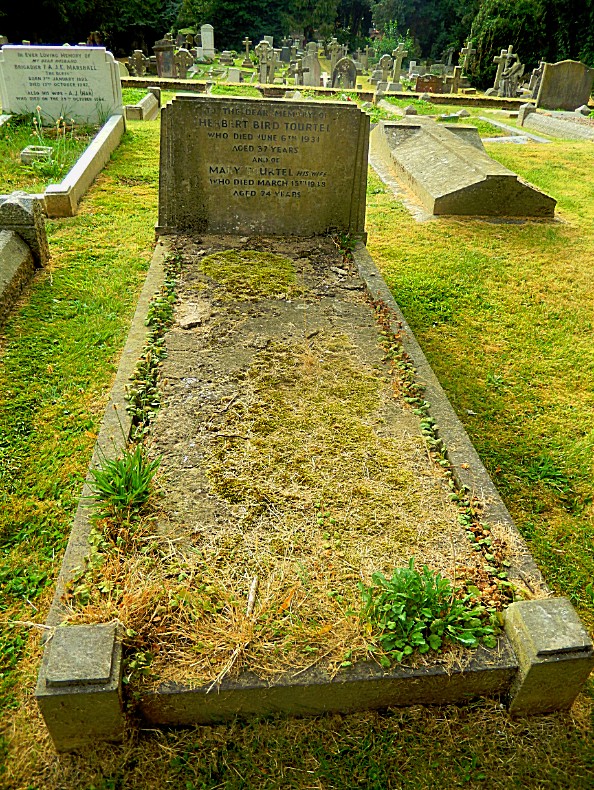
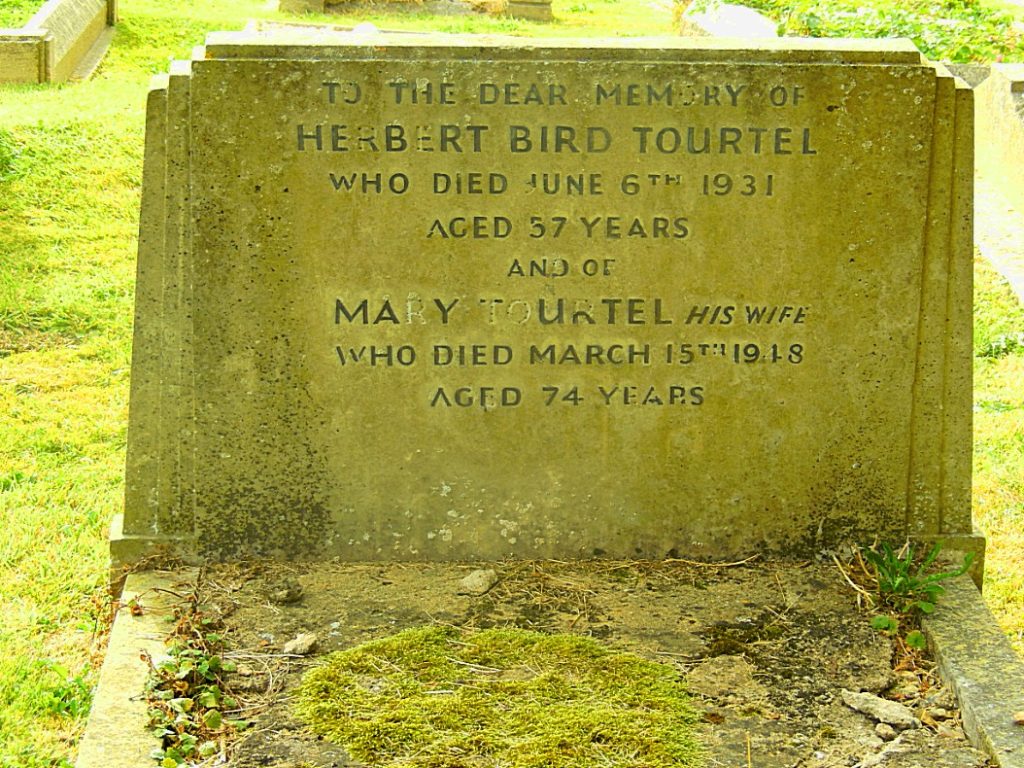
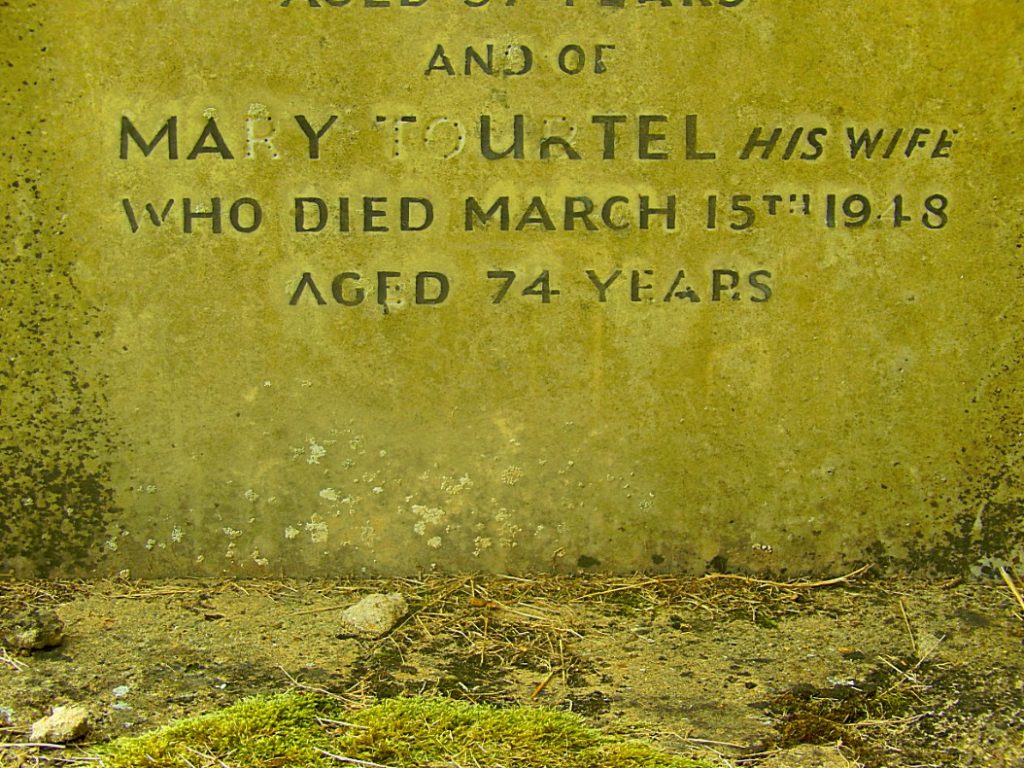
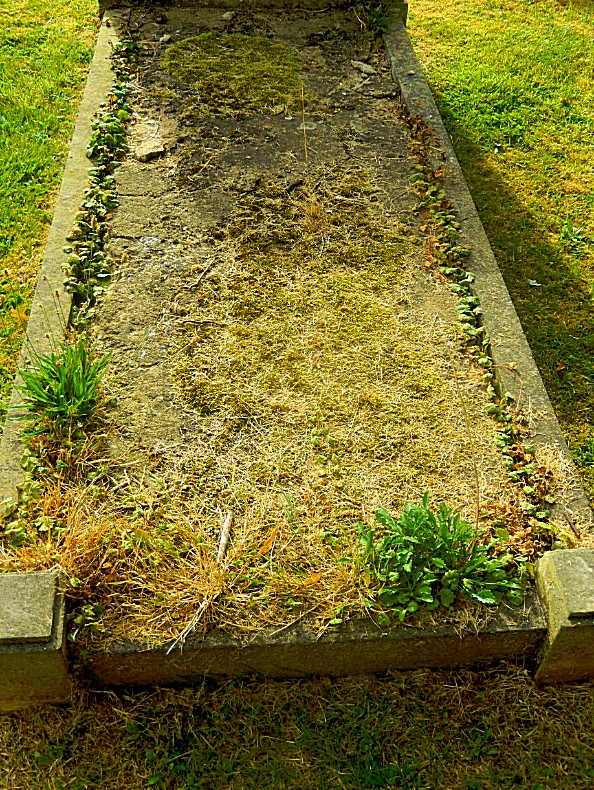
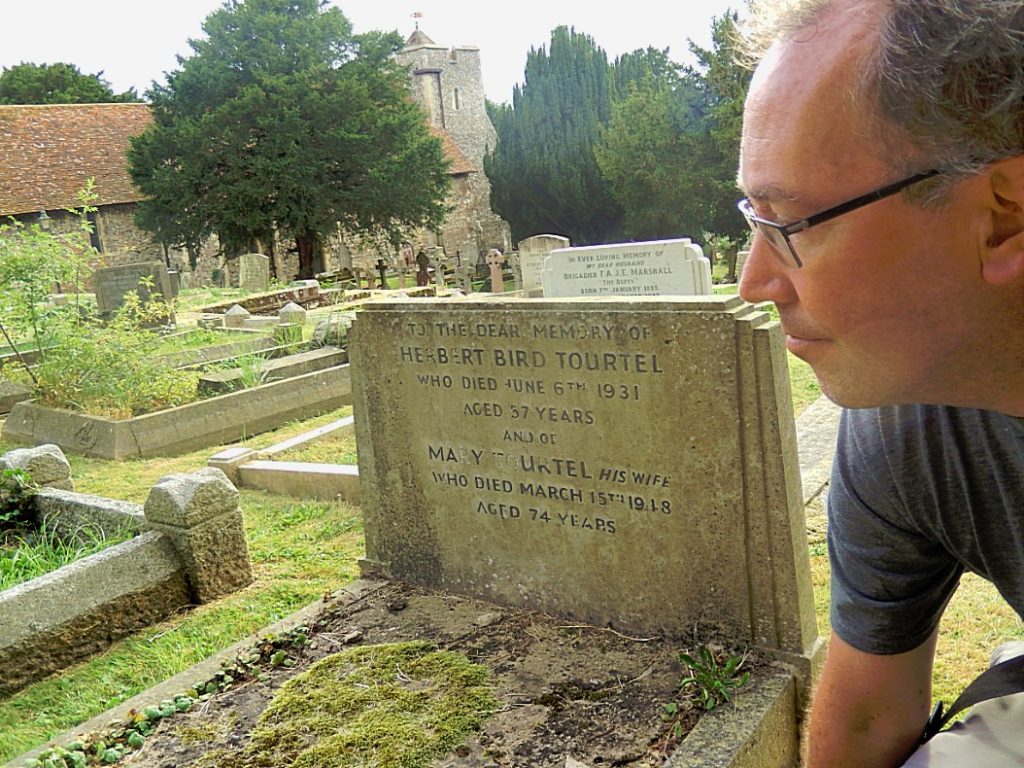
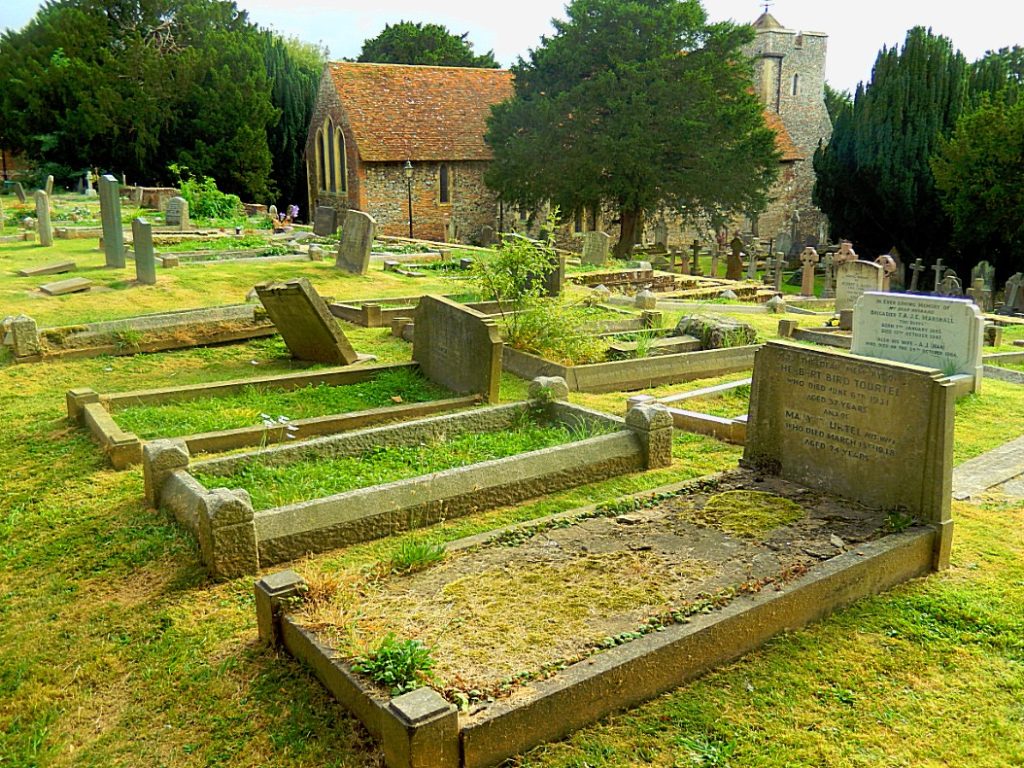
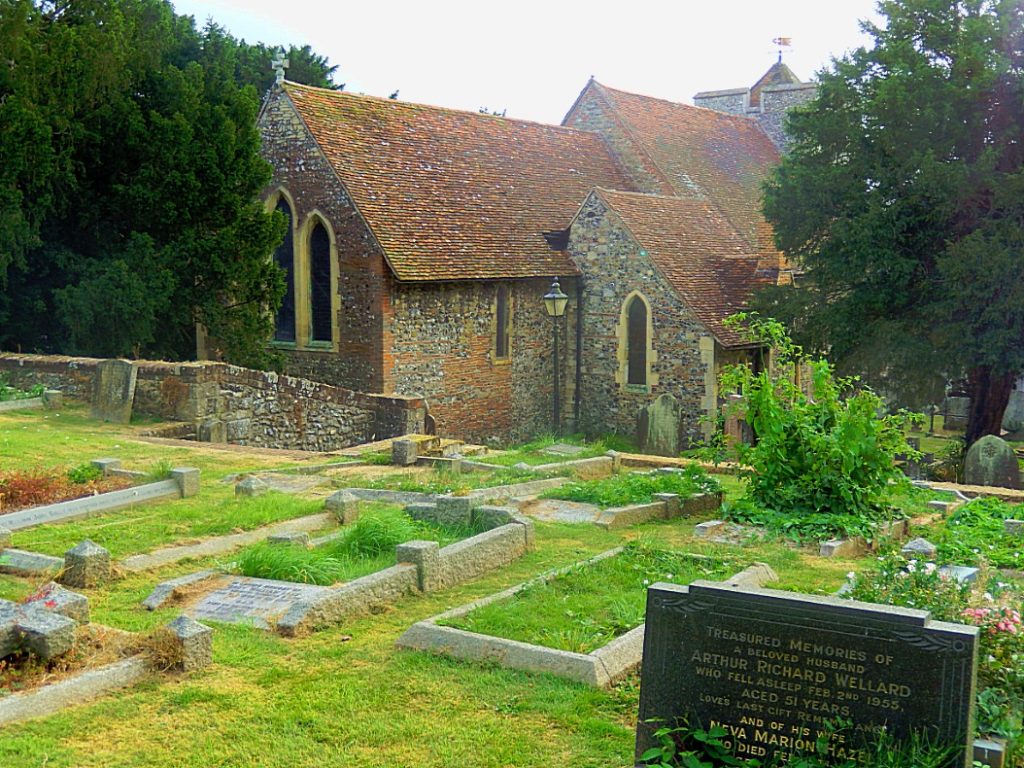
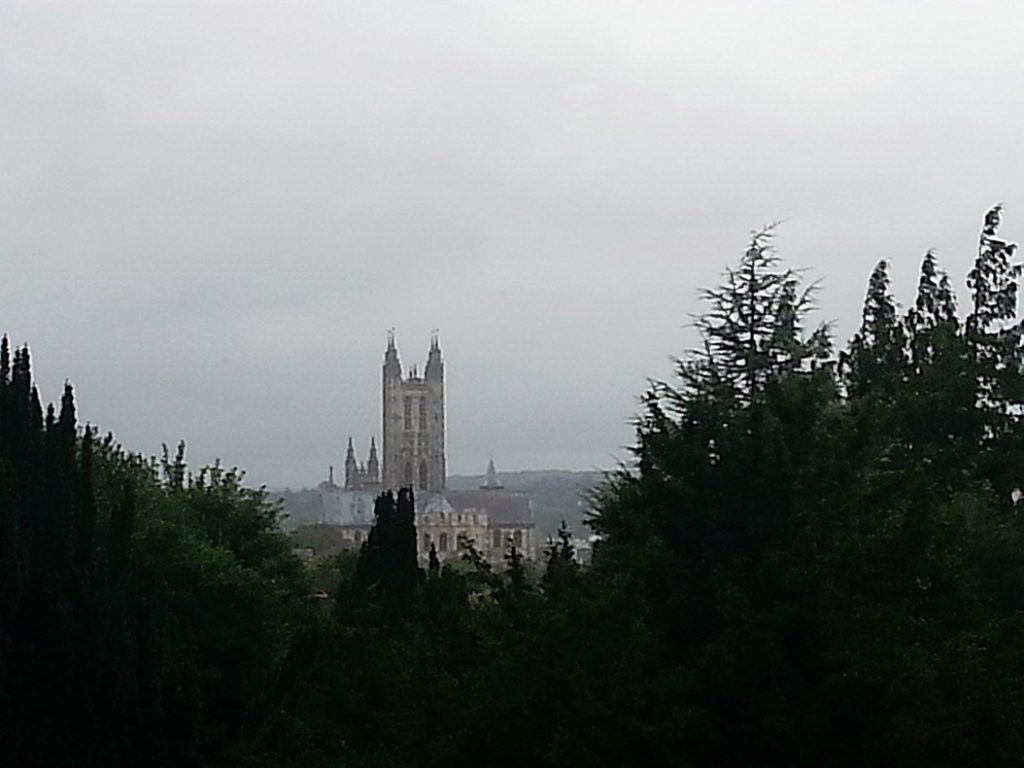
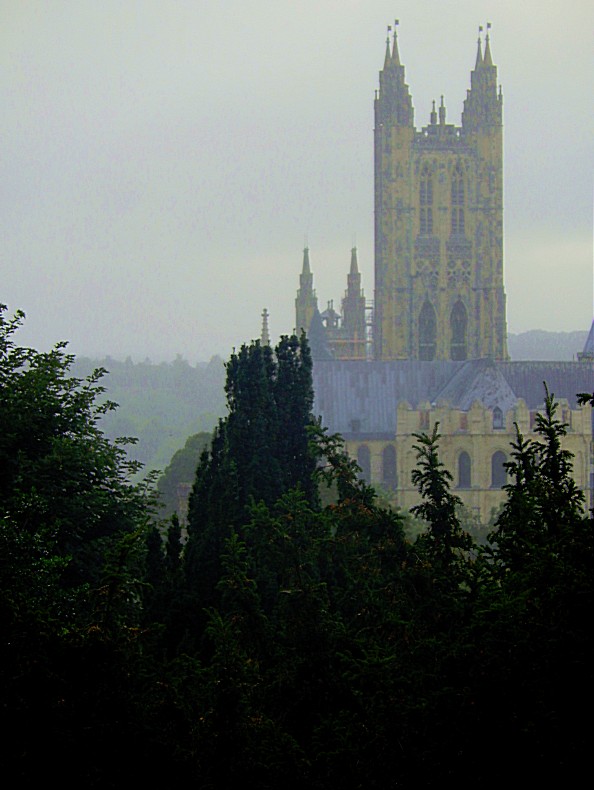
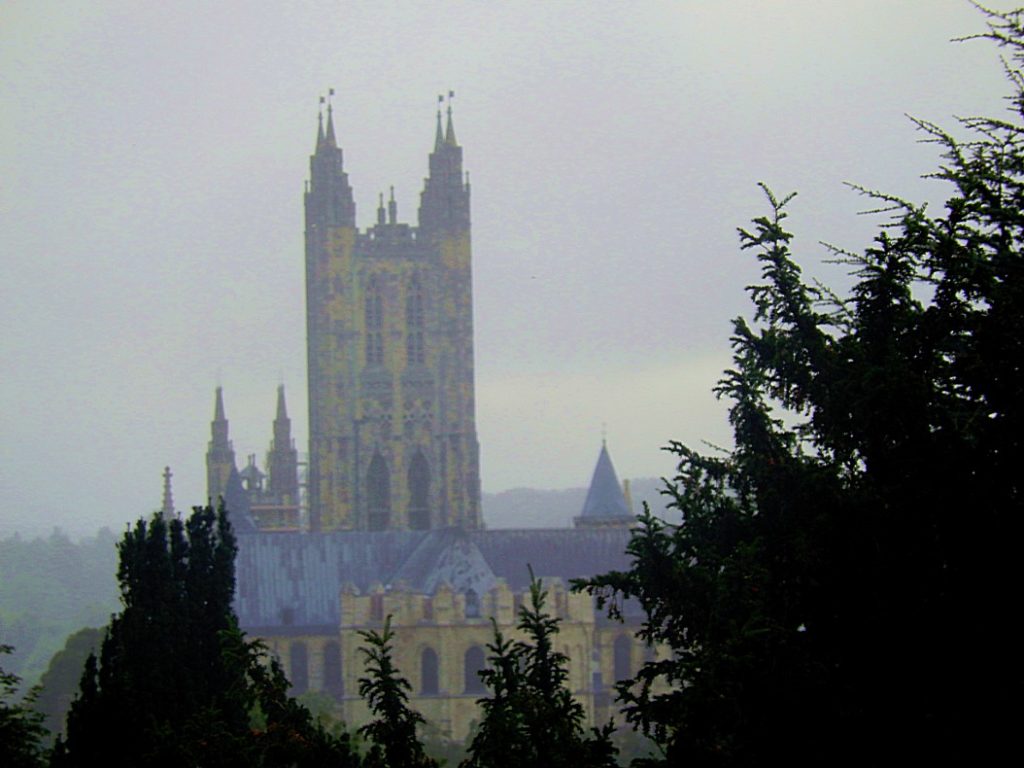
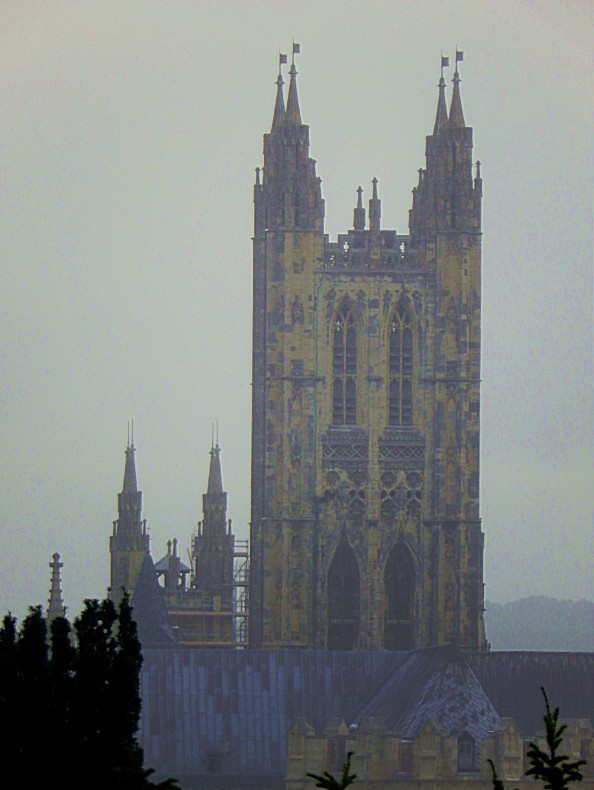
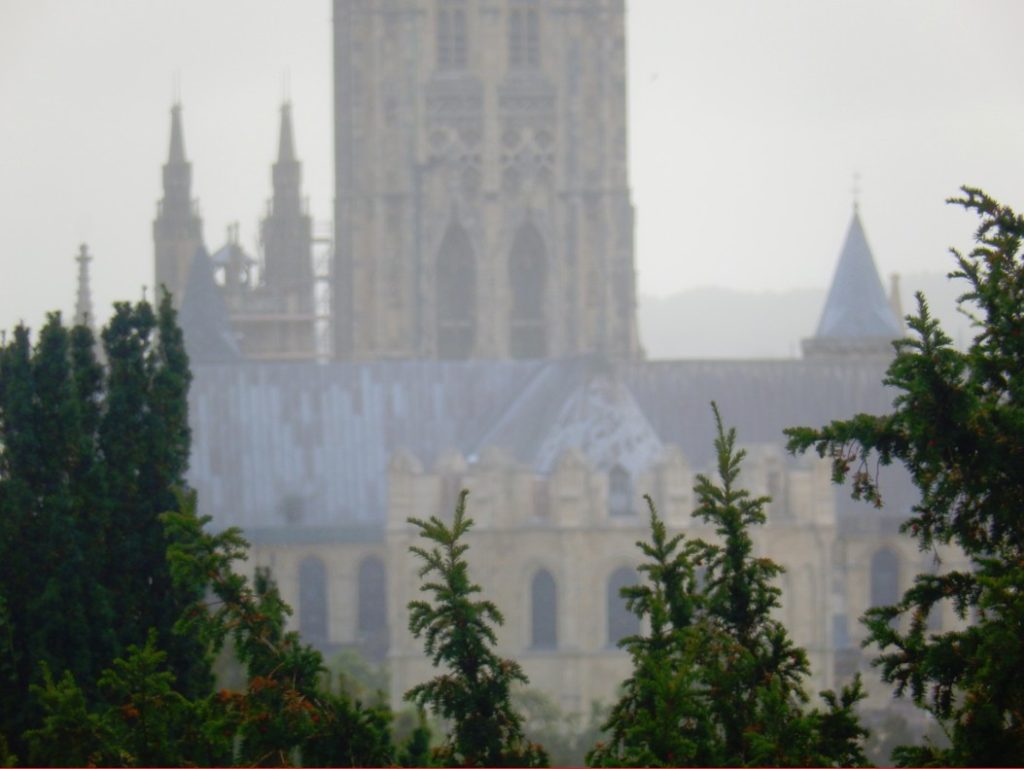
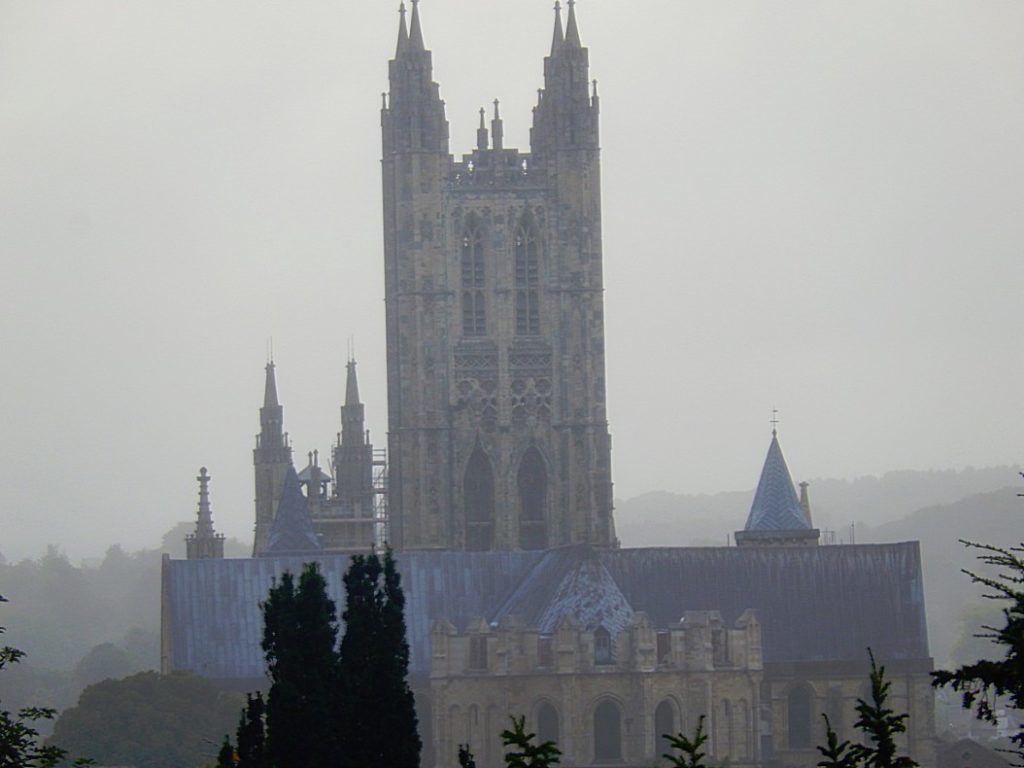
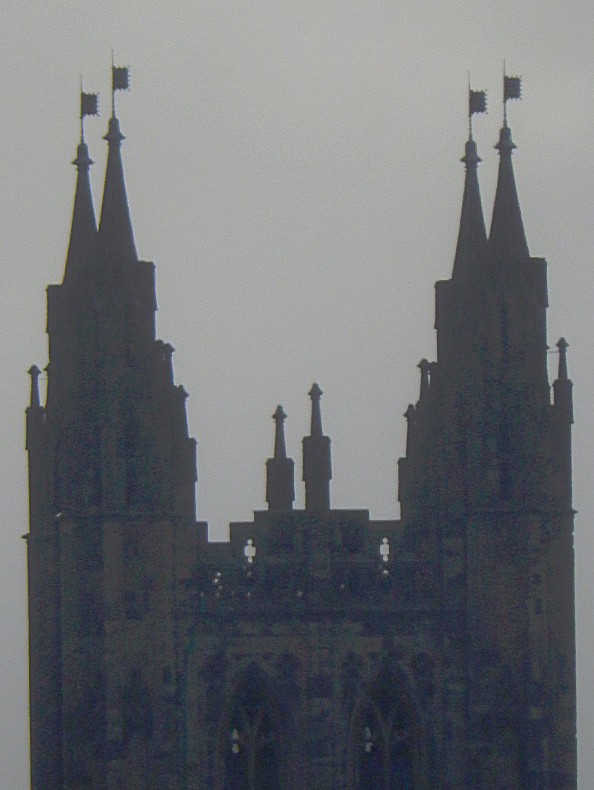
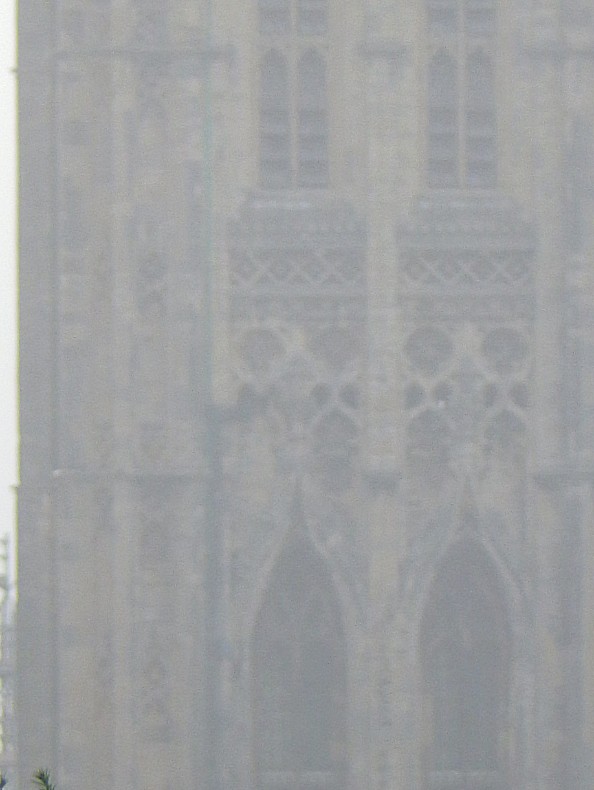
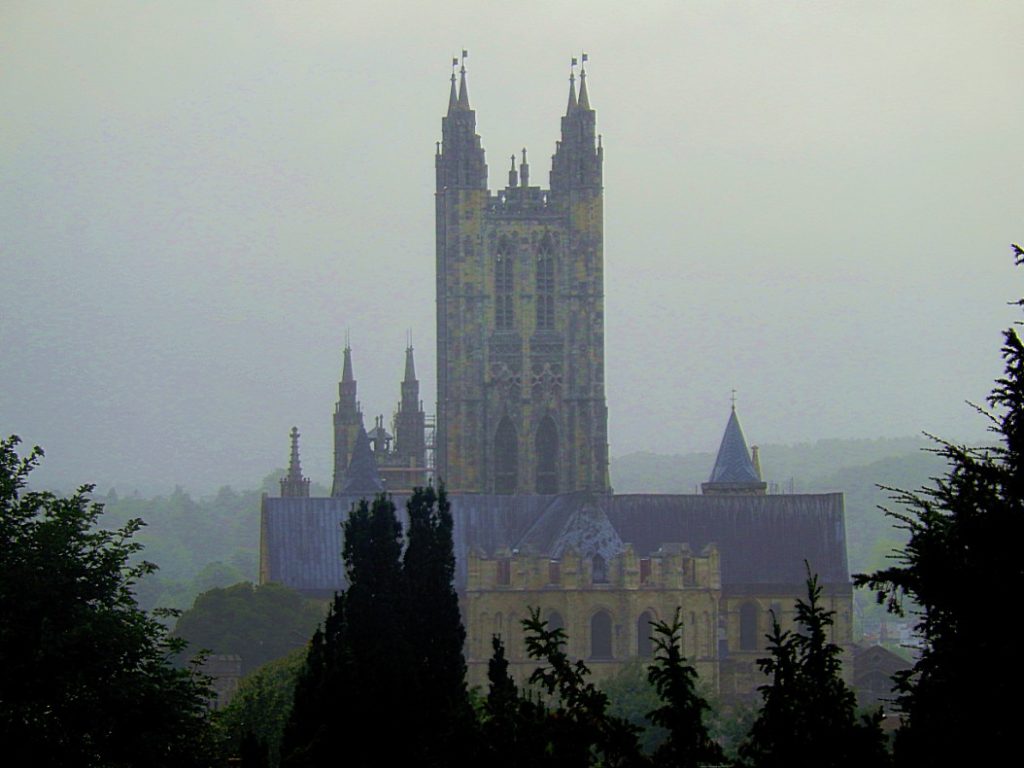
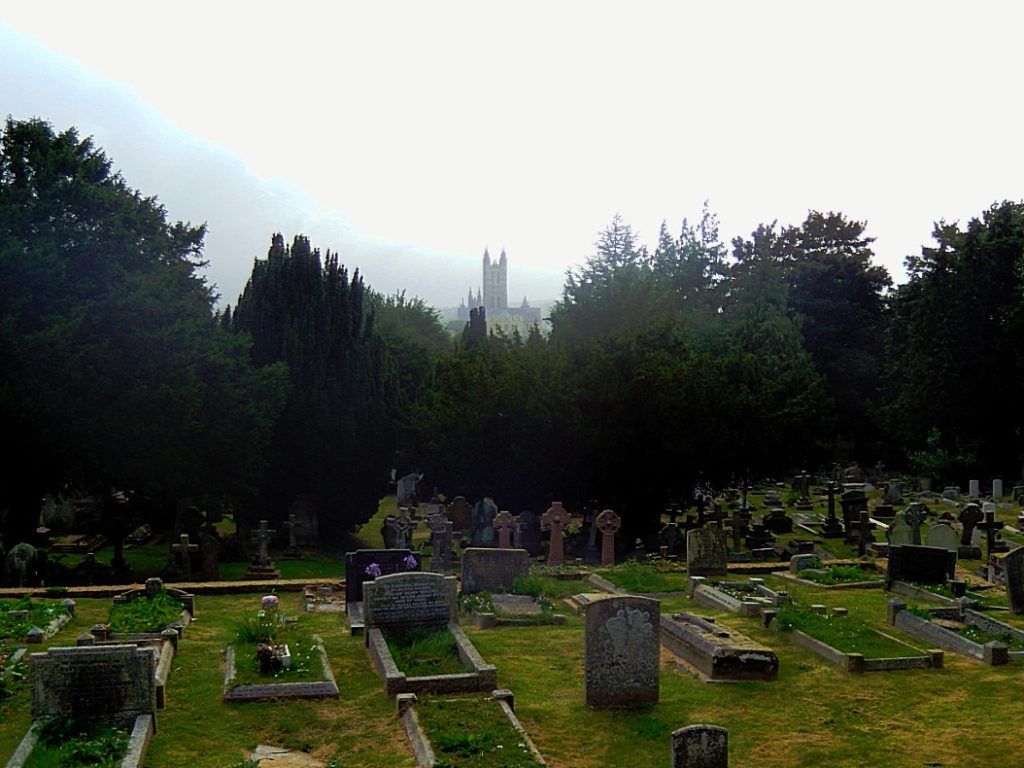
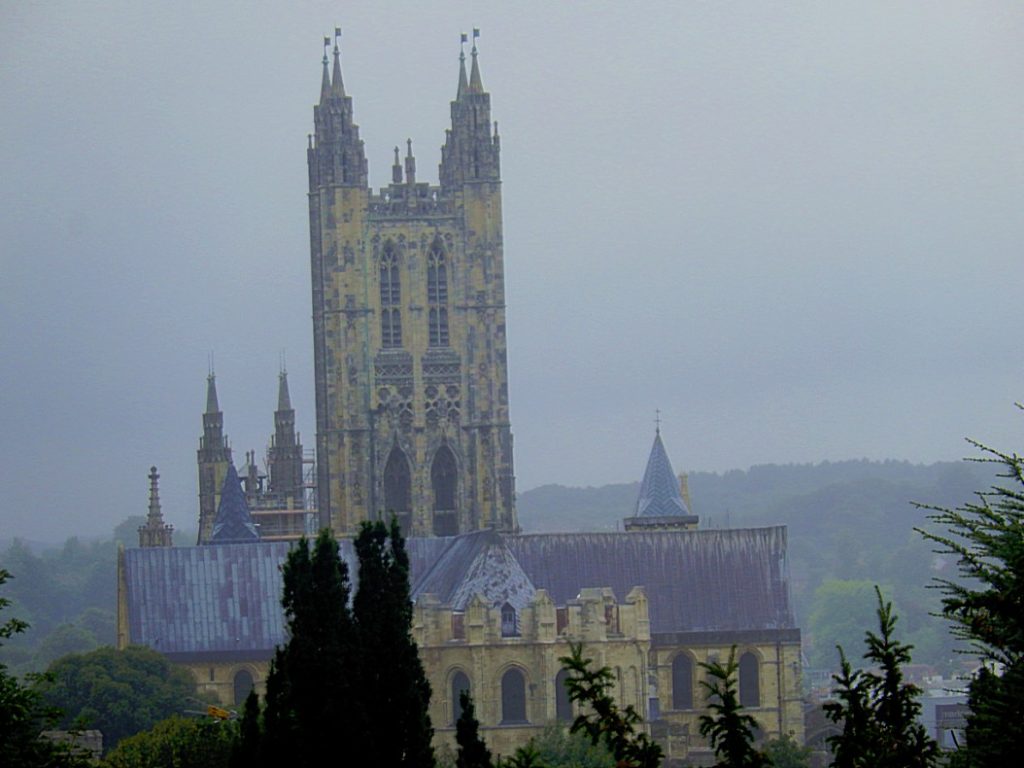
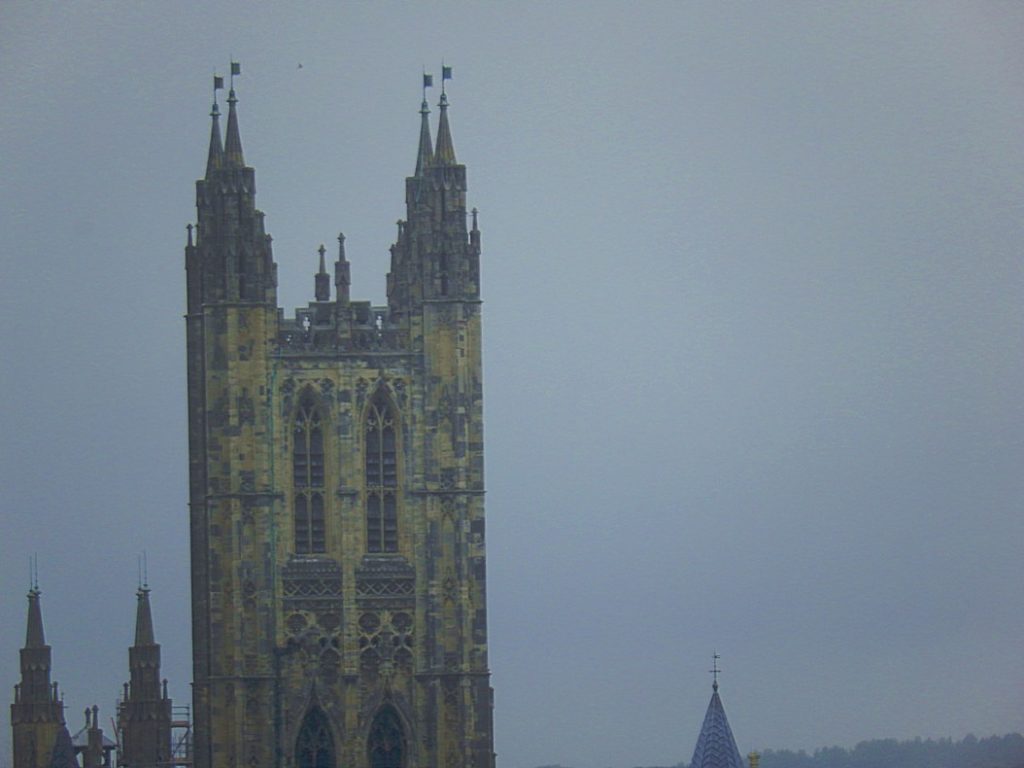
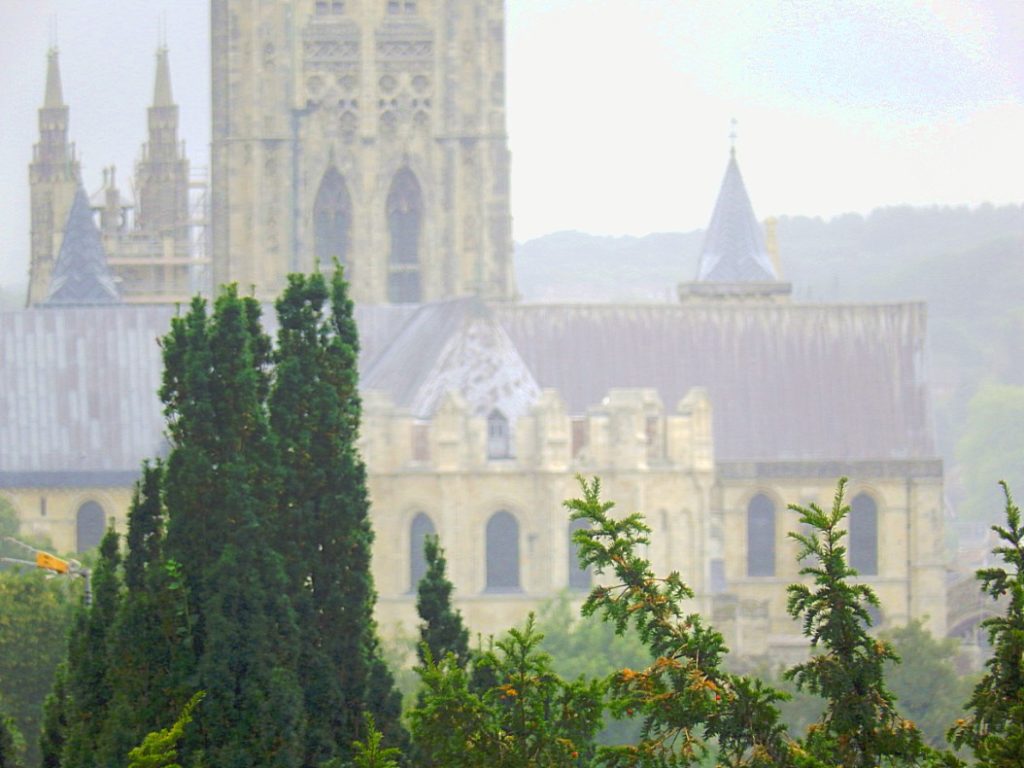
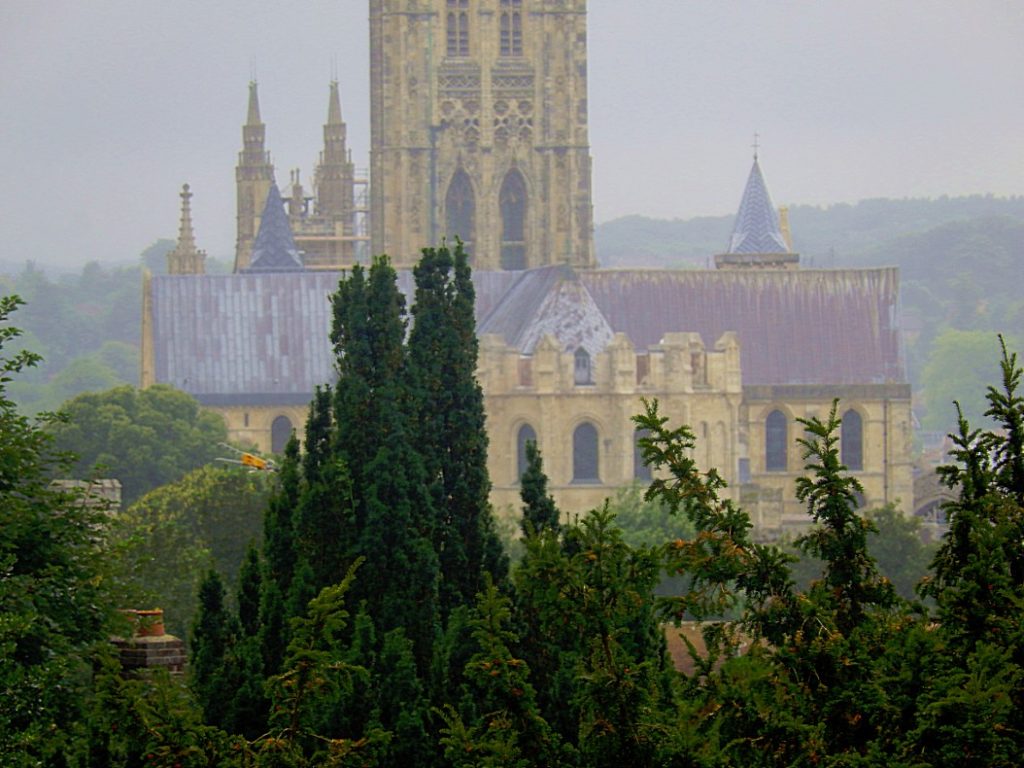
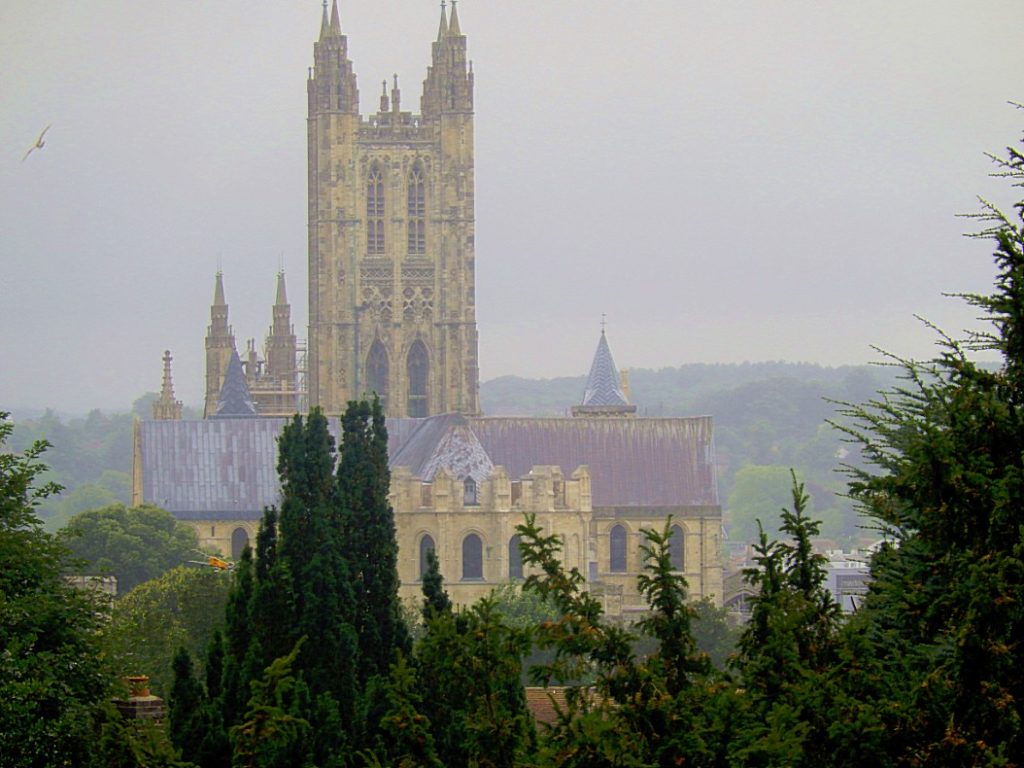
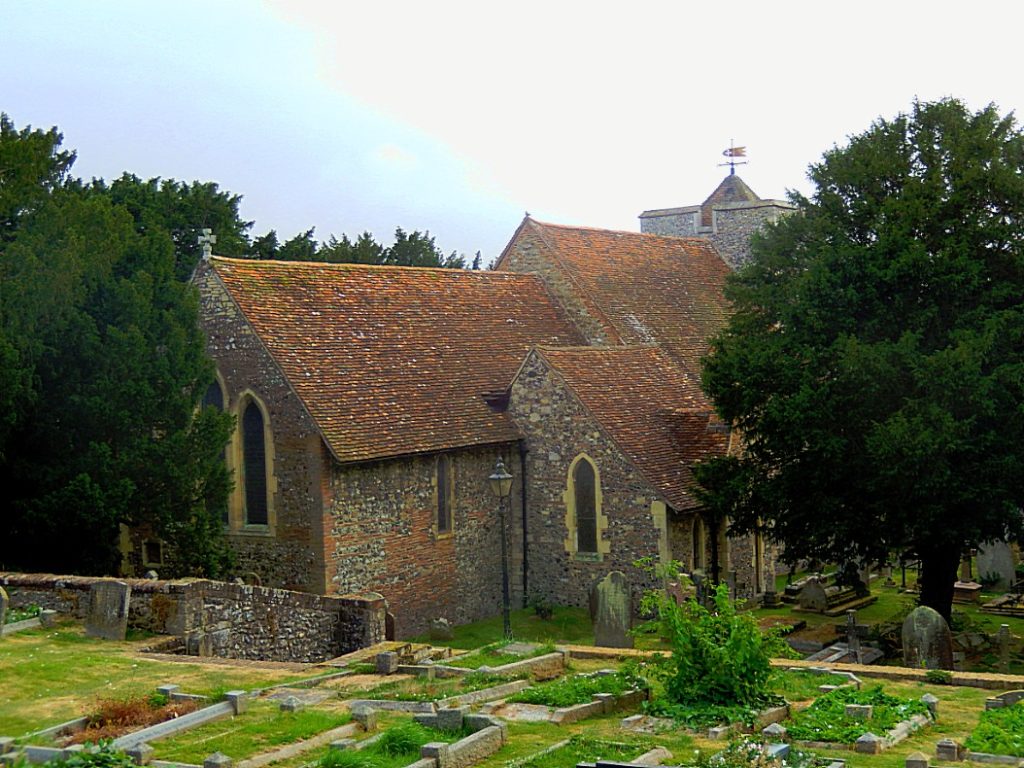
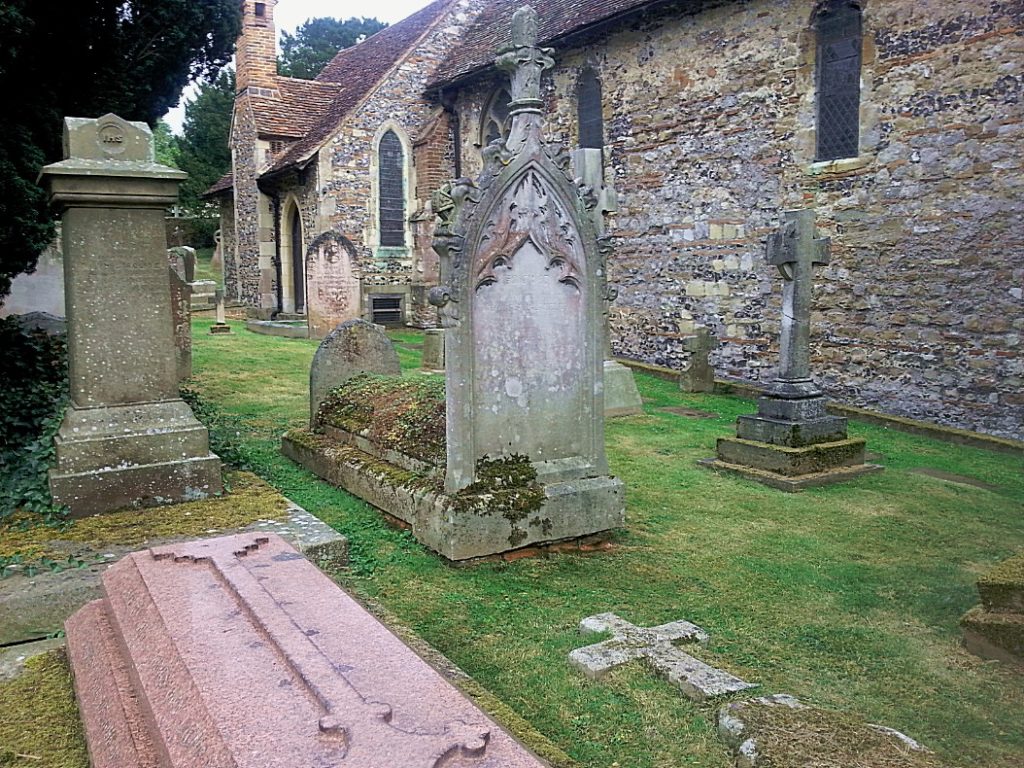
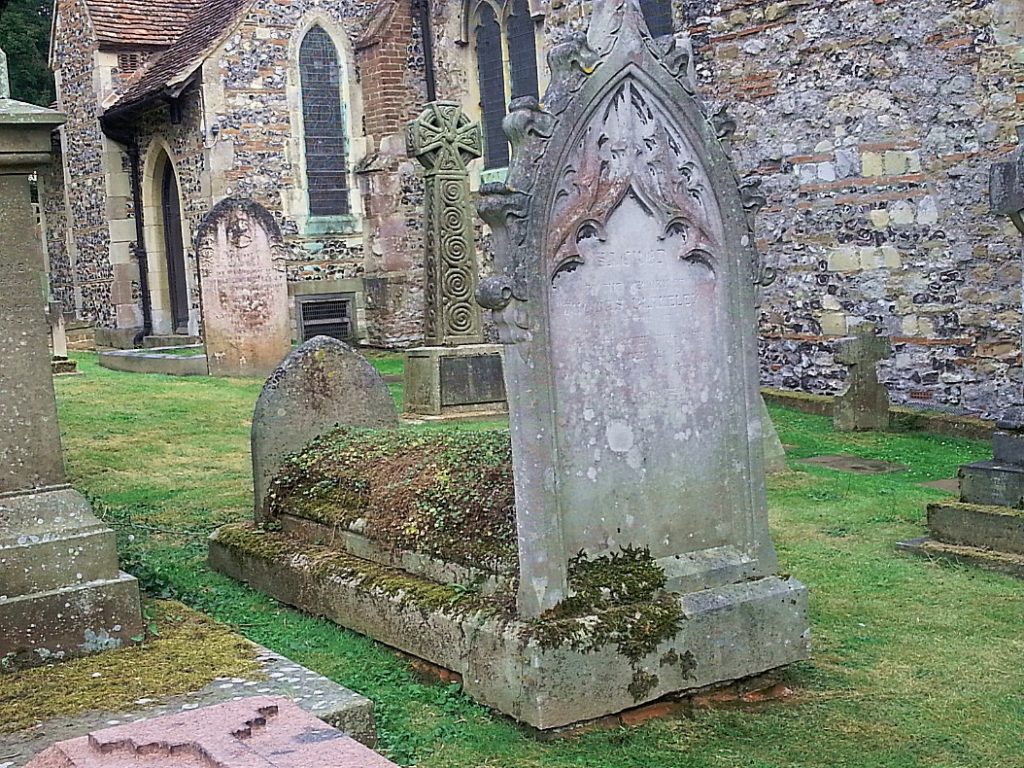
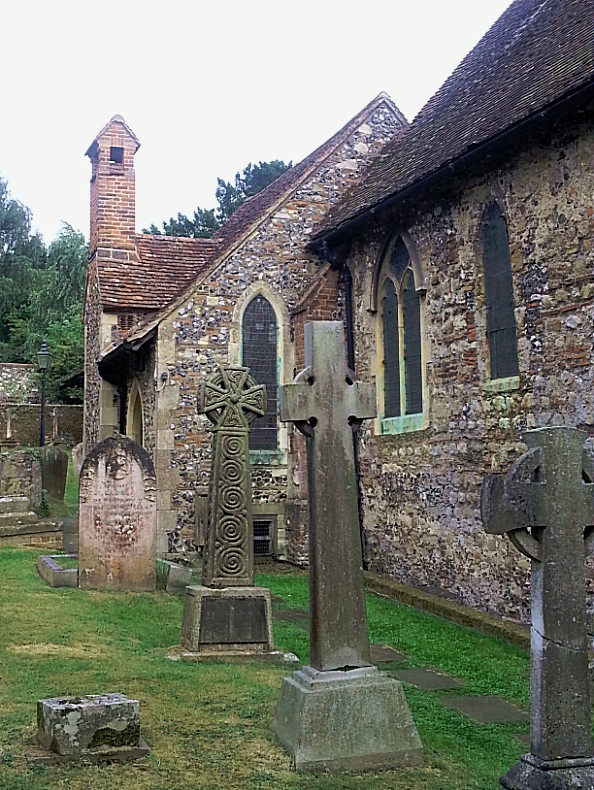
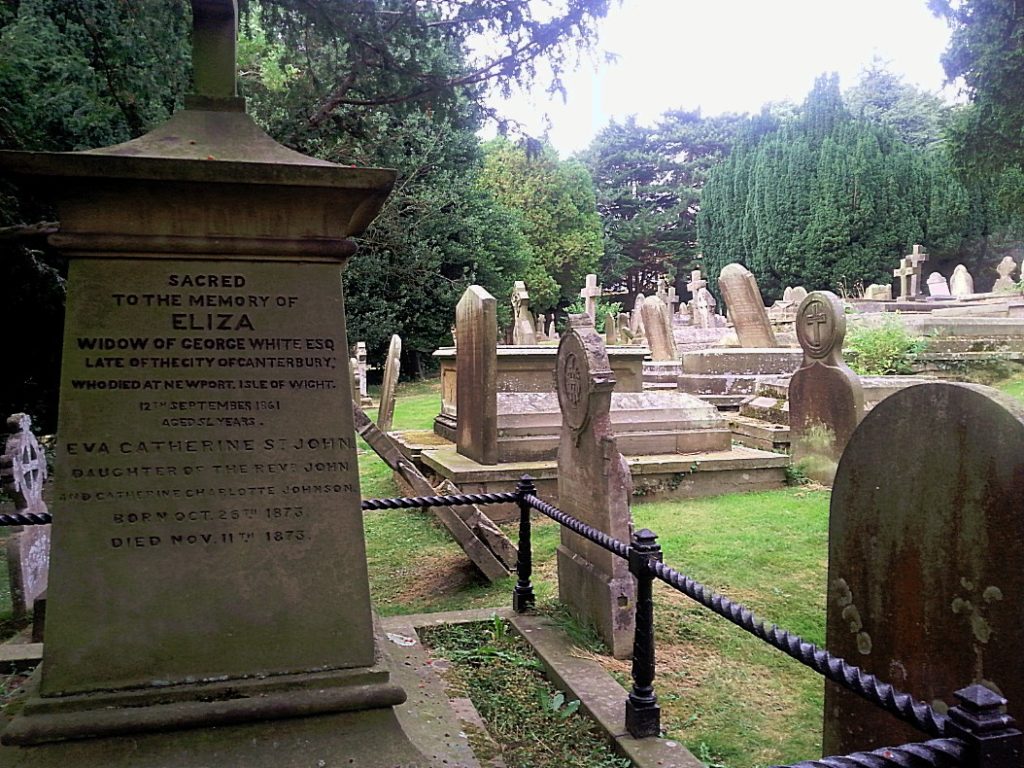
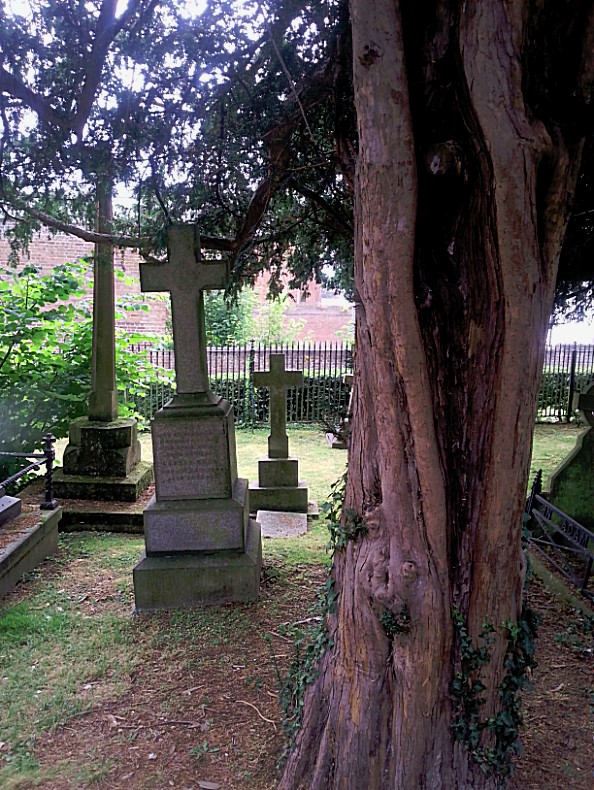
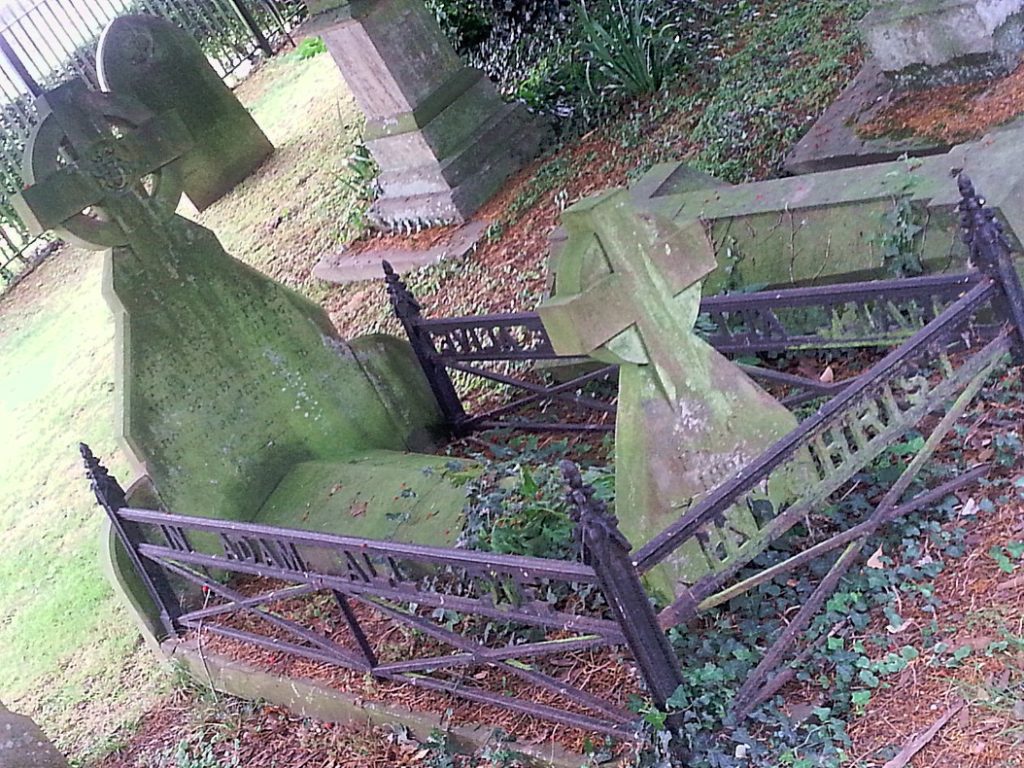
A really great site – thank you so much for posting the photos and info on the Canterbury Heritage Museum, which was closed when I visited two weeks ago (I was told it is open on certain occasions, so probably worth phoning). I learnt a lot about the city’s history, and was also fascinated by the Mary Tourtel and Rupert Bear info. I paid a brief visit to St Martin’s church, but had no idea that the grave of such a famous illustrator/author was there, so next time will surely pay my respects. I’ve just ordered two of the late (tragically disgraced at the end of his celebrated career) William Mayne’s adventure stories set in the King’s School, “A Swarm in May” (1955) and “Choristors’ Cake” (1956), which will add to my understanding and appreciation of this amazing city. So much to see, discover, enjoy and explore. Can’t wait for my next visit. A brilliant medieval writer to bear in mind is John of Salisbury, who wrote some of the earliest and finest poetry relating to Canterbury in the mid-12th century (“Entheticus” Part 2 – “Canterbury and its angel” – partly available via Google Books.)